Final Summer I 2024 Application Deadline is June 2, 2024.
Click here to apply.


Featured Posts

10 Reasons Why You Should Apply to APA’s Internship for High School Students

Stanford STaRS Internship Program - Is It Worth It?

How to Show Demonstrated Interest - 8 Tips for College Admissions

10 Free Summer Math Programs for High School Students

10 Online Summer Camps for Middle School Students

6 Entrepreneurship Internships that You Should Check out as a High School Student

10 Free Biology Summer Programs for High School Students

10 Free Programs for High School Students in California

NASA's High School Aerospace Scholars - 7 Reasons Why You Should Apply

10 Film Internships for High School Students
10 Great Research Topics for Middle School Students
Middle school is the perfect time to start exploring the fascinating world of research, especially if you're passionate about STEM and the humanities. Engaging in research projects now not only feeds your curiosity but also develops critical thinking, problem-solving skills, and a love for learning. Whether you're intrigued by the secrets of the universe, the beauty of numbers, or the complexity of robotics, there's a research project that you can pursue to help you build your knowledge. Let's dive into some advanced yet accessible research topics that will challenge you and enhance your academic journey.
1. Program your own robot
What to do: Start by defining the purpose of your robot. Will it be a pet robot that follows you around, or perhaps a robot that can help carry small items from one room to another? Sketch your design on paper, focusing on what sensors and motors you'll need. For instance, a robot that follows light might need light sensors, while a robot that avoids obstacles will require ultrasonic sensors. Use an Arduino or Raspberry Pi as the brain. You'll need to learn basic programming in Python (for Raspberry Pi) or C++ (for Arduino) to code your robot's behavior.
Tips to get started: The official websites for Arduino and Raspberry Pi offer tutorials for beginners. For more specific projects, such as building a pet robot, search for guides on Instructables that detail each step from hardware assembly to software programming.
2. Design a solar-powered oven
What to do: Investigate how solar ovens work and the science behind solar cooking. Your oven can be as simple as a pizza box solar oven or more complex, like a parabolic solar cooker. Key materials include reflective surfaces (aluminum foil), clear plastic wrap to create a greenhouse effect, and black construction paper to absorb heat. Experiment with different shapes and angles to maximize the heat capture and cooking efficiency. Test your oven by trying to cook different foods and measure the temperature achieved and cooking time required.
Tips to get started: The Solar Cooking wiki is an excellent resource for finding different solar cooker designs and construction plans. YouTube also has numerous DIY solar oven tutorials. Document your process and results in a project journal, noting any changes in design that lead to improvements in efficiency.
3. Assess the health of a local ecosystem
What to do: Choose a local natural area, such as a stream, pond, or forest, and plan a series of observations and tests to assess its health. Key activities could include water quality testing (for pH, nitrates, and phosphates), soil testing (for composition and contaminants), and biodiversity surveys (identifying species of plants and animals present). Compile your data to evaluate the ecosystem's health, looking for signs of pollution, habitat destruction, or invasive species.
Tips to get started: For a comprehensive approach, NOAA’s Global Monitoring Laboratory provides information on atmospheric and environmental monitoring techniques. Tools like iNaturalist can assist in species identification, and water and soil testing kits are available from science education suppliers.
4. Develop an educational app
What to do: Identify a gap in educational resources that your app could fill. Perhaps you noticed that students struggle with a particular math concept, or there's a lack of engaging resources for learning a foreign language. Outline your app’s features, design the user interface, and plan the content it will deliver. Use MIT App Inventor for a drag-and-drop development experience, or Scratch for a game-like educational app. Test your app with classmates or family members, and use their feedback for improvements.
Tips to get started: Both MIT App Inventor and Scratch provide tutorials and community forums where you can learn from others’ projects. Begin with a simple prototype, focusing on one core feature, and expand from there.
5. Model rocketry: design, build, and launch!
What to do: Dive into the basics of rocket science by designing your own model rocket. Understand the principles of thrust, aerodynamics, and stability as you plan your rocket. Materials can range from simple kits available online to homemade components for the body, fins, and nose cone. Educate yourself on the proper engine selection for your design and the recovery system to ensure your rocket returns safely. Conduct a launch in a safe, open area, following all safety guidelines.
Tips to get started: The National Association of Rocketry is a treasure trove of information on model rocket safety, design, and launch procedures. For beginners, consider starting with a kit from Estes Rockets , which includes all necessary components and instructions.
6. Create a wearable electronic device
What to do: Envision a wearable device that solves a problem or enhances an aspect of daily life. It could be a smart bracelet that reminds you to stay hydrated or a hat with integrated LEDs for nighttime visibility. Sketch your design, listing the components you'll need, such as LEDs, sensors, a power source, and a microcontroller like the Adafruit Flora or Gemma. Plan your circuit, sew or assemble your device, and program it to function as intended.
Tips to get started: Adafruit’s Wearables section offers guides and tutorials for numerous wearable projects, including coding and circuit design. Start with a simple project to familiarize yourself with electronics and sewing conductive thread before moving on to more complex designs.
7. Explore the science of slime and non-Newtonian fluids
What to do: Conduct experiments to understand how the composition of slime affects its properties. Create a standard slime recipe using glue, borax (or contact lens solution as a safer alternative), and water. Alter the recipe by varying the amounts of each ingredient or adding additives like cornstarch, shaving cream, or thermochromic pigment. Test how each variation affects the slime’s viscosity, stretchiness, and reaction to pressure.
Tips to get started: The Science Bob website offers a basic slime recipe and the science behind it. Document each experiment carefully, noting the recipe used and the observed properties. This will help you understand the science behind non-Newtonian fluids.
8. Extract DNA at home
What to do: Use common household items to extract DNA from fruits or vegetables, like strawberries or onions. The basic process involves mashing the fruit, adding a mixture of water, salt, and dish soap to break down cell membranes, and then using cold alcohol to precipitate the DNA out of the solution. Observe and analyze the DNA strands.
Tips to get started: Detailed instructions and the science explanation are available at the Genetic Science Learning Center . This project offers a tangible glimpse into the molecular basis of life and can be a springboard to more complex biotechnology experiments.
9. Investigate the efficiency of different types of solar cells
What to do: Compare the efficiency of various solar panels, such as monocrystalline, polycrystalline, and thin-film. Design an experiment to measure the electrical output of each type under identical lighting conditions, using a multimeter to record voltage and current. Analyze how factors like angle of incidence, light intensity, and temperature affect their performance.
Tips to get started: Introductory resources on solar energy and experiments can be found at the Energy.gov website. Consider purchasing small solar panels of different types from electronics stores or online suppliers. Ensure that all tests are conducted under controlled conditions for accurate comparisons.
10. Study ocean acidification and its effects on marine life
What to do: Simulate the effects of ocean acidification on marine organisms in a controlled experiment. Use vinegar to lower the pH of water in a tank and observe its impact on calcium carbonate shells or skeletons, such as seashells or coral fragments. Monitor and record changes over time, researching how acidification affects the ability of these organisms to maintain their shells and skeletons.
Tips to get started: NOAA’s Ocean Acidification Program offers educational materials and experiment ideas. For a simpler version of this experiment, see instructions for observing the effects of acidified water on eggshells, which are similar in composition to marine shells, at educational websites like Science Buddies .
By pursuing these projects, you will not only gain a deeper understanding of STEM principles but also develop invaluable skills in research, design, and critical analysis. These projects will teach you how to question, experiment, and innovate, laying the groundwork for future scientific inquiries and discoveries.
One other option – Lumiere’s Junior Explorer Program
The Lumiere Junior Explorer Program is a program for middle school students to work one-on-one with a mentor to explore their academic interests and build a project they are passionate about . Our mentors are scholars from top research universities such as Harvard, MIT, Stanford, Yale, Duke and LSE.
The program was founded by a Harvard & Oxford PhD who met as undergraduates at Harvard. The program is rigorous and fully virtual. We offer need based financial aid for students who qualify. You can find the application in the brochure !
To learn more, you can reach out to our Head of Growth, Khushi Malde, at [email protected] or go to our website .
Multiple rolling deadlines for JEP cohorts across the year, you can apply using this application link ! If you'd like to take a look at the cohorts + deadlines for 2024, you can refer to this page!
Stephen is one of the founders of Lumiere and a Harvard College graduate. He founded Lumiere as a PhD student at Harvard Business School. Lumiere is a selective research program where students work 1-1 with a research mentor to develop an independent research paper.
- middle school students

Learning Space
Teachable Moments
Stay Connected

Edu News | January 26, 2022
24 stem lessons you can quickly deploy in the classroom.
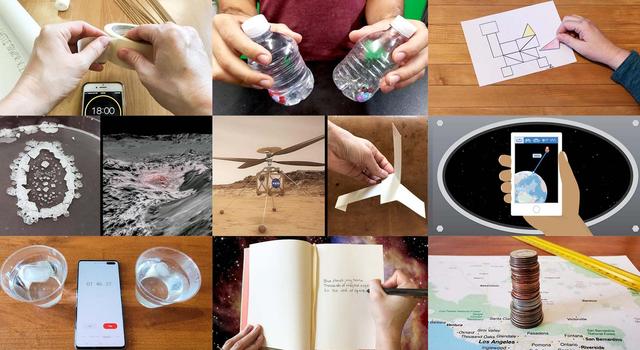
Calling all teachers pressed for time, substitutes looking for classroom activities that don't require a lot of prep, and others hoping to keep students learning in especially chaotic times: We've got a new collection of lessons and activities that you can quickly deploy.
Read on to explore our collection of Quick and Easy STEM lessons and student activities , organized by grade band. Get everything you need to guide students through standards-aligned lessons featuring connections to real NASA missions and science as well as links to student projects, which can be led by teachers or assigned as independent activities.
Grades 9-12
Explore More
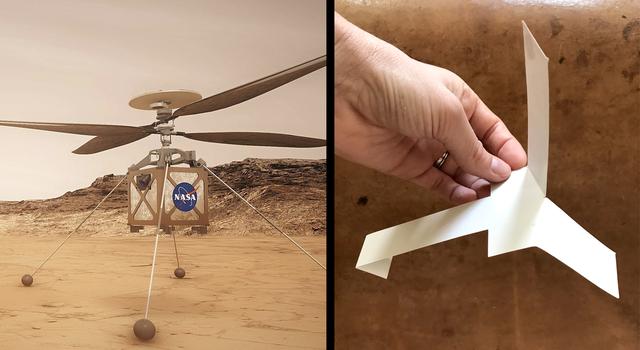
Make a Paper Mars Helicopter
In this lesson, students build a paper helicopter, then improve the design and compare and measure performance.
Subject Engineering
Time 30-60 mins
Student Project: Make a Paper Mars Helicopter
Build a paper helicopter, then see if you can improve the design like NASA engineers did when making the first helicopter for Mars.
What Tools Would You Take to Mars?
Students decide what they want to learn from a robotic mission to Mars and what tools they will put on their robot to accomplish their goals.
Subject Science
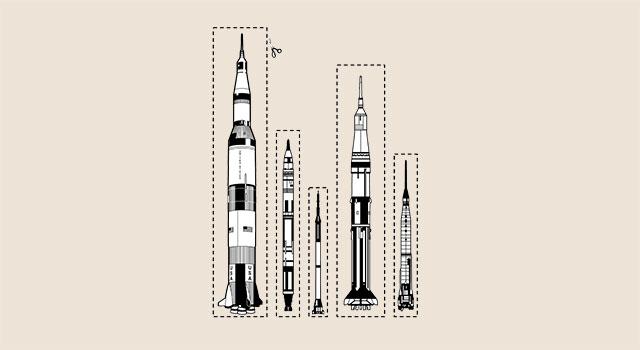
Rockets by Size
Students cut out, color and sequence paper rockets in a simple mathematics lesson on measurement.
Subject Math
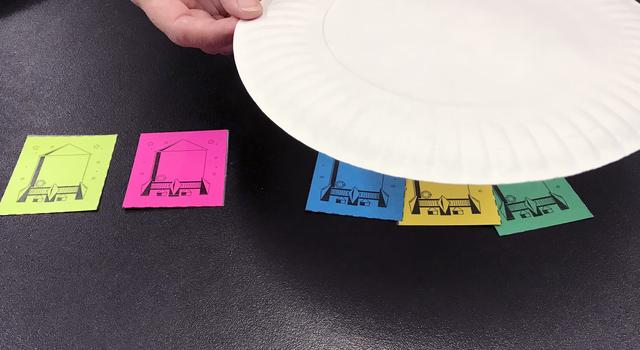
Rocket Math
Students use rocket manipulatives to help them develop number sense, counting, addition and subtraction skills.

Tangram Rocket
Students use tangrams to create rockets while practicing shape recognition.
Time 1-2 hrs

Student Project: Build a Rover and More With Shapes
Use geometric shapes called tangrams to build a rover and other space-themed designs!
Time Less than 30 mins
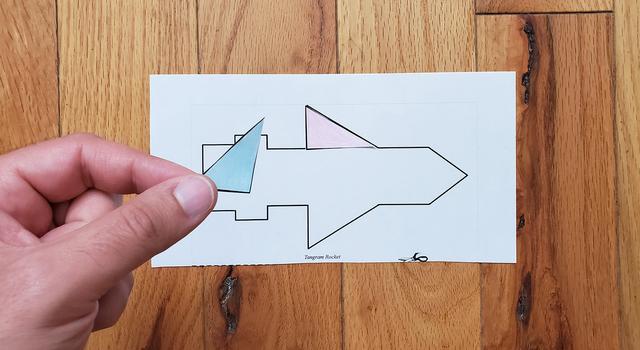
Student Project: Build a Rocket and More With Shapes
Use geometric shapes called tangrams to build a rocket and other space-themed designs!
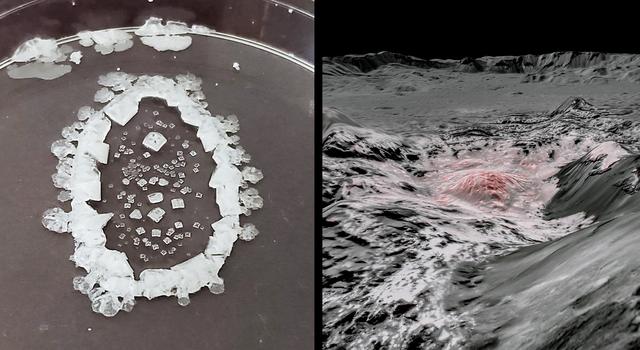
Mineral Mystery Experiment
Students explore the science behind an intriguing planetary feature by creating saline solutions and then observing what happens when the solutions evaporate.
Grades 2-12
Time 2 sessions of 30-60 mins

Student Project: Do a Mineral Mystery Experiment
Dissolve salts in water, then observe what happens when the water evaporates.
What Do You Know About Mars?
Students decide what they want to learn from a robotic mission to Mars.
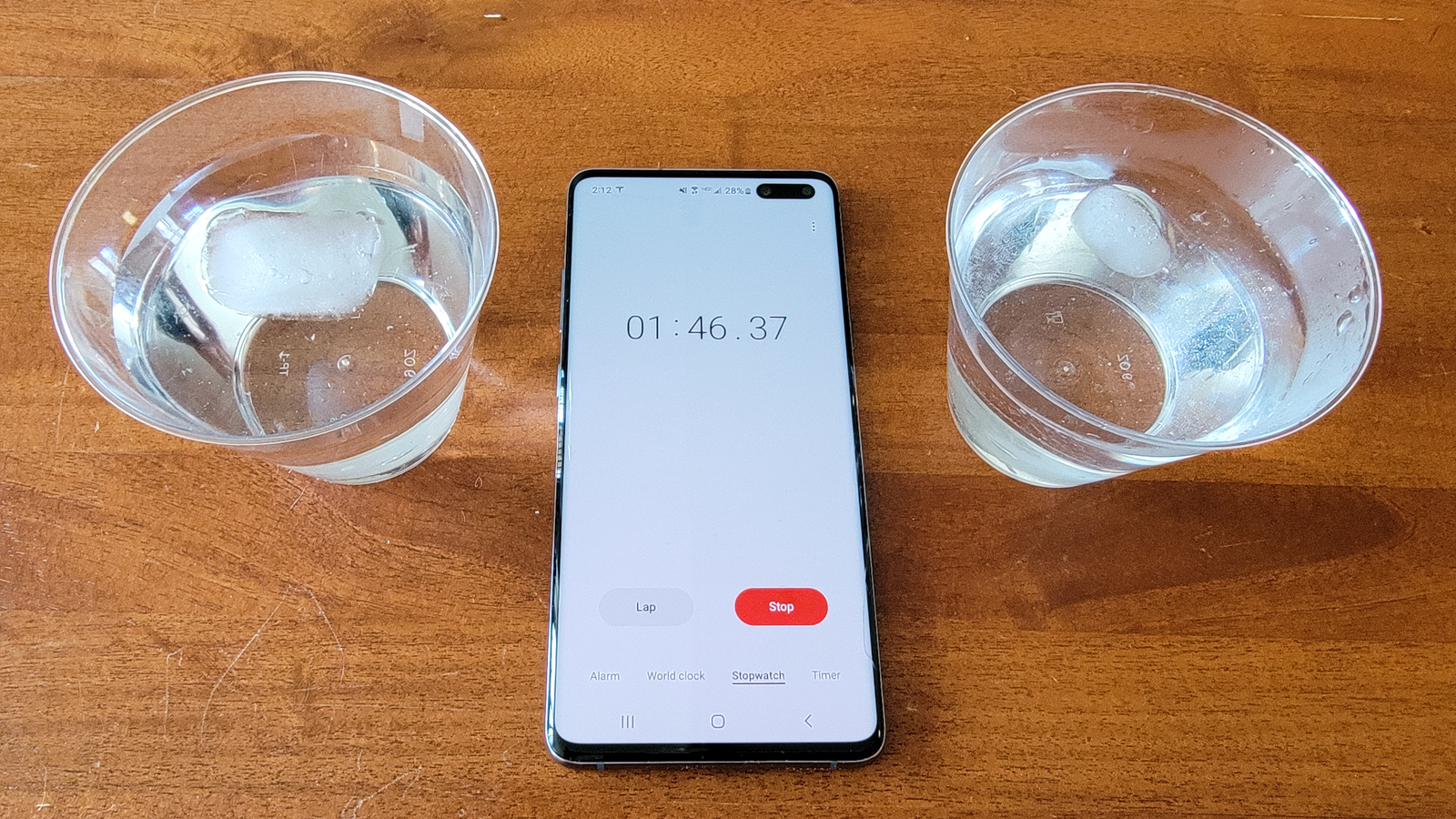
Melting Ice Experiment
Students make predictions and observations about how ice will melt in different conditions then compare their predictions to results as they make connections to melting glaciers.
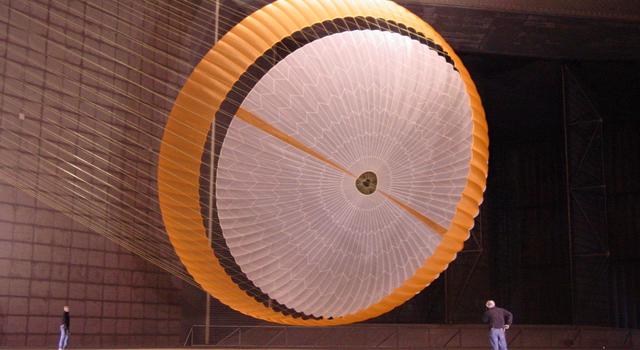
Parachute Design
Students design and test parachute landing systems to successfully land a probe on target.
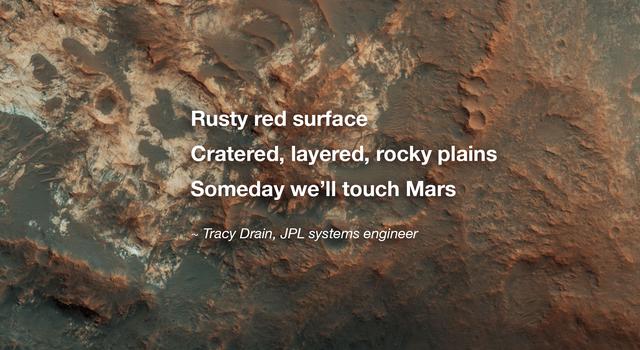
Planetary Poetry
In this cross-curricular STEM and language arts lesson, students learn about planets, stars and space missions and write STEM-inspired poetry to share their knowledge of or inspiration about these topics.

Student Project: Write a Poem About Space
Are you a space poet, and you didn't even know it? Find out how to create your own poems inspired by space!

Ocean World: Earth Globe Toss Game
Students use NASA images and a hands-on activity to compare the amounts of land and surface water on our planet.
Simple Rocket Science Continued
Students gather data on a balloon rocket launch, then create a simple graph to show the results of the tests.
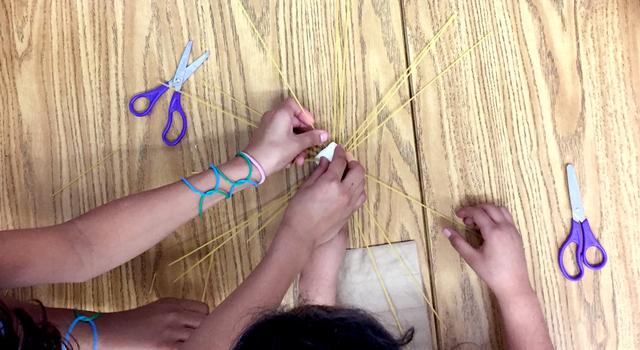
Spaghetti Anyone? Building with Pasta
Students use the engineering design process to build a structure to handle the greatest load and gain first-hand experience with compression and tension forces.

Student Project: Building With Spaghetti
Use spaghetti to build a tower modeled after the giant structures NASA uses to talk to spacecraft.
Simple Rocket Science
Students perform a simple science experiment to learn how a rocket works and demonstrate Newton’s third law of motion.
Soda-Straw Rockets
Students study rocket stability as they design, construct and launch paper rockets using soda straws.
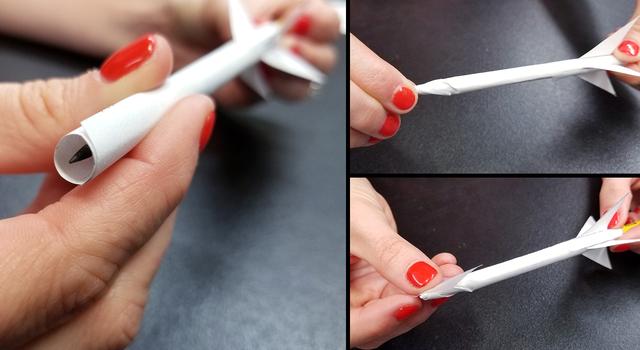
Student Project: Make a Straw Rocket
Create a paper rocket that can be launched from a soda straw – then, modify the design to make the rocket fly farther!

Rocket Activity: Heavy Lifting
Students construct balloon-powered rockets to launch the greatest payload possible to the classroom ceiling.

Design a Robotic Insect
Students design a robotic insect for an extraterrestrial environment, then compare the process to how NASA engineers design robots for extreme environments like Mars.
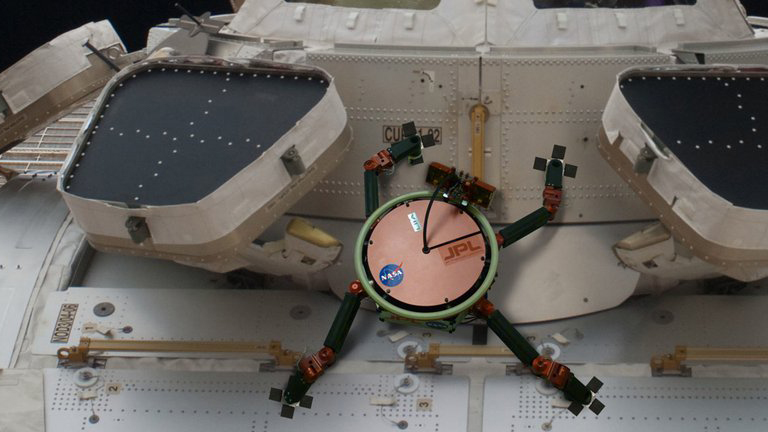
Student Project: Design a Robotic Insect
Design a robotic insect to go to an extreme environment. Then, compare the design process to what NASA engineers do when building robots for Mars!

How Far Away Is Space?
Students use measurement skills to determine the scale distance to space on a map.
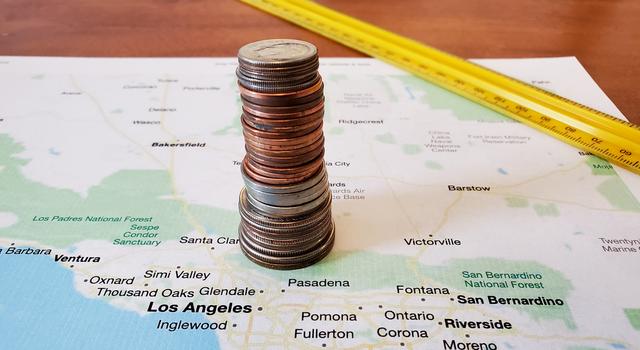
Student Project: How Far Away Is Space?
Stack coins and use your measurement skills to figure out the scale distance from Earth's surface to space.

Planetary Travel Time
Students will compute the approximate travel time to planets in the solar system using different modes of transportation.
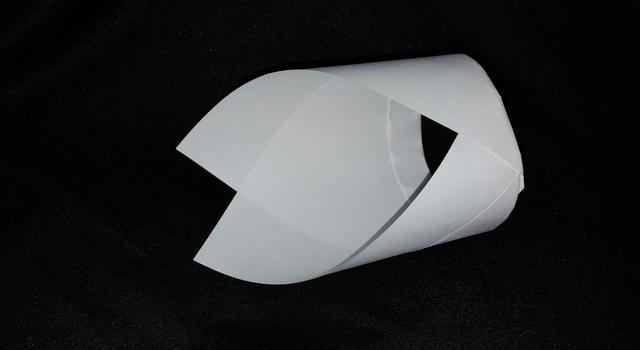
The Ring Wing Glider
In this simple engineering design lesson, students turn a piece of paper into an aircraft wing and then try to improve upon their design.
Student Project: Make a Paper Glider
Turn a piece of paper into a glider inspired by a NASA design.
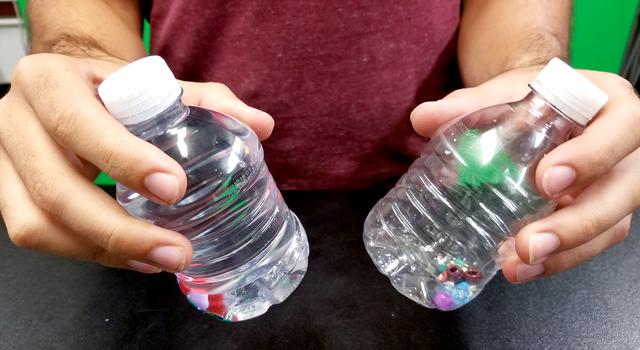
How Do We See Dark Matter?
Students will make observations of two containers and identify differences in content, justify their claims and make comparisons to dark matter observations.
Grades 6-12
Let's Go to Mars! Calculating Launch Windows
Students use advanced algebra concepts to determine the next opportunity to launch a spacecraft to Mars.
Find our full collection of more than 250 STEM educator guides and student activities in Teach and Learn .
For games, articles, and more activities from NASA for kids in upper-elementary grades, visit NASA Space Place and NASA Climate Kids .
Explore more educational resources and opportunities for students and educators from NASA STEM Engagement .
TAGS: Lessons , Teachers , Educators , Parents , Substitutes , Activities , Students , Science , Engineering , Quick and Easy

Kim Orr , Web Producer, NASA-JPL Education Office
Kim Orr is a web and content producer for the Education Office at NASA's Jet Propulsion Laboratory. Her pastimes are laughing and going on Indiana Jones style adventures.

- Math for Kids
- Parenting Resources
- ELA for Kids
- Teaching Resources

15 Famous Mathematicians in History That Kids Should Know
11 Best Multiplication Apps for Kids
How to Teach Number Formation in 5 Easy Steps
13 Best Resources for Math Videos for Kids: Math Made Fun
How to Teach Skip Counting to Kids in 9 Easy Steps
6 Best Alternatives to Public Schooling: A Guide for Parents
How to Cope With Test Anxiety in 12 Easy Ways
Developmental Milestones for 4 Year Olds: The Ultimate Guide
Simple & Stress-Free After School Schedule for Kids of All Ages
When Do Kids Start Preschool: Age & Readiness Skills
40 Best Summer Writing Prompts for Kids of All Ages
12 Best Ways to Teach Rhyming Words to Kids
How to Teach Letter Sound in 6 Easy Steps
How to Teach Letter Formation to Kids in 9 Easy Steps
15 Best Literacy Activities for Preschoolers in 2024
10 Best Game-Based Learning Platforms for Kids
60 Fun Animal Facts for Kids
12 Best Behavior Management Techniques for the Classroom
13 Best Online Teaching Tips for Teachers
How to Teach Kids to Write in 9 Easy Steps

50 Best STEM Projects for Middle School Kids
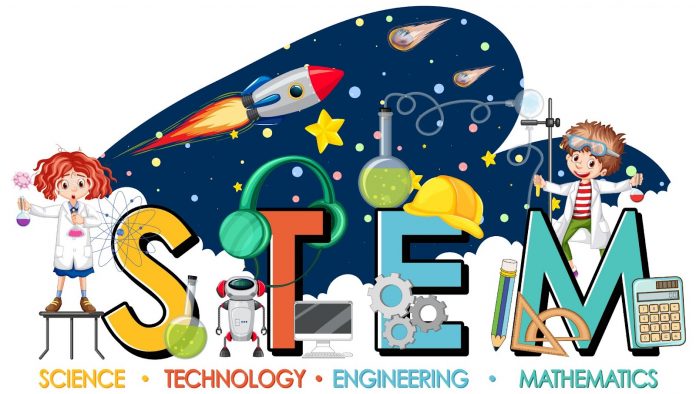
Science Activities for Middle Schoolers
Technology activities for middle schoolers, engineering activities for middle schoolers, math activities for middle schoolers.
- Interactive Learning Stations
- Outdoor Laboratories
- Technology Enhanced Playgrounds
- Innovative Equipment
STEM projects for middle school are an excellent way to engage young minds and spark their curiosity in science, technology, engineering, and math. Research supports that STEM activities positively impact the scientific creativity of middle school students. These exercises give students an enjoyable learning experience and promote critical thinking and problem-solving abilities .
SplashLearn: Most Comprehensive Learning Program for PreK-5

SplashLearn inspires lifelong curiosity with its game-based PreK-5 learning program loved by over 40 million children. With over 4,000 fun games and activities, it’s the perfect balance of learning and play for your little one.
Additionally, middle school STEM programs help foster interest in these subjects, develop skills, improve future job prospects, encourage creativity and innovation, and promote diversity and inclusivity. However, before delving into the exciting projects, it’s essential to understand why STEM programs in middle school are crucial for a student’s academic journey.
5 Essentials Of Middle School STEM Programs
In the modern work market, STEM education has increased. Students in middle school are at a pivotal point in their development, and exposure to STEM education can greatly impact how they grow academically and professionally. The following justifies the necessity of STEM programs in middle schools.
1. Fostering Interest in STEM
Middle school STEM programs offer an interactive and immersive approach to STEM education by providing hands-on opportunities for students to engage in projects and experiments, which can lead to deeper comprehension and enthusiasm for these subjects. The Journal of Pedagogical Research suggests that a STEM-focused learning environment can positively influence academic achievement in science. Moreover, STEM education provides students with practical applications of these topics in the real world, which fosters a heightened curiosity and drive for learning.
2. Developing Critical Thinking Skills
Problem-solving and critical thinking abilities are emphasized in STEM education. Students’ minds are still developing throughout middle school. Thus, STEM education can aid in the development of the abilities necessary for success in the real world.
3. Improving Future Job Prospects
Middle school STEM education can provide students with the essential abilities and skills necessary to pursue high-paying professions in the rapidly-growing STEM sectors of the contemporary economy.
4. Encouraging Creativity and Innovation
Middle school STEM programs have been known to be a catalyst for fostering creativity and innovation among students. This is because these programs equip students with the necessary skills to design, build, and test their projects, which can be quite perplexing. By undertaking middle school STEM programs, children can develop the courage and aptitude to take risks, think outside the box, and solve problems in novel and unexpected ways.
5. Promoting Diversity and Inclusivity
The benefits of STEM education extend beyond just individual development, as it can also promote diversity and inclusivity among students. Regardless of background, all students have equal opportunities to learn and succeed in STEM. By introducing students to a wide range of STEM occupations and showcasing the achievements of underrepresented groups in these industries, middle school STEM programs can inspire kids from diverse backgrounds to pursue their interests in these disciplines.
What Does STEM Education for Middle Schoolers Look Like?

Middle school STEM education is a way of teaching that focuses on science, technology, engineering, and math. It’s exciting and interactive, aiming to help students become skilled in these subjects. The main goal is to give students the knowledge and abilities they need to handle the many challenges of our ever-changing technology-driven world.
“STEM education is not just about learning scientific concepts and principles; it’s about developing critical thinking, problem-solving, and collaboration skills that will benefit students throughout their lives.” – Arne Duncan, former U.S. Secretary of Education.
Students are introduced to the fundamentals of STEM disciplines in middle school through practical, project-based learning . They investigate the scientific method, study the fundamentals of engineering and design, and become aware of the wonders of math and technology.
Middle schoolers can develop critical thinking skills, problem-solving abilities, and creativity through STEM education. Research suggest that STEM activities effectively develop positive views toward interdisciplinary education and 21st-century skills such as creativity, collaboration, critical thinking, and problem-solving. By engaging in STEM activities , students can also improve their science process skills, STEM career interests, motivation, and views about STEM education.
50 Best STEM Activities for Middle School Kids
Engaging in STEM activities for middle school kids, students can gain valuable skills and knowledge that will assist them in success in high school, college, and beyond. So, without further ado, let’s explore these best STEM activities for kids!
“STEM learning is vital for the future success of our students and our country. By engaging students in hands-on projects and encouraging their curiosity, we can inspire the next generation of innovators.” – Mae Jemison, former NASA astronaut and founder of the Jemison Group.
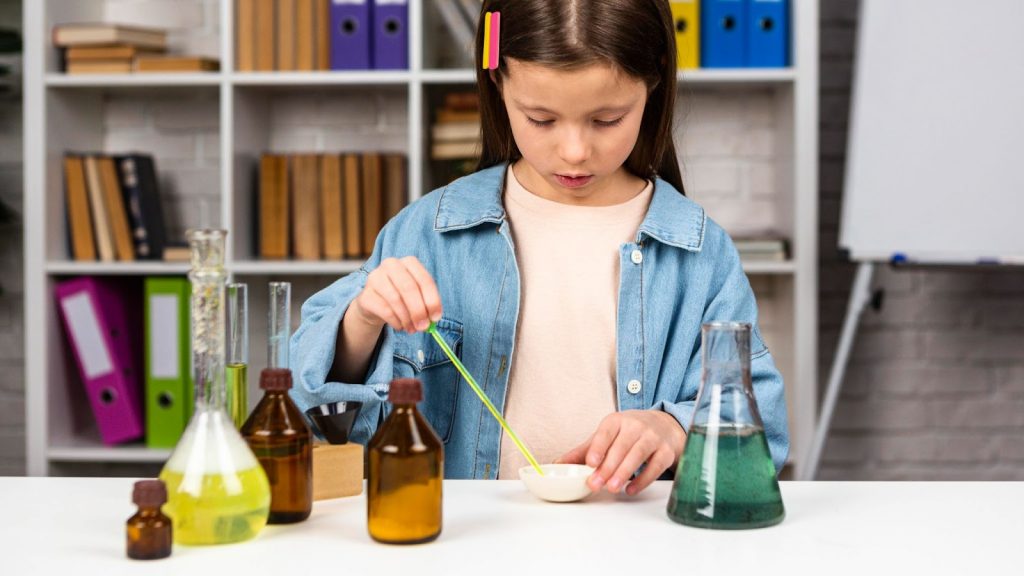
Science is essential to STEM education and can be incredibly engaging and exciting for middle schoolers. Here are some science-related STEM activities for middle school kids that can inspire young minds to discover the world around them.
- Chemical Reactions: Mix baking soda and vinegar to observe the fizzy reaction. Try other combinations like lemon juice and baking soda.
- Solar Oven: Cut a flap in a cardboard box and line it with foil. Place food inside and keep it in the sun to cook.
- Egg Drop Challenge: Gather materials like straws, paper, and tape. Create a protective structure around an egg and drop it from a height.
- Rock Candy Experiment: Dissolve sugar in hot water and grow crystals on a string suspended in the solution.
- Volcano Eruption: Build a clay volcano around a small bottle. Mix baking soda and vinegar inside the bottle for an eruption.
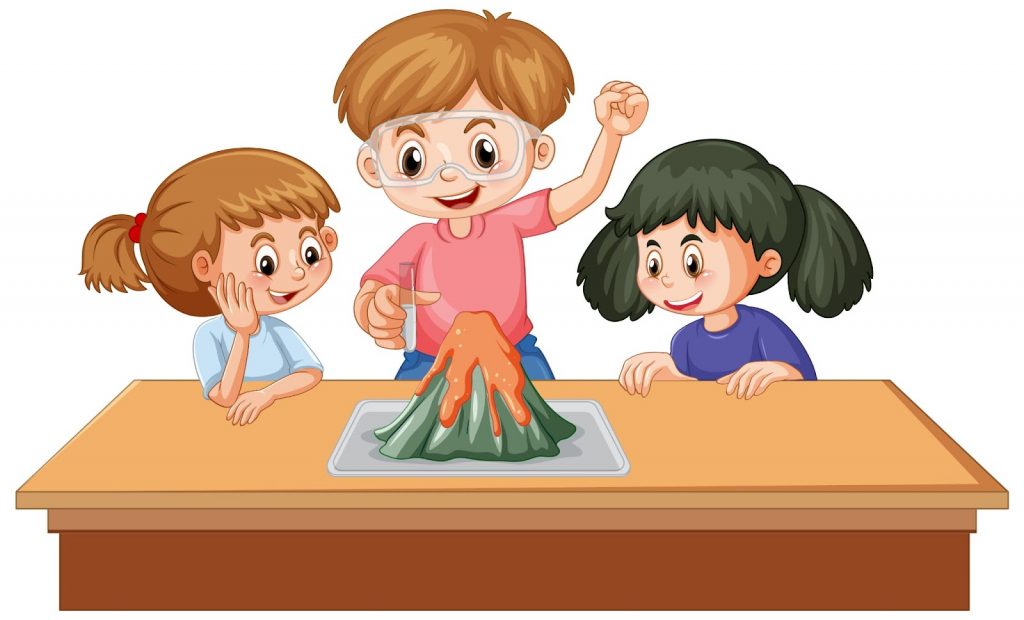
- Hovercraft: Glue a balloon to a CD, then inflate the balloon and place the CD on a smooth surface to create a hovercraft.
- Slime Making: Mix glue, water, and borax solution to create slime. Explore different ratios for varying consistencies.
- Bottle Rocket Launch: Fill a plastic bottle partially with water, then quickly attach a cork and pump air inside to launch the rocket.
- Sundial Crafting: Place a stick vertically in the ground, and mark the shadow cast by the sun at different times of the day.
- Plant Growth Study: Plant seeds in pots with varying amounts of sunlight, water, and soil to observe their growth over time.
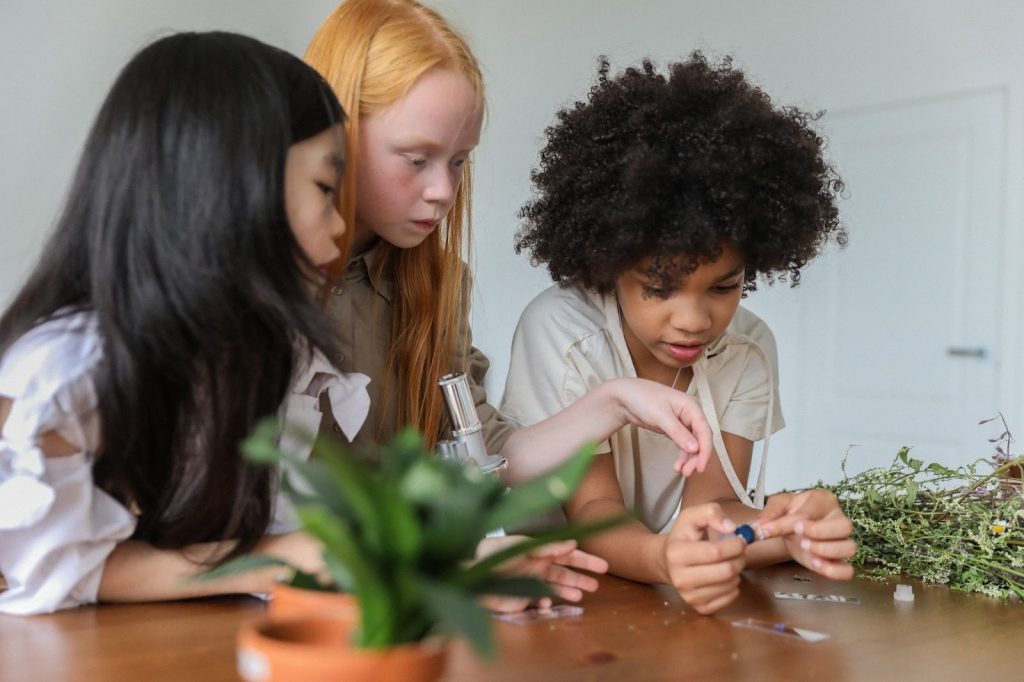
- Static Electricity: Rub balloons against clothing to create static charge. Test its effect on objects like paper and hair.
- Dissecting Owl Pellets: Purchase owl pellets and use tweezers to carefully dissect them, identifying the bones of small animals.
- Microscope Adventures: Collect samples from ponds or leaves, place them on slides, and observe under a microscope to discover tiny organisms.
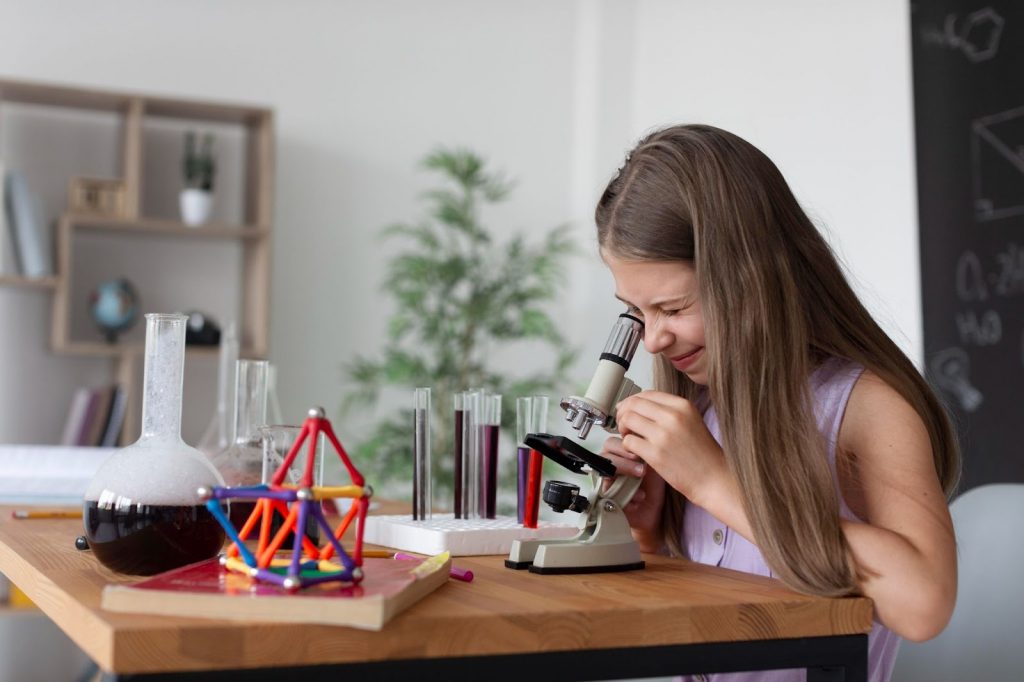
Now that we’ve explored some exciting science-related STEM ideas for middle school kids, let’s look at engaging technology activities to help students develop important coding, programing and digital literacy skills.

Technology activities for middle schoolers are designed to introduce students to coding, programing, and digital design basics. These hands-on activities are a great way to build technical skills while fostering creativity and innovation. Here are a few technology-related STEM activities for middle school kids.
- Coding Basics: Use online platforms like Scratch or Code.org to start learning coding concepts through interactive tutorials and projects.
- Robotics Challenge: Provide robot kits with instructions and coding software. Students follow the instructions to assemble the robot and write code to make it perform tasks.
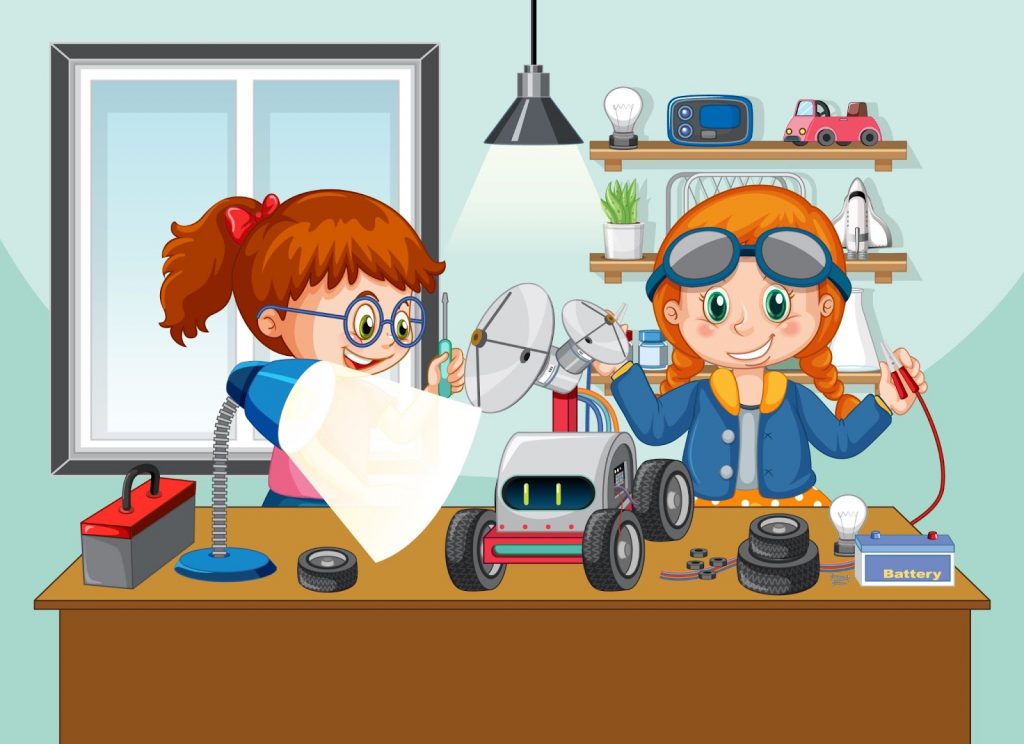
- App Design: Utilize app development tools or platforms like MIT App Inventor to design and prototype mobile apps. Students can create simple apps and explore different features.
- 3D Printing: Teach students how to use 3D modeling software to design objects. Then, print the designs using a 3D printer.
- Website Creation: Introduce HTML and CSS coding languages to build a basic website. Students can experiment with customizing their site.
- Video Game Design: Use game development software like GameMaker or Unity to design and create simple video games with characters, levels, and gameplay.
- Augmented Reality (AR) Exploration: Explore AR technology using AR apps or platforms. Students can create interactive experiences by overlaying virtual objects on the real world.
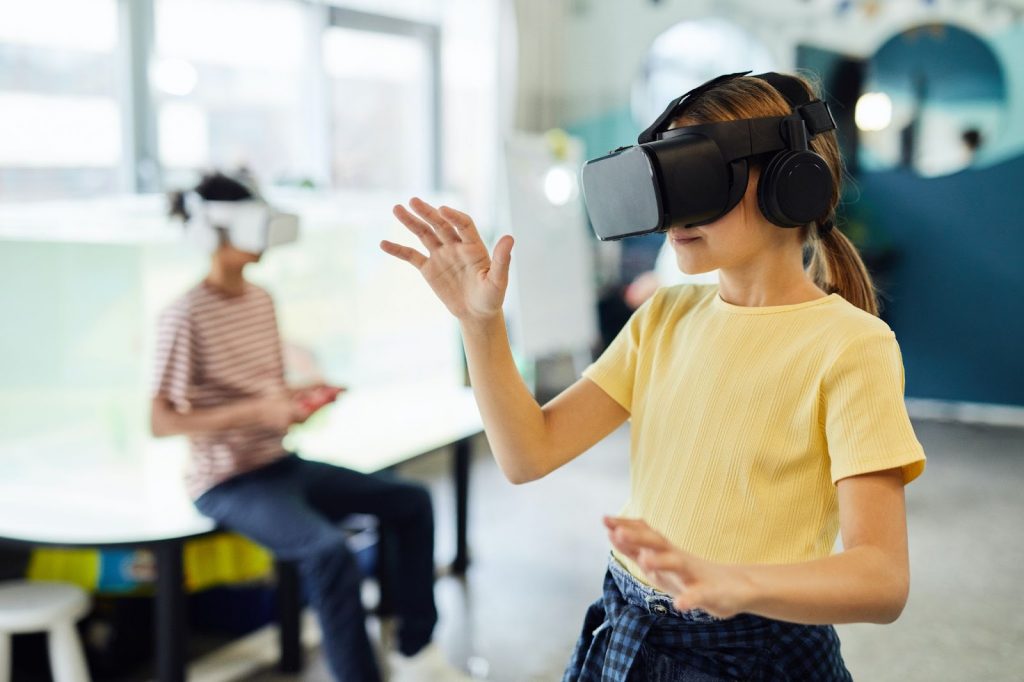
- Green Screen Projects: Provide a green screen and video editing software. Students can record themselves against the green screen and use the software to replace the background with any image or video.
- Electronic Circuits: Use a circuit kit with components like LEDs, resistors, and wires. Students follow diagrams to build circuits and learn about electronics.
- Digital Storytelling: Use digital tools like PowerPoint or video editing software to create multimedia stories with text, images, and audio narration.
- Internet Research Challenge: Assign specific research topics, and guide students on using search engines and reputable websites to find relevant information.
- Cybersecurity Awareness: Conduct discussions and workshops on online safety, creating strong passwords, and protecting personal information from online threats.
- Virtual Field Trips: Utilize virtual reality headsets or online platforms with virtual tours to take students on immersive journeys to museums, historical sites, or outer space.
Now that we’ve explored some exciting technology-related STEM projects for middle school kids, let’s shift our focus to engineering. These activities are designed to introduce students to engineering and design principles and provide hands-on opportunities to create and build.
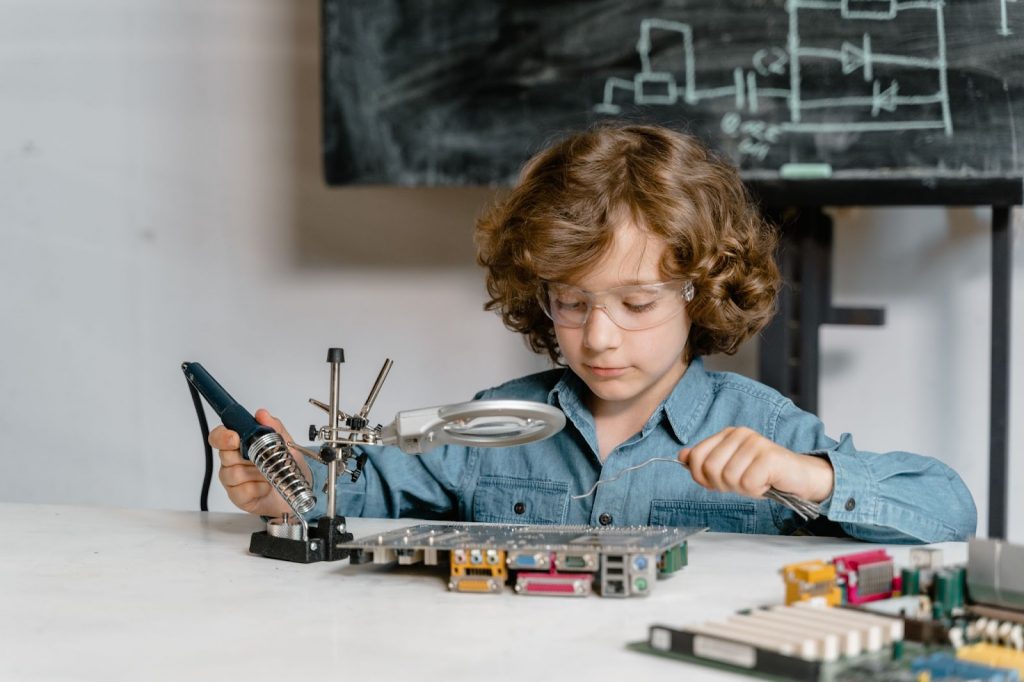
Engineering activities are a great way for middle schoolers to explore design principles, problem-solving, and creativity. These activities help develop important skills that benefit students in all aspects of life. Here are a few engineering-related STEM projects for middle school kids that are both fun and educational.
- Popsicle Stick Bridges: Provide popsicle sticks and glue. Instruct students to design and build bridges using the sticks, aiming to make them sturdy enough to hold weight.
- Hydraulic Lifts: Provide syringes, plastic tubes, and water. Students build a hydraulic lift system using syringes and water to lift objects.
- Spaghetti Towers: Offer uncooked spaghetti and marshmallows as building materials. Challenge students to construct tall and stable towers using the two items.
- Water Filtration: Teach students about water filtration concepts. Provide various materials like sand, gravel, and cotton balls for them to build their filtration systems and test their effectiveness.
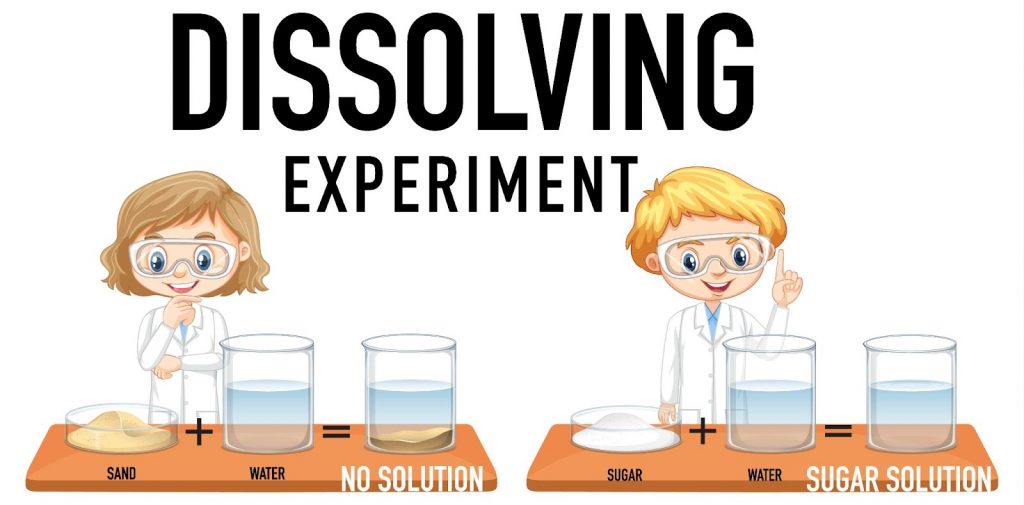
- Egg Parachute Drop: Provide materials like plastic bags, strings, and cushioning materials. Have students construct a parachute to safely drop an egg from a height.
- Catapult Challenge: Gather materials like popsicle sticks, rubber bands, and plastic spoons. Instruct students to build a working catapult and launch small objects towards targets.
- Mini Wind Turbines: Provide students with materials like cardboard, straws, and small motors. Guide them in creating miniature wind turbines to generate electricity from wind energy.
- Simple Machines Exploration: Set up stations with different simple machines like pulleys, levers, and inclined planes. Allow students to experiment and learn how these machines work.
- Sustainable Building Designs: Introduce sustainable building practices to students. Let them design and sketch eco-friendly and energy-efficient buildings or houses on paper.
- Bristlebot Robots: Provide toothbrush heads, small vibrating motors, and batteries. Show students how to assemble these components into tiny robots called Bristlebots that move around.
- DIY Waterwheel: Provide materials like popsicle sticks, cups, and a small water source. Students design and build a waterwheel to harness water energy.
While engineering activities focus on design and problem-solving, math activities for middle schoolers aim to build a strong foundation in mathematical concepts and practical applications. Let’s look at some engaging and hands-on math activities that middle schoolers can enjoy and learn from.

Middle school math activities are made to help kids develop a solid mathematical foundation while also exposing them to real-world applications of mathematics. Through these exercises, students can improve their ability to think logically, solve problems, and appreciate the beauty of mathematics. A few math projects and activities are listed below for middle school students to try out.
- Math Scavenger Hunt: Create a list of math-related items or problems for students to find and solve around the school or outdoors.
- Fraction Pizza: Use construction paper to create “pizza slices,” and have students color in fractions to represent different toppings.
- Math Board Games: Introduce math-based board games like “Math Bingo” or “Math Jeopardy” to reinforce skills in a fun way.

- Math Art: Have students create geometric art using shapes, angles, and symmetry.
- Math Puzzles: Provide various math puzzles like Sudoku, logic puzzles, or tangrams to challenge problem-solving abilities.
- Real-World Budgeting: Assign students a hypothetical budgeting project to plan for expenses like groceries, entertainment, and savings.
- Data Analysis with Graphs: Present students with real data sets and guide them in creating different types of graphs to analyze the information.
- Math Escape Room: Design a math-themed escape room with puzzles and problems that students must solve to “escape.”
- Geometry Construction: Teach students how to use a compass and straightedge to construct geometric shapes and angles.
- Math Relay Race: Divide students into teams and create a relay race with math problems they must solve to pass the baton.

- Mathematical Storytelling: Have students write stories or scenarios that involve math concepts and solve problems within the narrative.
- Measurement Olympics: Set up a measurement-based competition, like seeing who can estimate and measure the length of various objects most accurately.
- Math in Nature: Take students outside to explore the environment and find examples of math concepts like patterns , symmetry, and angles in nature.
Engaging in hands-on learning through math activities and projects can help middle school students develop a deep understanding and appreciation for mathematics. Having explored a variety of fun STEM activities for middle school, it’s worth considering how we can integrate STEM learning into other aspects of a student’s daily experience, including during recess or on the playground.
4 Ways To Integrate STEM Activities Into Middle School Playgrounds
Middle school is a pivotal developmental period for students, marked by a strong desire for knowledge acquisition and exploration. In this phase, students indulge in both physical activity and cognitive stimulation, and incorporating STEM projects for middle school can substantially enhance their educational experience. Thus, it is imperative to investigate why STEM activities should be included in the middle school playground, and one promising answer is through interactive learning stations.
1. Interactive Learning Stations
These learning stations offer a unique opportunity for students to learn while simultaneously enjoying themselves via experiential education. Specifically, students can engage in hands-on activities such as building miniature wind turbines or constructing solar-powered vehicles, which can enhance their problem-solving skills and deepen their understanding of STEM concepts.
2. Outdoor Laboratories
Students may conduct experiments and gather data in outdoor laboratories because they are situated in a natural setting. Weather stations, gardens, and animal habitats can all be included as part of these laboratories. Kids can develop a passion for science and receive real-world experience by participating in these events.
3. Technology Enhanced Playgrounds
The utilization of technology-enhanced playgrounds represents a novel opportunity to combine fitness and STEM activities, thereby improving student engagement in the form of augmented reality activities, interactive displays, and sensory tools. The resultant learning experience is distinctive and enriching. By integrating technology into gardening , students can augment their digital literacy in a enjoyable and educationally valuable manner.
4. Innovative Equipment
Innovative tools can be utilized to design fun STEM projects for middle school that pushes kids to think creatively. Programable robots, 3D printers, and virtual reality headsets are a few examples of this equipment. With the use of this equipment, kids can enhance their creativity and problem-solving abilities while learning more about STEM principles.
The academic achievement, physical health, and general well-being of children can all be dramatically impacted by including STEM activities in middle school playgrounds. By giving children the chance to participate in practical STEM activities, we can help them acquire crucial abilities that will set them up for future success.
Middle school completion is an indispensable prerequisite for reinforcing students’ aptitude and mastery in STEM (Science, Technology, Engineering, and Mathematics). STEM challenges for middle school students are boundless and varied. We must encourage them to face challenges and in order to ensure that students are equipped for future prosperity, we must proffer them with diverting, interactive, and engaging STEM-related activities. Integration of STEM education within the middle school curricula can be accomplished through various methods such as interactive learning stations, avant-garde tools, and outdoor laboratories.
By providing middle schoolers with the best STEM activities, we can encourage and kindle their passion, empowering them to create a better future. Let us, therefore, take the initiative and encourage our schools to allocate sufficient funding toward STEM education. This will help our children realize their full potential and have a transformative impact on the world.
Frequently Asked Questions (FAQs)
Can middle school stem instruction aid pupils with learning disabilities.
STEM instruction can be modified to meet the needs of children with varying learning preferences and aptitudes. All pupils can benefit from the promotion of problem-solving and critical-thinking abilities.
At what age can you start STEM?
STEM education can start as early as preschool and continues through elementary, middle, and high school. Introducing STEM concepts early helps foster curiosity and lays the foundation for future learning and exploration in science, technology, engineering, and math.
Does incorporating STEM activities into middle school playgrounds come with any risks?
When incorporating STEM activities into playgrounds, safety should always come first. It’s critical to correctly identify risks, train staff members and teachers, and maintain equipment.
12 Best Social Skills Activities for Kids of All Ages
12 Best Pattern Activity for Preschoolers in 2024
15 Best Movement Activities for Preschoolers in 2024
- Pre-Kindergarten
- Kindergarten
Most Popular

15 Best Report Card Comments Samples

117 Best Riddles for Kids (With Answers)

40 Best Good Vibes Quotes to Brighten Your Day
Recent posts.

Math & ELA | PreK To Grade 5
Kids see fun., you see real learning outcomes..
Watch your kids fall in love with math & reading through our scientifically designed curriculum.
Parents, try for free Teachers, use for free

- Games for Kids
- Worksheets for Kids
- Math Worksheets
- ELA Worksheets
- Math Vocabulary
- Number Games
- Addition Games
- Subtraction Games
- Multiplication Games
- Division Games
- Addition Worksheets
- Subtraction Worksheets
- Multiplication Worksheets
- Division Worksheets
- Times Tables Worksheets
- Reading Games
- Writing Games
- Phonics Games
- Sight Words Games
- Letter Tracing Games
- Reading Worksheets
- Writing Worksheets
- Phonics Worksheets
- Sight Words Worksheets
- Letter Tracing Worksheets
- Prime Number
- Order of Operations
- Long multiplication
- Place value
- Parallelogram
- SplashLearn Success Stories
- SplashLearn Apps
- [email protected]
© Copyright - SplashLearn

Make study-time fun with 14,000+ games & activities, 450+ lesson plans, and more—free forever.
Parents, Try for Free Teachers, Use for Free

20 STEM Projects That Are Great for Middle School
Krystal DeVille
February 15, 2024
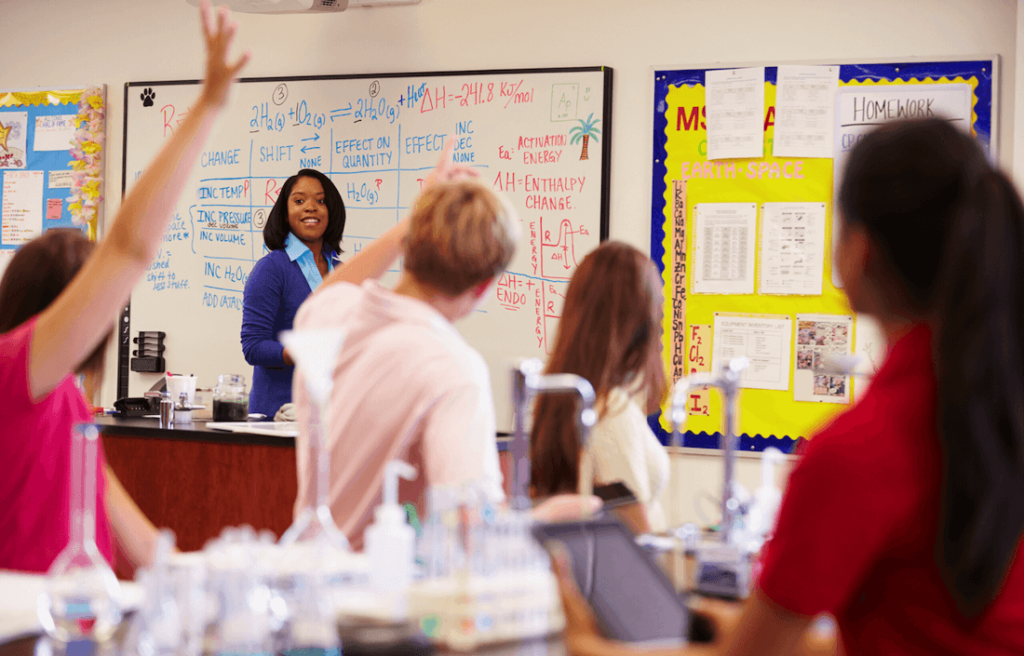
Middle schoolers experience a great time of exploration and learning during these formative years. Explore these middle school STEM projects, designed to enhance STEM education by engaging students in hands-on learning. Pick which ones you want to try first.
Simply click the title of each lesson in the list to get the full lesson plan for these great STEM challenges that align with lessons for middle school science, technology, engineering, and math objectives. Alongside these projects, we also offer a variety of easy STEM challenges that can serve as introductory activities for beginners.
I’ve gone through all the educational subscription boxes for teenagers and put together the best ones in this resource, teenagers’ top STEM subscription boxes.
Table of Contents
STEM Activities for Middle School Students
1. i breathe what.
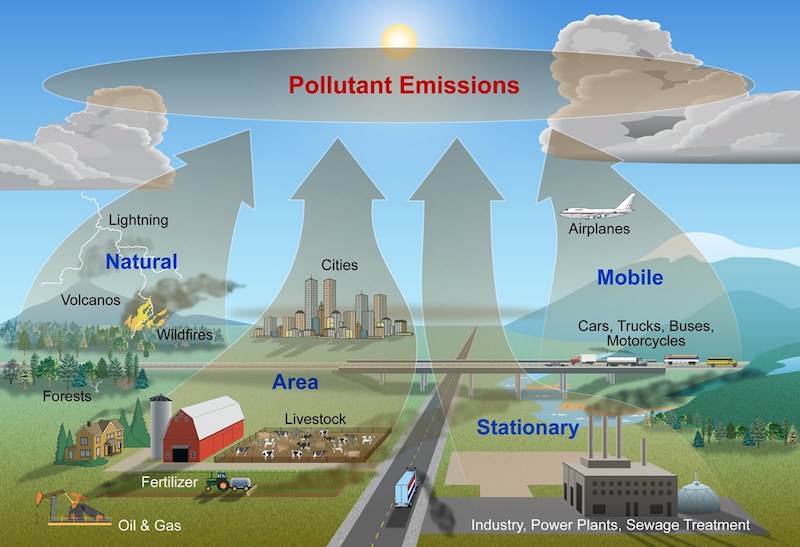
Students enhance their problem-solving skills and understanding of the scientific method by exploring air quality through pollen, dust, and particulates using their homemade ‘pollution detectors.’ They will hypothesize what causes the differences and explain why engineers look at the particulate matter when they observe air quality.
2. Design a Bridge
This is a fun way of using simple machines and various materials, students design bridges that can hold 100 pennies for 30 seconds without collapsing, teaching them fundamental principles of physics. Review engineering concepts such as load and force with your classes before they get started. Consider using craft sticks as one of the materials, which are great for learning about weight distribution and structural integrity.
3. Spaghetti Soapbox Derby
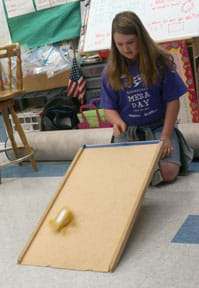
In this science experiment, pairs of students design, build, and test model vehicles made from dry pasta and hot glue, with the goal of rolling along a ramp and coasting as far as possible. This STEM activity focuses on using somewhat challenging materials in the best ways possible.
For an added challenge, students can use rubber bands to enhance the propulsion of their pasta vehicles.
4. Trail Planning Using Topographic Quadrangle Maps
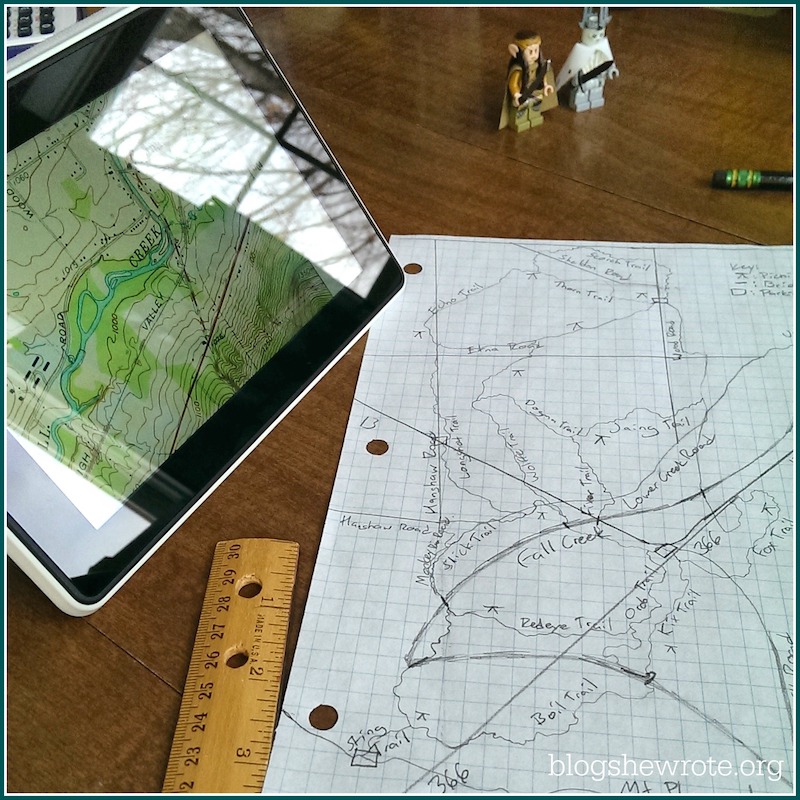
This earth science activity first calls for familiarity with US Geological Survey quadrangle maps. Working within set guideline requirements, students then use these maps to design a good route for a new recreational trail.
5. Bikini Bottom Genetics
Students apply an understanding of genetics in an analysis of sea creature genotypes that live in SpongeBob SquarePants’ neighborhood. They predict traits of offspring with the use of Punnett squares.
6. Design a Wristwatch for the Visually Impaired
Help your students review the engineering design process. They will then research, model, test and evaluate wristwatches for individuals with visual impairments as an exercise in applying engineering skills in the areas of bioengineering and biomedical engineering.
Take a look at our review of Groovy Lab in a Box . It’s hard to convey, but after reviewing about a dozen educational STEM subscription services, Groovy Lab Box has the most well-thought-out lesson plans!
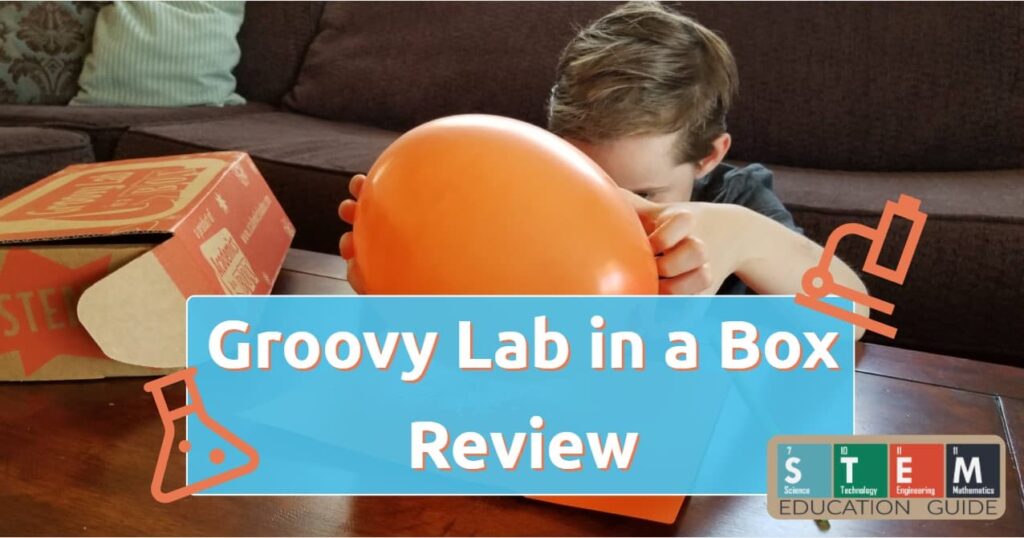
7. Use Your Shoe!
Teachers collect shoe size data from the class. As a group, they use the data to determine the mean, median, and mode. Students then use that information to make inferences about average shoe size and broader populations. This activity provides a review of how to calculate mean, median, and mode, along with methods to make inferences based on the sample.
While this article focuses on middle schoolers, we also recommend fun and educational STEM projects suitable for elementary students .
8. Mission to Mars
Following a storyline, task your students with completing various STEM challenges, including understanding chemical reactions through a Coke and Mentos experiment as part of a Mars emergency. Teamwork, engineering design, and the use of science topics in real life are all addressed.
9. Snack Time!
Using nutritional information labels from various packaged foods, students will organize and describe that info to show the data in a box-and-whisker plot, bar graph, and pie chart. This activity touches on both math and science standards.
10. No Valve in Vain
Teams of students employ the engineering design process to use tape and plastic tubing to create heart valve models. For this activity, the class reviews the engineering design process and the workings of a one-way valve.
For older kids, particularly high school students looking for more advanced challenges, please check out our article, The Best Science Sets for Teens .
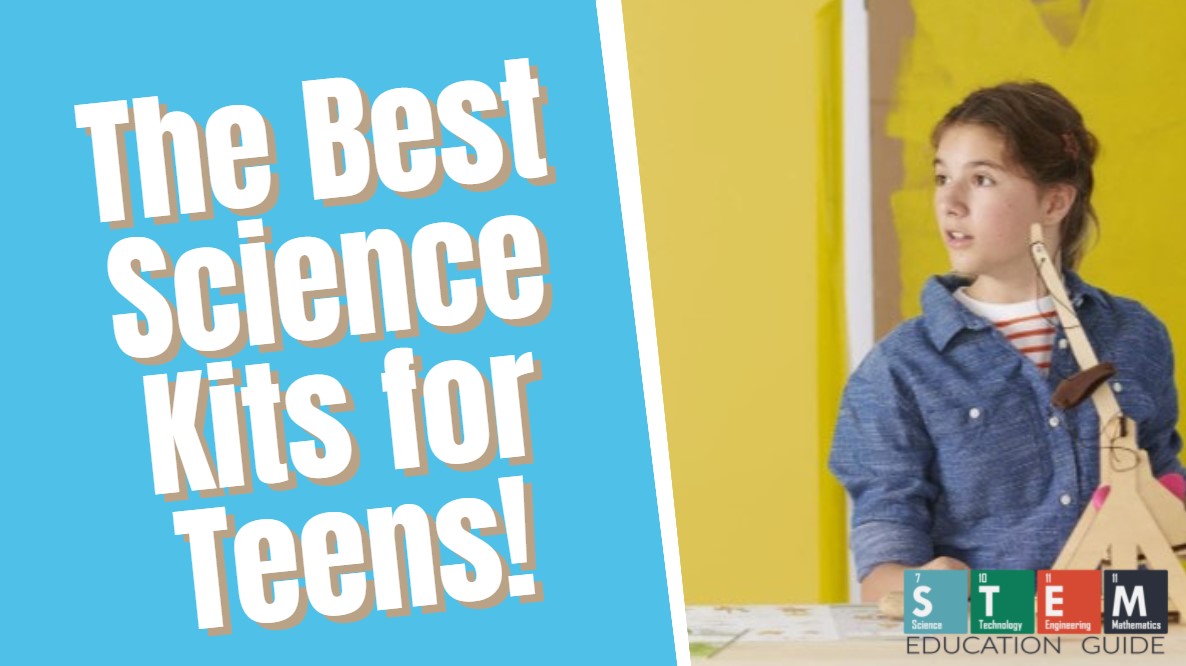
11. Marble Speed Traps with Lego Mindstorms
Students review the formula for velocity . Using drag and drop programming, they code the speed traps to measure the distance between the sensors and time it takes the marble to travel between them. They design the course, write the code, convert units, evaluate, and make changes as needed.
12. The Million Dollar Project
Students imagine inheriting and spending 1 million dollars with specific guidelines of how they may use that money. They research on the internet, record all purchases, learn to write checks, and track all their spending, which reinforces various mathematical concepts.
13. Explore the Law of Inertia using a Fidget Spinner

Review the equations for torque and inertia with students. By removing lights (weight) from spinners, they can explore how the amount of time the device will continue spinning is affected by the mass.
14. Backyard Weather Stations
Working in groups, students describe the current weather and predict future conditions by observing cloud formations. They design backyard weather stations that could gather data for actual forecasting. Technologies for forecasting would be explored, along with weather basics.
15. Leaning Tower of Pasta
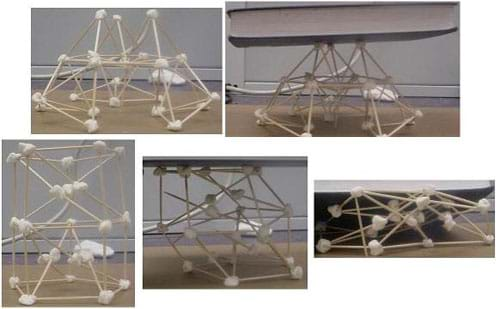
Review compression and tension in structure stability with your class. Students use math and engineering concepts to design and build structures with long, dry spaghetti and marshmallows, to find which ones can withstand the largest amount of load.
16. Cleaning the Great Lakes
What better way to understand environmental science than by having students use limited materials to discover how to filter pollutants from dirty water? Teachers may use this challenge activity along with earth science units about water pollution or those concerning local lakes.
17. Soil Biosolarization: Sustainable Weed Killer
Serving as agricultural engineers, students explore the effectiveness of this sustainable weed control technique that uses organic waste instead of poisons. By using seed starter pots, they plant “weeds” and test the use of organic matter, like oatmeal, to see if it kills the weeds, assessing the impact of products and systems.
18. Renewable Energy: Power Your School
In pairs, students use real data to assess the possible use of solar or wind power generation at their school. Using science, math, and engineering concepts, they explore the differences between these two methods, use maps for an analysis of potential, and look at factors related to the feasibility of renewable energy at their location.
19. Generate Your Own Ocean Currents!
Encourage critical thinking and understanding of real-world applications as students design and construct ocean models to study wind-driven currents. Through this challenge project, they will explore circulation patterns, the Coriolis effect, and the transfer of heat from the global ocean convection cycle.
20. Scaling Up Candy Wrappers
Students bring in their favorite candy bar wrappers, choose a scale factor (larger than 5), and enlarge their wrappers to that scale in a drawing on grid paper. Scaling up candy wrappers is not just educational, but also a lot of fun, teaching kids about the math concept of scale factor. They can then color and display their finished projects!
21. Rube Goldberg Machines
What is a rube goldberg machine.
A Rube Goldberg machine is a deliberately complex contraption in which a series of devices perform simple tasks linked together to produce a domino effect, ultimately accomplishing a simple goal in a highly complex manner. Named after the American cartoonist Rube Goldberg, these machines are fantastic tools for teaching students about physics, engineering, and critical thinking.
Why Include Rube Goldberg Machines in Middle School STEM?
- Encourages Creative Thinking : Building these machines requires students to think outside the box and use their imagination to solve problems.
- Teaches Basic Physics Principles : Concepts like energy transfer, motion, and simple machines come to life in a Rube Goldberg project.
- Enhances Teamwork and Collaboration : Students often work in teams, learning to communicate and collaborate to design and build their machines.
- Develops Problem-Solving Skills : Students learn to troubleshoot and iterate, key skills in any STEM field.
Implementing Rube Goldberg Machine Projects
- Introduce the Concept : Start with a brief history of Rube Goldberg and show examples of Rube Goldberg machines, either through videos or illustrations.
- Define the Project Scope : Set clear goals and parameters. For example, each machine must have a minimum number of steps or complete a specific task.
- Materials : Encourage creativity by allowing a wide range of materials, from household items to recycled materials.
- Documentation : Have students document their design process, challenges, and solutions. This can be in the form of a journal, video, or presentation.
- Presentation and Reflection : Allow students to present their machines to the class. Encourage them to discuss what they learned and how they overcame obstacles.
22. Egg Drop Challenge
What is the Egg Drop Challenge? An engaging physics experiment for middle schoolers, the Egg Drop Challenge involves designing a device to protect a raw egg from breaking when dropped from a height. It’s an excellent way for students to apply concepts of gravity, impact force, and material properties.
Why It’s Beneficial:
- Encourages creative problem-solving.
- Demonstrates physics principles like momentum and shock absorption.
- Promotes teamwork and collaborative skills.
Implementing the Challenge:
- Materials: Offer materials like straws, balloons, and craft sticks.
- Design and Build: Students design and construct their egg-protecting devices.
- The Drop: Test the devices by dropping eggs from a set height.
- Analysis: Discuss the outcomes, focusing on physics concepts and design strategies.
Curriculum Alignment: This challenge complements the middle school physics curriculum, applying theoretical concepts practically.
23. The Index Card Tower Challenge
What is the Index Card Tower Challenge? The Index Card Tower Challenge is a straightforward yet engaging activity that introduces students to basic principles of physical science and engineering. Using only index cards, students are challenged to build the tallest possible tower. This activity is the best way to demonstrate concepts like balance, gravity, and kinetic energy, making it perfect for kids of all ages, including younger kids.
Why It’s Essential in STEM Curriculum:
- Introduces Physical Science Concepts: Focuses on basic principles like stability and kinetic energy.
- Encourages Creative Problem-Solving: Challenges students to think innovatively using simple materials.
- Accessible to All Ages: Easily adaptable for different age groups, making it suitable for both younger kids and older students.
- Prepares for Future Careers: Develops foundational skills useful in various STEM fields.
- Materials: Provide students with a stack of index cards.
- Build the Tower: Students experiment with different construction techniques to build their towers.
- Discussion on Physical Science: After the activity, discuss how forces like gravity and kinetic energy influenced their designs.
- Real-World Connection: Relate the activity to real-world structures and engineering challenges.
How It Fits Into STEM Courses: The Index Card Tower Challenge is a versatile activity that can be integrated into various STEM courses. It encourages students to apply scientific principles and think critically about engineering challenges, making it a valuable addition to any STEM curriculum.
How To Make The Most Of These Fun STEM Activities for Middle School Students
Whether in STEM labs, at home, or in the classroom, engaging students with discussion questions throughout these hands-on activities is vital.
To connect with students’ interests, some of these STEM activities offer different ways, including the design or analysis of simple video games, blending technology with creativity.
We rounded up these projects specifically because they align with learning objectives and lessons for 6th to 8th-grade students. Ask how this applies to what they’re currently learning in class? What did the project demonstrate?
Let us know in the comments what your favorite Middle School STEM projects! We’d love to hear them.
2 thoughts on “20 STEM Projects That Are Great for Middle School”
I taught bridge building to sixth grade students. The only thing I taught them was information and diagrams about trusses. They had to take notes for their own use during construction. Gave them the materials, formed groups and gave them them help without interfering with their own ideas. The amount of enthusiasm I have seldom seen in middle school. They were so excited they told their other teachers about the project. The bridges were beautiful and so strong. It was great to see the application of the trusses! I am all for STEM activities!
These are some great activities thanks for sharing and I’ll use them at my school.
Leave a Comment Cancel reply
Save my name, email, and website in this browser for the next time I comment.
most recent

Activities and Games , Toy Gift Guides
Best stem subscription boxes for kids: hands-on reviews.

Product Reviews
Raddish kids review: what was inside our box (plus, $15 off coupon code).

How The USA Got Into So Much Debt

Product Reviews , Teach Kids to Code
Sphero vs. cozmo: which programmable robot should you choose.

Activities and Games
Using magnetic tiles in the classroom: enhance your teaching toolkit.

Best Woodworking and Wood Building Kits to Inspire Kids’ DIY Projects

Engineering , Math , Science , Technology
How to use ai for teachers: enhancing classroom learning.
STEM Education Guide
[email protected] STEM Education Guide 9125 SVL BOX Victorville, CA 92395
Your Compass for STEM Discovery
© 2024 STEM Education Guide
.png?width=1270&height=453&name=Copy%20of%20Kid%20Spark%20Logo%20(Horizontal%20-%20Full%20Color).png)
Main navigation
- District Solutions
- Pre-K - 1st Grade STEM Program
- 2nd - 5th Grade STEM Program
- 6th - 8th Grade STEM Program
- Professional Learning
- Robotics & Coding Tutorials
- Rapid Prototyping & 3D Printing Tutorials
- MakeCode for Spark:bit
- 3D Virtual Parts Library
- About STEM Labs
- Foundational Fluencies STEM Lab
- STEM Pathways Lab
- Replacement Parts
- Announcements
- 858.259.4433
Kid Spark Education Blog
Stem for middle schoolers: a guide for teaching stem at middle school, how to inspire confident stem learners, engage middle school students in hands-on learning activities, and other resources for middle school stem teachers..
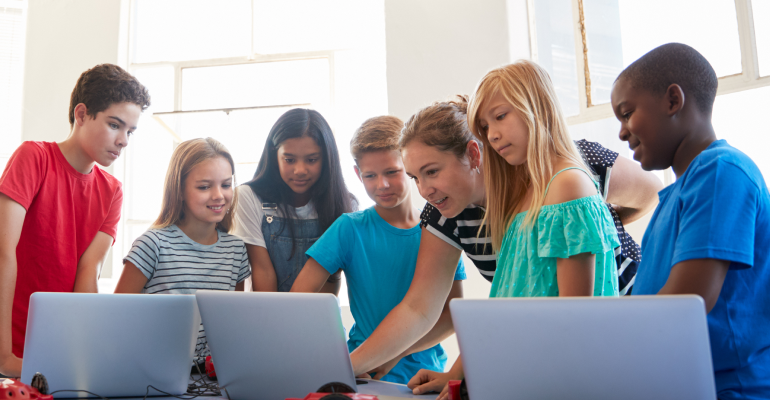
The middle school years mark the transition from elementary school to high school. In these few formative years, students transition from a single teacher to multiple teachers, from general studies to more focused subjects, and from a class of peers to multiple classes with numerous peers.
These transitions form the background of their STEM education and depending on how well a student adjusts, can influence the rest of their educational career.
STEM in middle school gives students opportunities to dive deeper into STEM subjects and explore more challenging concepts. Students at the middle school level can be introduced to complex engineering, robotics, prototyping, intermediate mathematics, computer science, and more.
Creating a middle school STEM program where students can thrive is essential to inspiring the next generation of STEM leaders.
In this article, we’ll cover:
- Why building STEM identity in middle school is so important (and how to do it)
- Middle school STEM activities that are engaging, hands-on, and designed to be challenging yet fun
- How to find the right STEM curriculum for your middle school
Ready to lead confident STEM students? Let’s jump in.
Building STEM Identity in Middle School
Once students reach middle school, they typically have a solid foundation and familiarity across most school subjects and now have the opportunity to explore those subjects in-depth. New concepts, courses, and interests quickly evolve alongside budding social lives that can also potentially affect students’ academic success.
Professionals in school counseling and psychotherapy have noted the “ drops in confidence, performance, and academic self-identity ” that middle schoolers face during these years of early adolescence, which is why strong STEM mentors are more necessary than ever in middle schools.
What is STEM Identity?
STEM identity describes how an individual sees themselves within the fields of science, technology, engineering, and mathematics.
Some middle school students may have had early and sustained exposure to STEM subjects at the elementary level and come into their middle school STEM classes with confidence, curiosity, and ambitions to pursue a career in STEM. Others may feel like they’ve already struggled with science or mathematics earlier in their academic careers and that they’re “just not a math person.”
Many students exist somewhere within the spectrum when reaching middle school and can shift quickly and dramatically through social pressure, class difficulty, teacher influence, or any combination of the many changes happening at this time.
The great news is that STEM identity is not fixed! Students of all ages can build their STEM identities through mentorship, engaging and fun STEM activities, and positive learning experiences that build their confidence and curiosity in STEM subjects.
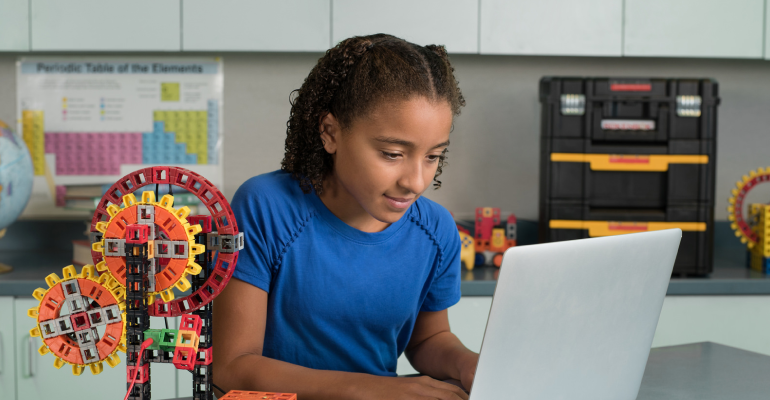
How to Build STEM Identity in Middle Schoolers
In middle school, students need engaging activities that activate their curiosity and challenge them in new ways. They also look for activities that are relevant to their lives, as in— How does this apply to the REAL world?
Here are a few ways to build and encourage STEM identity in middle school students:
- STEM Mentors
For students without a strong connection to STEM subjects, a mentor can make all the difference. Positively reinforcing students’ efforts, encouraging them to approach new challenges, and celebrating their successes can build better STEM identities and inspire students with the confidence they need to continue their own pursuit of STEM subjects.
STEM mentors also play a powerful role in introducing diversity within STEM. Our schoolbooks, media influences, and communities might portray a limited view of who traditionally plays a role in science, technology, engineering, or math. Introducing students to a diverse array of STEM mentors from underrepresented groups helps students of all backgrounds, genders, and abilities see themselves as future leaders in the world of STEM.
- Diverse Challenges
Building STEM identity includes keeping students engaged with new STEM activities while keeping them at their learning edge .
What is the learning edge? When we are faced with new concepts that are too challenging, we often experience feelings of frustration, anxiety, or confusion. The learning edge is a place within our comfort zone of learning that provides just enough of a challenge to be exciting and fun without posing too large a challenge to be discouraging.
Middle school students who are approached with too many challenges beyond their learning edge might handle these feelings by withdrawing, giving up, or acting out in other ways that prevent them from learning. To continue to build their STEM identity, students need diverse challenges that keep them on their learning edge.
- Engaging STEM Activities
All students, but especially middle school students, are interested to know how a classroom lesson applies to the real world. Are they really going to use math outside of school? When will they ever need these scientific facts after graduation?
A great way to preemptively answer these types of questions is by introducing engaging hands-on STEM activities that immediately immerse these subjects into the real world. Rather than reading and recitation, students get to see the real-world applications of STEM concepts and stay engaged while having fun in the classroom.
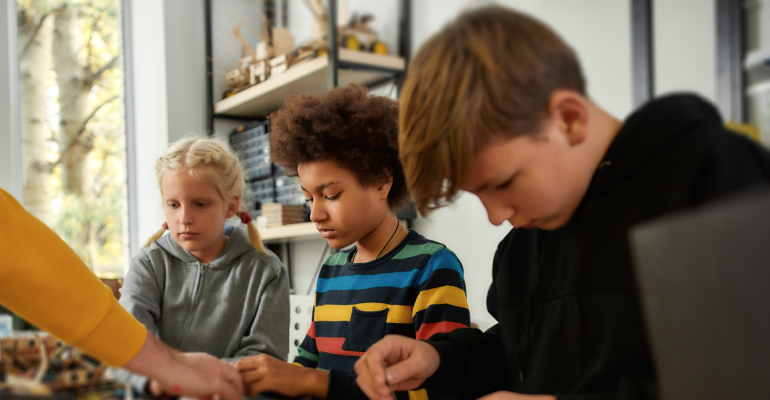
Middle School STEM Activities
With these helpful tips on supporting middle schoolers on their STEM journey, let’s explore some considerations and ideas for STEM activities in the middle school classroom.
Science doesn’t have to be all worksheets and balancing electrons. Have fun with hands-on STEM activities for your middle school students. Science builds critical thinking, problem solving, analytical thinking, and experimentation in students. Keep it fun by relating each subject to the real world and letting students do some experimenting of their own.
- Scientific Challenges
To encourage middle schoolers to explore concepts and experiment on their own, allow ample time for scientific challenges in the classroom. This might include letting students design their own science experiments using the scientific method, solving a mystery or hypothesis in groups or as a class, or exercising students divergent thinking by encouraging them to find as many creative solutions to solve a problem.
Scientific challenges are often built into curriculum activities ( like Kid Spark’s STEM comprehensive programs ) where students can apply a convergent learning skill they’ve just learned and can apply it to a new problem, finding numerous creative solutions.
Challenges can also be constructed by teachers themselves, adding a game element or creative element to a scientific concept to move beyond memorization and into hands-on learning.
- Tie in the latest science news
There’s no better way to highlight a science lesson’s relevance than to directly tie into what’s happening in the world of science today.
NASA provides helpful professional courses for educators K-12, online STEM toolkits, and STEM lesson plans on their STEM engagement website . Here, you can find several different resources for both teachers and students to explore STEM subjects related to what’s currently happening in science news.
Middle school students are especially interested in technologies that are relevant. With the fast pace of technological advancements, this can be a challenge for many teachers to find new ways to engage students in technology-focused STEM activities. Here are a couple of ideas for the classroom in 2023:
- Leverage what they already know: computers
Middle schoolers are already well-versed in computers, and might already be familiar with computer science (CS) and coding on their own. Regardless of their familiarity, the application of computer science is something that is likely already aligned with their interests.
Google for Education offers resources for K-12 educators and CS activities for students in the classroom. The middle school level is a great time to introduce these concepts and provide creative activities for students to explore computer science.

- Connect technology to the real world
In one unit of Kid Spark’s middle school STEM program , students build an airplane model, then design and 3D print their own propeller. Over the course of multiple lessons, students learn to navigate a CAD system, design a three-dimensional prototype, and eventually print their custom airplane propeller.
This process connects modern technology to a hands-on learning activity with both convergent and divergent activities included. Complete with comprehensive lesson plans, student workbooks, video tutorials, and unit assessments, teachers have all the tools they need for an engaging integrated STEM activity that keeps middle school students participating.
Engineering
It’s going to take more than legos to get middle schoolers engaged in engineering. Luckily, there are several ways to introduce more complex engineering schools that keep students challenged and at their learning edge.
- Think “movement”
Flying rockets, speeding soapbox cars, and engineering a soft landing to keep an egg intact are all examples of hands-on engineering activities for middle school. Exploring the concepts of inertia, velocity, and acceleration opens up a fascinating world of learning activities that combines both convergent and divergent learning.
When approaching engineering concepts like these in text, try to find a physical example to illustrate the concept in the classroom. If you or your students are limited in supplies or resources, consider participating in one hands-on activity as a class, dividing students into groups, or using recycled materials to illustrate these engineering concepts.
- How things work
Our natural curiosity enjoys learning about how things work. Introducing the inner workings of engineering can make students see the world in an entirely new way. So how do we explore these concepts?
Structured engineering lesson plans with hands-on learning activities are a great way to introduce simple and complex mechanisms and machines. Because of the sequential nature of engineering concepts, we recommend a more structured and progressive approach to introduce new concepts, then let them build upon each other until students have a comprehensive understanding of how things work and can apply a variety of engineering principles to a single problem on their own.
This is best seen in our middle school STEM program where students work with reusable engineering components to build simple machines like levers, wheels, screws, and pulleys then move into compound machines with motors, motions, and gears.
For a sneak peek at what these lesson plans look like, click here .
Mathematics
Middle schoolers don’t typically enjoy the two-dimensional world of math on paper. To make mathematics fun and relevant, try to incorporate hands-on learning activities where students can apply their math knowledge to real-world problems, like:
- Geometry with their own engineered models
In a simple machines lesson of Kid Spark’s 6th-8th Grade Stem Program , students assemble a screw and learn how to calculate its mechanical advantage by measuring the different attributes of a circle. Through this hands-on activity, students have three-dimensional models to understand radius, diameter, and circumference, how to measure each, and how each makes a difference in the mechanical advantage of a screw.
By combining a real-world application and hands-on activity, this mathematical lesson comes to life and gives students an engaging STEM experience that is more memorable and impactful than measuring shapes in a textbook.
- Baking with fractions and ratios
Following a baking recipe provides a fun (and delicious) way to explore fractions, ratios, and conversions. Different variations of mathematical baking lessons might include following a no-bake recipe together as a class, having each student bring a recipe to convert and scale to then bake and share with the class, or forming groups of students to work together on a single recipe.
A real-world application of these mathematical concepts helps further cement the lessons of measurement, scale, ratios, and conversions while providing students with a fun and engaging activity.
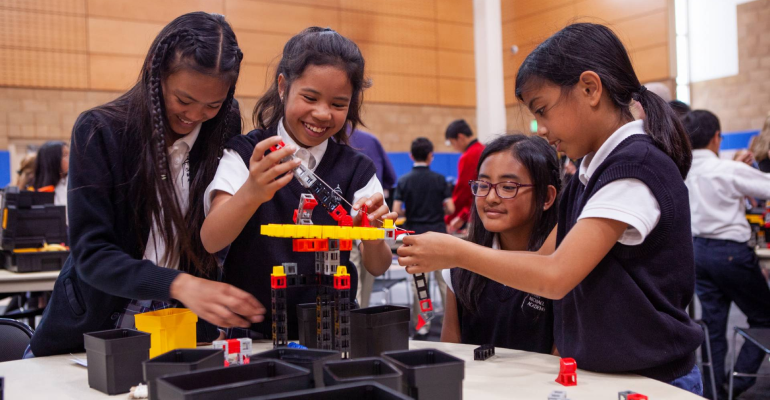
Bring Kid Spark Education’s STEM Program to Your Middle School
Are you looking for an all-in-one solution for your middle school STEM program? Kid Spark Education can help plan your program today.
At Kid Spark, we believe that accessibility and consistency to STEM education closes the divide in STEM inequities. With our comprehensive and progressive STEM programs from Pre-K through Grade 8, we provide all the tools you need as an educator including curriculum tools, engineering components, professional development, and complete lesson plans that meet NGSS standards.
Explore our programs or connect with us today to learn more about Kid Spark’s STEM kits for your middle school.
Topics: STEM mentors , STEM Activities , STEM Education , middle school stem , Kid Spark Education , middle school , math , stem , 6th grade , 5th grade , science
Written By Jordani Sarreal
Would you like to receive more information about starting a kid spark stem program for your students , go beyond the buzzword with kid spark..
At Kid Spark Education, STEM isn't a buzzword: it's a powerful way to nurture students' natural curiosity; build confidence and skills in science, technology, engineering, and math; and foster abilities in collaboration, problem-solving, and communication. You, their teachers, are our most important partner in achieving our mission of preparing all children for a lifetime of learning about science and technology. The Kid Spark Blog is written by educators, for educators to be a resource in your toolbox so you can feel confident and capable in teaching STEM to your elementary students.
Recent Posts
Post by topics.
- Elementary STEM Education (31)
- STEM Education (30)
- STEM Activities (26)
- Kid Spark Education (10)
- STEM kits (9)
- middle school stem (9)
- STEM mentors (8)
- stem programs (8)
- Preschool (7)
- curriculum (7)
- Professional Development (6)
- elementary (6)
- middle school (6)
- stem and early childhood (6)
- STEM classroom kit (5)
- elementary school (5)
- resources (5)
- 5th grade (4)
- elementary schools (4)
- funding (4)
- learning experiences (4)
- science (4)
- 1st Grade (3)
- 2nd Grade (3)
- 6th grade (3)
- STEM Challenges (3)
- administration (3)
- early childhood (3)
- engineering (3)
- integrating curriculum (3)
- kindergarten (3)
- learning labs (3)
- robotics (3)
- 3d printing (2)
- STEM Identity (2)
- after school stem (2)
- afterschool (2)
- implementation (2)
- mobile stem labs (2)
- reading (2)
- stem math curriculum (2)
- After School (1)
- Computer Science (1)
- best of (1)
- education (1)
- learning (1)
- stem enrichment (1)

Science By Sinai
Middle School Science Tips, Ideas, and Resources
10 Structured STEM Projects For Middle School
Do you want to do STEM projects for middle school but you’re not sure how to structure them or grade them?

Karen Sinai
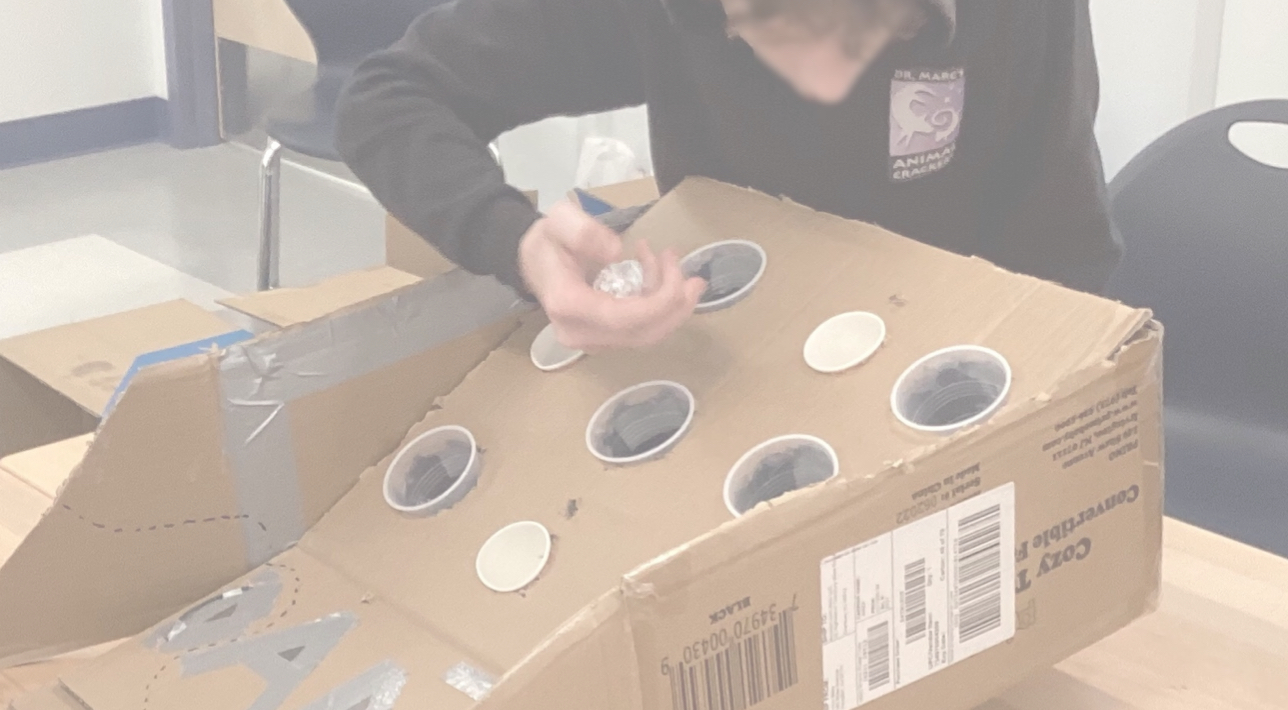
Updated October 22, 2023
I’ve got you! It took me years to iron out the kinks but now I LOVE STEM activities! When I first started doing STEM projects, I loved the initial excitement in the room! I just let students keep working from day to day. Slowly, the students would start to get frustrated, and even bored, and they kept doing restarts. The projects ended up dragging on FOREVER with no good way to wrap them up.
Once I started adding strict structure with brainstorming sessions, check-ins and rubrics, the accountability went way up and the students stayed much more focused. This allowed them to let their creativity kick in and, as a result, the projects have been so much better!
There are 10 major STEM projects that I do in middle school and I have broken them down into three categories: physical science, life science and environmental science. All of the projects involve very little extra materials and I promote using recyclable objects. The only exception to this rule may be the electrical circuit games. Each one of these is a product on Teachers Pay Teachers so you could go grab the directions, check ins, rubrics and follow up questions for each.
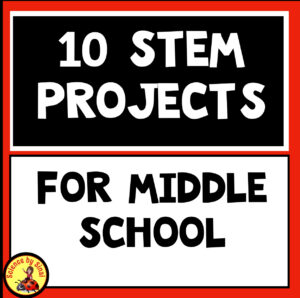
Physical Science: Create Rube Goldberg Machines
Rube Goldberg machines( How to Create Exciting But Structured Rube Goldberg Machines ) are so incredibly fun and there is so much learning going on while students are working on them. Just the trial and error alone is super important. As I mentioned in my blog on Rube Goldberg machines, I tell the students upfront that they WILL be frustrated and they WILL want to throw the materials down on the floor and stamp on them. Ha Ha . But….. they will be absolutely beyond happy when the machine does what it’s supposed to do!
I have the students figure out an end goal such as popping a balloon, pouring a cup of water or dropping a tea bag into a cup. I encourage them to work backwards using simple machines to create the Rube Goldberg machine. We take videos, do a presentation and we invite other students to come in to see their machines.
Physical Science: Food Chains and Rube Goldberg Machines Transfer of Energy Projects
A variation that stresses the transfer of energy in a Rube Goldberg machine and compares it to a food chain which also has the transfer of energy.( STEM Energy Project Using Rube Goldberg Machines and Food Chains! ) I give the students a four level food chain from different ecosystems. Students design a four stepped Rube Goldberg machine to reflect the transfer of energy from producers, to first consumers, to second consumers, to the top predator. I have this in many different ecosystems such as the deciduous forest, savanna, rainforest, tundra, desert and ocean.
Physical Science: Creating Magnet Mazes
Learning about magnets and magnetic fields is much more fun when you have your students create magnet mazes.( How to Create STEM Magnet Mazes ). They create obstacles such as bridges or holes to jump across to test the range of the magnetic field. Again, the trial and error process is very rewarding to watch. I have had students make themed mazes such as a race track, a city, an airport or one group did a walk-through Disneyland!
Physical Science: Designing Electrical Circuit Arcade Games
A very exciting project that my eighth graders do is designing electrical circuit arcade games.( How to Create STEM Electrical Circuit Games ). I do a bare minimum of introducing series and parallel circuits, conductors, insulators and switches. I have them get into groups and design arcade games using recyclable materials. The highlight of the end of the activity is inviting the lower school to play the games. Students have done quiz boards, race tracks, pinball like machines and games that involve throwing a ball into cups that light up. As an alternative to these games, I give the option to build a tiny house and show the electric wiring of the rooms.Those were also super creative!
Life Science: Designing Organisms in a Symbiotic Relationship
When learning about the relationships between organisms and ecosystems, we learn about symbiosis. ( How to Create a Symbiosis STEM Project ). This STEM project has students focusing on symbiotic mutualism which is when both organisms involved benefit from the relationship. The goal of the project is for students to design two organisms that need each other for survival. The organisms must live in an existing ecosystem, such as a rainforest, and have adaptations to survive there. I have students usually working in pairs and they build the two creatures using recyclable materials with daily check-ins and rubrics. I also require a video describing each organism and the story of how they benefit from the relationship.
Life Science: Creating Aliens with Adaptive Traits and Using Punnett Squares to Cross Them
While working with genetics, we do some basic Punnett square activities and then we launch into the STEM project.( How to Teach Punnett Squares and Genetics Using Aliens ) Students design a male and female alien with at least five traits that help them survive in their made up environment. They decide which traits are dominant and recessive, and then create the alleles for their male and female, with some being homozygous and some being heterozygous. Using the extensive directions I give them, they randomly cross the two aliens using Punnett squares for the five traits. They design the baby aliens based on that cross.
My students get so excited and want to create more babies and generations! I have recently had them use a choice board as to how they would like to present them to the class. They can make a stop motion video or animation, a detailed poster, news article, or they could use clay or other materials to create their creatures. I’ve done this at the end of the school year and it is a super way to keep them creative and interested.
Life Science: Invent a New Method of Seed Dispersal
While learning about plants, we talk about seed dispersal using either wind, water, animals or “explosive” devices. ( Design a Seed DispersaL Method Structured STEM Project with Rubrics ). I show some YouTube example videos as an introduction and then the students design their own plant with a seed dispersal method.
The first time I did this was while we were all remote, during the pandemic, and the results were unbelievable! Students were involving their families and creating these seed or seed pods. One boy used a Nerf gun foam projectile and drilled a hole in a bath bomb with his father. He put the foam projectile into the hole of the bath bomb. The idea was that the bath bomb was the seed pod and they dropped it into the bathtub. They videoed a time lapse until the bath bomb dissolved and the foam projectile popped up to the surface of the water to “germinate”!
Another student had a balloon full of seeds that he hung from a branch of a tree and, when the balloon popped, lots of seeds scattered everywhere. Other students made sticky items and attached it to their pets for the animal dispersal. I now do this in my classroom and they still come up with very clever ideas such as seeds that have miniature parachutes attached, pods that unfold when placed on water, pods that stick to socks and so on.
Environmental Science: Designing Water Filters
Students in my school know that every year my sixth graders will be designing filters to clean water. The older students, who have already done it, can’t wait to give advice and peek in to see how the contest is going!( Design Water Filters With This Exciting STEM Project! )
The basic directions involve simply cutting an empty water bottle in half and then inverting one half to make a funnel. Using my brainstorming page, students go home and use any materials that they want to create the water filter in the funnel half. Meanwhile, I take a gallon jug and create the most disgusting, dirty water solution that I can!
On the day of the contest we all sit around one table and students are given exactly 100 mL of my dirty water. Their goal is to be the one that has the cleanest water come out of the bottom of the filter.
Most of the time, the results of the first day are not that clean looking. Definitely lighter but not clear. So what do we do? They go home and REDESIGN their filters and we have a second contest. We always see a huge improvement and sometimes I’m amazed that the students produce water that looks so clean that it looks drinkable. The idea that they shouldn’t be happy with the first design that they make is important and that redesigning and redesigning is what engineers do.
Environmental Science: Tracking Car Air Pollution
While we are learning about air pollution and preparing for Earth Day, the students do a project where they track the family car to talk about how much they contribute to air pollution with just their family.( Teaching Students About Their Individual Affect on Air Pollution ). I put a lot of privacy parameters on this project, for obvious reasons, as they track their car for a week. If that’s a problem for any parent, I provide realistic data for them to use. Once students have written down where their car has gone, we classify those trips as necessary trips, luxury trips or semi luxury trips.
We take that data and create numerous bar and pie graphs. I have them do it on paper, and either Google sheets, Excel or Numbers. Students understand that the raw data, the private data, stays in their notebook but we are still able to see the results represented graphically. We can then discuss how they could reduce the luxury trips that their family takes.
Environmental Science: Analyzing and Redesigning Excess Product Packaging
A very eye-opening STEM project has to do with municipal waste, particularly plastic, and how much is produced unneeded packaging. ( Inspiring Middle School Students to Minimize Their Impact on Municipal Waste ). Students bring in an unopened package and we determine what percent of that product is actually trash. What percentage of that product is actually headed to the landfill? They bring in anything from food products to new toys and they are always shocked that many of the products are between 40 to 60% trash!
We use the balances to find the mass of the package and product and then they use some math skills to find the percentage. I have these all laid out in my product on Teachers Pay Teachers. Depending on which age group you’re working with, you may need to teach percentages, which is an extra bonus!
After the students have worked on finding the percentage, we analyze the package carefully and decide what was extra and unneeded. Now they redesign the package for that product! They base this on their knowledge of recyclable materials, keeping the product relatively lightweight, safe and theft proof with the least amount of packaging possible. I have a blog post on this and honestly it’s something the students have never thought about before!
STEM projects that tie into your present unit are the best! Plus, using structured pieces helps keep the students accountable and focused plus gives you lots of material to put in your gradebook. all of the above products are on my Teachers Pay Teachers store at Science by Sinai.
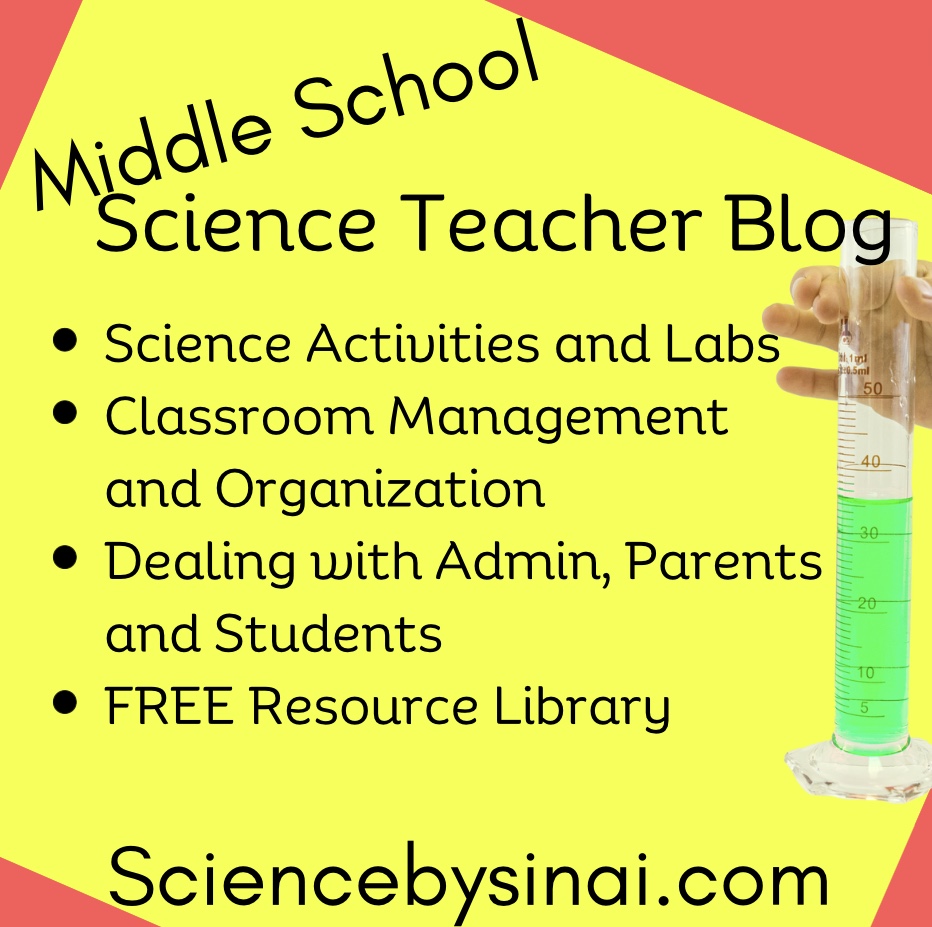
Similar Posts

Labs with iPads to Teach Balanced and Unbalanced Forces
Labs with iPads to Teach Balanced and Unbalanced Forces Teaching a “balanced and unbalanced forces” unit(MS-PS2-2) is so much more engaging when students do activities using the features on their iPads! My middle schoolers have a blast using the slow motion feature on their iPad cameras to capture what they call “things smashing into each…

Move the Plates! Teaching Plate Tectonics is Fun
Move the Plates! Teaching Plate Tectonics is Fun Are you teaching plate tectonics and looking for a way for students to manipulate the plates while learning the types of boundaries? Would you like a digital component to add to your earth science unit? Utilizing plate tectonic drag and drop activities with Google Earth analysis helps…
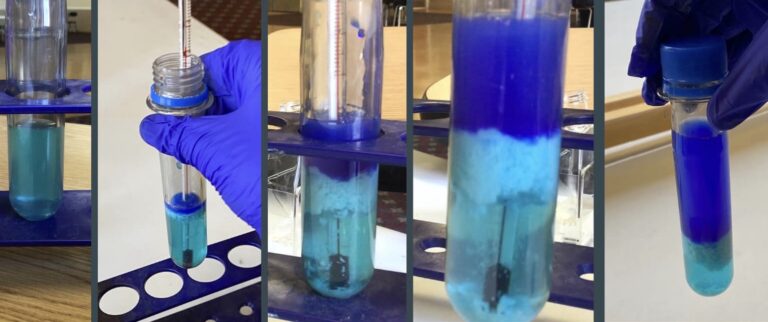
How to Cheaply Teach Chemical Reactions to Middle School
How to Cheaply Teach Chemical Reactions to Middle School Have you been reluctant to teach chemistry reactions in your middle school classroom because of the cost? Do you think of chemistry as being only done in an expensively equipped high school lab? I have found some ways to teach chemical reactions in my classroom that…
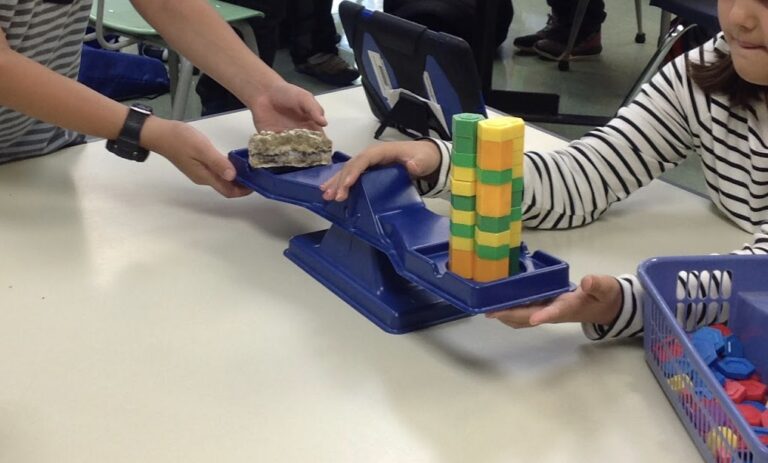
Give Your Students a Measurement Review with these 10 Fun Activities
Give Your Students a Measurement Review with these 10 Fun Activities Are you finding that middle school students seem to lack basic measurements skills in spite of us reviewing and reinforcing this as we head back to school every year? I can’t tell you how many times I’ve had middle schoolers measure from the end…
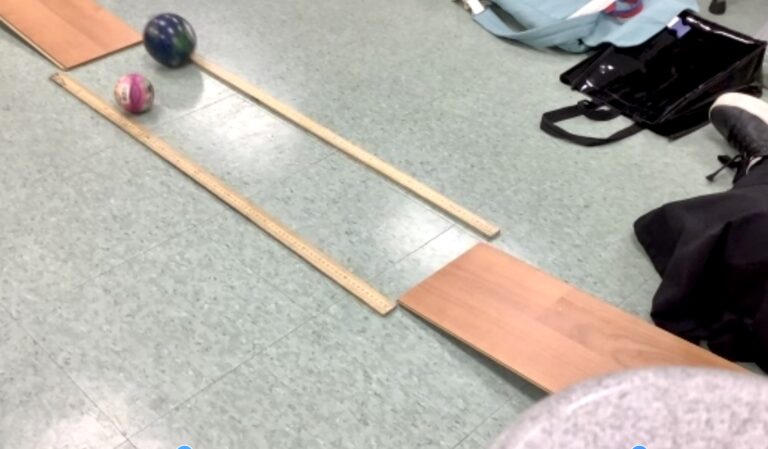
Teaching a Unit on Newton’s Laws of Motion
Teaching a Unit on Newton’s Laws of Motion Are you teaching a unit on Newton’s Laws of Motion as part of your MS- PS2–1 or MS- PS2–2? Are you struggling to come up with ideas to help students understand how the laws apply to their everyday life? My focus, during my two to three week unit…
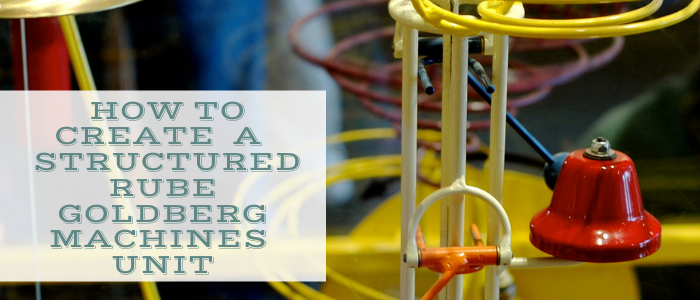
How to Create an Exciting and Structured Rube Goldberg Machines Unit
How to Create an Exciting But Structured Rube Goldberg Machines Unit Have you tried having your students make Rube Goldberg machines and had the project drag on and on with several false starts? Did you have an abundance of random materials around your classroom? Did your students start the project with enthusiasm but then fizzle…
Click here to cancel reply.
Don't subscribe All new comments Replies to my comments Notify me of followup comments via e-mail. You can also subscribe without commenting.
STEM in the Middle Grades
Science, Technology, Engineering, and Mathematics (STEM) education continues to emphasize the teaching of skills that are relevant to today’s information driven economy (Jamali, Nurulazam Md Zain, Samsudin & Ale Ebrahim, 2017). Teaching in STEM areas frequently involves real-world problems, problem solving, critical thinking, and creativity that enrich student learning outcomes (Akerson, Burgess, Gerber, Guo, Khan & Newman, 2018; Chalmers, Carter, Cooper & Nason, 2017; Turner 2013). English (2017) argued that STEM has the potential to positively impact student achievement and motivation as long as the integrity of the disciplines is maintained and teachers have the necessary knowledge and resources to effectively implement STEM activities in the classroom. Also, the research agenda of the Middle Level Education Research Special Interest Group (Mertens, Caskey, Bishop, Flowers, Strahan, Andrews, & Daniel, 2016) included several key components that relate to STEM teaching and learning. These components include a call for development of integrated curriculum research and research in problem-based and project-based learning that is relevant to learners. Related research supports the design, construction, and implementation of simple or complex investigations that are critical to effective STEM learning.
Tenets of This We Believe addressed:
- Students and teachers engaged in active learning
- Curriculum is challenging, exploratory, integrative, and relevant
- Educators use multiple learning and teaching approaches
STEM education is a complex idea encompassing multiple content areas and processes including scientific reasoning, computational thinking, engineering design, and mathematical practices (Bybee, 2011). To advance STEM learning and teaching, a better understanding of current research is crucial given the high visibility of STEM education and the paucity of research in this area. A comprehensive review of current research in STEM middle grades education focused on three themes: (a) students: knowledge, attitudes, motivation, and career interests; (b) teachers: preparation, pedagogical practices, and professional development; and (c) schools: curriculum components, after school programs, and assessment.
Students: Knowledge, Attitudes, Motivation, and Career Interests
These research studies, focused on students and STEM education, most often discussed how students develop identities (Tan, Calabrese Barton, Kang, & O’Neill, 2013) and their attitudes and self-efficacy towards STEM subject areas and future STEM-related careers (Guzey, Harwell, & Moore, 2014; Hiller & Kitsantas, 2014). Several researchers argued that the reasoning behind the recent move towards STEM education in K-12 schools is to improve students’ motivation for learning (Degenhart et al., 2007). Additionally, disparities in STEM performance based on gender (Levine, Serio, Radaram, Chaudhuri, & Talbert, 2015) and learning disabilities (Lam, Doverspike, Zhao, Zhe, & Menzemer, 2008) are highlighted through quantitative and qualitative studies.
Student identities are critical to successful understanding and learning in STEM environments. Jurow (2005) alluded to this notion in her case study research on how students’ figured worlds influence their approach to mathematical tasks. Jurrow’s ethnography and discourse analysis found that designers and facilitators of STEM curricula must realize “students participate and are asked to participate in [multiple figured worlds] when we ask them to engage in projects” (Jurow, 2005, p.62). These identities shape students’ interpretation of the content and practices of the discipline. Jurow (2005) also highlighted the relevance of understanding student’s participation in figured worlds from cultural and historical perspectives.
Kim (2016), using a pairwise t-test of 123 female students’ pre- and post-attitude surveys for her study, Inquiry-Based Science and Technology Enrichment Program (InSTEP), found middle school aged girls’ attitudes changed positively toward science when participating in inquiry-based programs. Tan and associates (2013) in their case study explored a related concept—identities-in-practice–among non-white middle school girls and their desire for a career in STEM-related fields. By differentiating the narrated and embodied identities-in-practice, the authors highlighted a fundamental issue in our current understanding of the role of identities and learning: “These girls who, on paper, make outstanding science grades and articulate future career goals in STEM-related fields, could be considered exemplary female science students who are ‘on track’ and who need no special attention, when in fact, they very much do” (p. 1175).
Woolley, Rose, Orthner, Akos, and Jones-Sanpei (2013) reported the importance of using career relevance as an instructional strategy by showing positive effects on mathematics achievement. Their case study looked at how middle grades students used exploratory statistical procedures and multilevel modeling in real-world applications to increase their mathematical understanding. Based on their findings, they recommended school districts focus on improving career development efforts at the middle level as much as they do at the high school level. Other studies have also supported increasing student awareness of STEM careers for both in- and out-of-school settings in order to improve student motivation and attitudes (Chen & Howard, 2010; Wyss, Heulskamp & Siebert, 2012).
It is interesting to note that Levine et al. (2015), using a paired t-test comparison of pre- and post-camp survey analysis, reported that female students tend to change their ideas about STEM to be more positive and are more willing to perceive themselves in STEM careers after participating in authentic STEM-PBL (Problem-Based Learning) activities. Lam et al. (2008) argued for the inclusive nature of a STEM learning environment by highlighting the positive changes in attitudes and beliefs among middle grades students with learning disabilities based on a paired t -test comparison of pre- and post-program surveys. The research studies discussed above highlighted the positive social aspects of project-based learning. At the same time, there are challenges and limitations to using STEM-based pedagogical approaches.
For instance, Mooney and Laubach (2002) researched middle grades students’ attitudes and perceptions toward engineering and relevant careers when participating in Adventure Curricula, open-ended and inquiry-based engineering scenarios. Using a t -test comparison of pre- and post-program participant surveys, they summarized that students must have prolonged exposure to affect their perception and knowledge of engineering. While many of these research studies focused on the social aspects of learning in a STEM environment, cognitive aspects, such as exploring integrated content and practices that are developmentally appropriate for middle grades students, were not discussed.
Teachers: Preparation, Pedagogical Practices, and Professional Development
Commonly discussed research ideas in STEM teaching included the attitudes and perceptions of teachers towards their pedagogical practices (Asghar, Ellington, Rice, Johnson, & Prime, 2012), their beliefs on the role of STEM education within and outside their classrooms (Wang, Moore, Roehrig, & Park, 2011), and the struggle with the open-ended nature of student-centered pedagogy when using STEM PBLs (Lesseig, Nelson, Slavit, & Seidel, 2016). Lesseig et al. (2016) in their case study stated that STEM content delivery is successful through open-ended, inquiry, PBL-based learning environments that are student-centered instead of the current traditional structures that offer limited opportunities for promoting such instructional strategies. They also argued for the necessity of a paradigm shift by teachers from a transmitter of knowledge to a facilitator of learning.
STEM classroom practices are directly correlated to teachers’ prior educational experiences and perceptions of the role of their discipline area in STEM. In their case study, Wang et al. (2011) reported that mathematics teachers view STEM integration as a way to provide real-world contexts for mathematical concepts, the science teacher views problem solving as the key in STEM integration, and the engineering teacher views STEM integration as an opportunity to combine problem solving with content knowledge of both science and mathematics. Teachers in all three of these areas had difficulties integrating technology into their classrooms beyond the use of computers as a tool for background research. Lesseig et al. (2016) further stated,
Teachers had difficulty creating design challenges that were truly interdisciplinary and admitted that the majority of their projects focused on science at the expense of in-depth mathematics, focused on mathematics with only superficial connections to science, or more commonly, focused on the engineering design process with few explicit ties to mathematical and scientific concepts. (p. 183)
The issue was that these teachers did not learn existing connections between and among science, technology, engineering, and mathematics. For example, one obvious connection is the use of science and mathematics content knowledge and skills inherent in the engineering and design of everyday technological products such as cell phones. Given the lack of teachers’ knowledge of these connections, it is important to make these connections explicit for teachers so they can identify and demonstrate them to their students. Typically, teachers are not academically trained in engineering and technology though they are expected to design and teach STEM lessons that include the T and the E in STEM. One obvious solution recommended to address this problem is providing university-based professional development (Lesseig et al., 2016). Other solutions based on a constant comparative analysis of teacher interviews are providing teachers with time and support for more collaboration with subject area teachers and providing access to experts in developing lessons and activities with clear STEM connections (Stohlmann, Moore, & Roehrig, 2012).
Knezek, Christensen, Tyler-Wood, and Periathiruvadi (2013) in their quasi-experimental design-based research focused on improving STEM classrooms recommends “… schools/policymakers/districts/universities should provide additional training opportunities to increase the teaching skills necessary to implement an inquiry-based approach to STEM learning in the classroom” (p. 114). On the other hand, Jordan, DiCicco, and Sabella (2017) in their multiple case study of teachers, found teachers who are content area experts may not be child development experts. Hence, these teachers need additional support in pedagogical aspects such as student-centered instruction, classroom management, and cognitive developments of adolescents. These studies underscore limitations with fast-track alternative certification programs that often reduce exposure to in-depth pedagogical development.
Schools: Curriculum Components, After-School Programs, and Assessment
Research on students and teachers included social aspects of STEM teaching and learning such as attitudes, beliefs, and perceptions towards STEM education, and the factors that influenced them. The central research ideas focused on schools include STEM integration in the disciplines (Guzey, Moore, Harwell, & Moreno, 2016), the different avenues in which STEM-based curricula is utilized with students includes after-school programs (Chittum, Jones, Akalin, & Schram, 2017), summer camps (Mohr‐Schroeder et al., 2014), and the nature of assessment when engineering and technology is integrated into science and mathematics classrooms (Harwell et al., 2015).
The curricular aspects of STEM teaching and learning are frequently explored as part of the design of components, programs, and activity involving STEM integration (Wang et al., 2011). Wang et al. (2011) highlighted, “One of the biggest educational challenges for K-12 STEM education is that few general guidelines or models exist for teachers to follow regarding how to teach using STEM integration approaches in their classroom” (p. 2). Currently, STEM integration is explored through approaches that are multidisciplinary (Russo, Hecht, Burghardt, Hacker, & Saxman, 2011), open-ended and inquiry-based (Mooney & Laubach 2002), hands-on (Lam et al., 2008; Knezek et al., 2013; & Levine et al., 2016), project-based learning (Slavit, Nelson, & Lesseig, 2016), and use of real-world applications (Bozdin, 2011). Slavit and colleagues (2016) noted in their narrative case study that the role of teachers during innovative school start-ups such as STEM-focused schools “… is a complex mixture of learner, risk-taker, inquirer, curriculum designer, negotiator, collaborator, and teacher” (p.14).
Researchers found that teachers faced with integrating STEM in their classrooms lack content knowledge and skills, specifically in engineering and technology subject areas (Jordan et al., 2017; Lesseig et al., 2016; & Wang et al., 2011). In their qualitative analysis of artifacts and videos of classroom implementation, LópezLeiva, Roberts-Harris, and von Toll (2016) recommended collaboration between classroom teachers and university faculty both in the field of education and specific content subjects as a way to bridge the content knowledge and skills gap. Based on their findings, classroom teachers and university faculty collaborated to create MESSY, an integrated teaching and learning experience on motion. MESSY students worked through a process of collective inquiry to co-construct their conceptions of motion. This sub-theme of universities providing support for teachers on content knowledge and research-based STEM pedagogical strategies has been a recurring implication of these studies.
Researchers recommend the use of real-world connections in designing a STEM based curricula. In his mixed-methods study, Bozdin (2011) found that urban classroom learners’ STEM-specific skills such as spatial thinking can be formally taught by incorporating geospatial information technology tools such as GIS and Google Earth. Also, Hiller and Kitsantas (2014) engaged students in a citizen science program in which students collaborated with naturalists and professional field biologists to study horseshoe crab speciation. Through a series of statistically significant self-efficacy, interest, outcome expectations, and content knowledge measures, they concluded that “providing this type of experience as part of a formal classroom program is a viable means for promoting student achievement and STEM career motivation” (p. 309).
STEM curricula are predominantly used in after-school programs and summer enrichment experiences as a supplementary intervention. In their embedded mixed methods research study, Mohr‐Schroeder et al. (2014) listed typical supplementary STEM-based experiences such as field trips, hands-on learning from subject experts, and working collaboratively as a team. Chittum et al. (2017) investigated curricular elements that motivated student engagement at Studio STEM, an after-school STEM program. One of the key findings from their mixed-methods study was the importance of presenting information to students in a way that relates to their lives and the real world. Harwell et al. (2015) in their embedded mixed methods research study focused on another area of promise, the development and evaluation of psychometrically sound assessment tools to measure the impact of STEM-oriented instruction. They recommended developing assessments with multiple choice items that are easily scored and include 10 or 15 items per content area including engineering and technology in addition to typical science and mathematics questions.
To date, research has focused on small populations of students, teachers, and schools, generally a la carte STEM programs used as explorations and enrichment. The central research idea involving STEM students is that they must envision themselves as STEM learners, take ownership of their learning, and engage in learning environments that are meaningful to them and directly relate to possible STEM careers. The literature focusing on teachers highlighted the lack of a proper research-based framework to guide and support STEM integration in an authentic manner instead of adapting it based on teachers’ anecdotal evidences. Also emphasized in the literature is the need for teacher preparation and sustainable professional development focused on both STEM content and pedagogy. There is a real and urgent need for research-based STEM frameworks to inform curricular and instructional changes for preservice and in-service teacher education. The major takeaway from the literature on schools is that both administrators and teachers need to be more purposeful in integrating engineering and technology into mathematics and science classrooms instead of adding supplementary STEM lessons, activities, and programs. The current state of the literature provides middle level educators with a foundation on which to build effective STEM teaching and learning programs that can successfully address the current limitations to meaningful STEM education.
Akerson, V. L., Burgess, A., Gerber, A., Guo, M., Khan, T. A., & Newman, S. (2018). Disentangling the meaning of STEM: implications for science education and science teacher education. Journal of Science Teacher Education, 29 (1), 1–8.
Asghar, A., Ellington, R., Rice, E., Johnson, F., & Prime, G. M. (2012). Supporting STEM education in secondary science contexts. Interdisciplinary Journal of Problem-based Learning, 6 (2), 4.
Bodzin, A. M. (2011). The implementation of a geospatial information technology (GIT)‐supported land use change curriculum with urban middle school learners to promote spatial thinking. Journal of Research in Science Teaching, 48 (3), 281–300.
Bybee, R. W. (2011). Scientific and engineering practices in K–12 classrooms: Understanding a framework for K–12 science education. Science Teacher, 78 (9), 34–40.
Chalmers, C., Carter, M. L., Cooper, T., & Nason, R. (2017). Implementing “big ideas” to advance the teaching and learning of science, technology, engineering, and mathematics (STEM). International Journal of Science and Mathematics Education, 15 (1), 25–43.
Chen, C. H., & Howard, B. C. (2010). Effect of live simulation on middle school students’ attitudes and learning toward science. Educational Technology & Society, 13 (1), 133–139.
Chittum, J. R., Jones, B. D., Akalin, S., & Schram, Á. B. (2017). The effects of an afterschool STEM program on students’ motivation and engagement. International Journal of STEM Education, 4 (1), 11.
Degenhart, S. H., Wingenbach, G. J., Dooley, K. E., Lindner, J. R., Mowen, D. L., & Johnson, L. (2007). Middle school students’ attitudes toward pursuing careers in science, technology, engineering, and math. NACTA Journal , 52–59.
English, L. D. (2017). Advancing elementary and middle school STEM education. International Journal of Science and Mathematics Education, 15 (1), 5–24.
Guzey, S. S., Harwell, M., & Moore, T. (2014). Development of an instrument to assess attitudes toward science, technology, engineering, and mathematics (STEM). School Science and Mathematics, 114 (6), 271–279.
Guzey, S. S., Moore, T. J., Harwell, M., & Moreno, M. (2016). STEM integration in middle school life science: student learning and attitudes. Journal of Science Education and Technology, 25 (4), 550–560.
Harwell, M., Moreno, M., Phillips, A., Guzey, S. S., Moore, T. J., & Roehrig, G. H. (2015). A study of STEM assessments in engineering, science, and mathematics for elementary and middle school students. School Science and Mathematics, 115 (2), 66–74.
Hiller, S. E., & Kitsantas, A. (2014). The effect of a horseshoe crab citizen science program on middle school student science performance and STEM career motivation. School Science and Mathematics, 114 (6), 302–311.
Jamali, S.M., Nurulazam Md Zain, A., Samsudin, M.A., & Ale Ebrahim, N. (2017). Self- efficacy, scientific reasoning, and learning achievement in the stem PjBL literature. The Journal of Nusantara Studies (JONUS), 2 (2), 29–43.
Jordan, R., DiCicco, M., & Sabella, L. (2017). “They sit selfishly.” beginning STEM educators’ expectations of young adolescent students. Research in Middle Level Education Online, 40 (6), 1–14.
Jurow, A. S. (2005). Shifting engagements in figured worlds: middle school mathematics students’ participation in an architectural design project. The Journal of the Learning Sciences, 14 (1), 35–67.
Kim, H. (2016). Inquiry-based science and technology enrichment program for middle school-aged female students. Journal of Science Education and Technology, 25 (2), 174-186.
Knezek, G., Christensen, R., Tyler-Wood, T., & Periathiruvadi, S. (2013). Impact of environmental power monitoring activities on middle school student perceptions of STEM. Science Education International, 24 (1), 98–123.
Lam, P., Doverspike, D., Zhao, J., Zhe, J., & Menzemer, C. (2008). An evaluation of a STEM program for middle school students on learning disability related IEPs. Journal of STEM Education: Innovations and Research, 9 (1/2), 21.
Lesseig, K., Nelson, T. H., Slavit, D., & Seidel, R. A. (2016). Supporting middle school teachers’ implementation of STEM design challenges. School Science and Mathematics, 116 (4), 177–188.
Levine, M., Serio, N., Radaram, B., Chaudhuri, S., & Talbert, W. (2015). Addressing the STEM gender gap by designing and implementing an educational outreach chemistry camp for middle school girls. Journal of Chemical Education, 92 (10), 1639–1644.
LópezLeiva, C., Roberts-Harris, D., & von Toll, E. (2016). Meaning making with motion is messy: Developing a STEM learning community. Canadian Journal of Science, Mathematics and Technology Education, 16 (2), 169–182.
Mertens, S. B., Caskey, M. M., Bishop, P., Flowers, N., Strahan, D., Andrews, G., & Daniel, L. (Eds.) (2016). The MLER SIG research agenda. Retrieved from http://mlersig.net/mler-sig-research-agendaproject/
Mohr‐Schroeder, M. J., Jackson, C., Miller, M., Walcott, B., Little, D. L., Speler, L., … & Schroeder, D. C. (2014). Developing middle school students’ interests in STEM via summer learning experiences: see Blue STEM camp. School Science and Mathematics, 114 (6), 291–301.
Mooney, M. A., & Laubach, T. A. (2002). Adventure engineering: a design centered, inquiry based approach to middle grade science and mathematics education. Journal of Engineering Education, 91 (3), 309–318.
Russo, M., Hecht, D., Burghardt, M. D., Hacker, M., & Saxman, L. (2011). Development of a multidisciplinary middle school mathematics infusion model. Middle Grades Research Journal, 6 (2).
Slavit, D., Nelson, T. H., & Lesseig, K. (2016). The teachers’ role in developing, opening, and nurturing an inclusive STEM-focused school. International Journal of STEM Education, 3 (1), 7.
Stohlmann, M., Moore, T. J., & Roehrig, G. H. (2012). Considerations for teaching integrated STEM education. Journal of Pre-College Engineering Education Research (J-PEER), 2 (1), 4.
Tan, E., Calabrese Barton, A., Kang, H., & O’Neill, T. (2013). Desiring a career in STEM‐related fields: how middle school girls articulate and negotiate identities‐in‐practice in science. Journal of Research in Science Teaching, 50 (10), 1143–1179.
Turner, K. (2013). Northeast Tennessee educators’ perception of STEM education implementation. (Published doctoral dissertation). East Tennessee State University.
Wang, H. H., Moore, T. J., Roehrig, G. H., & Park, M. S. (2011). STEM integration: teacher perceptions and practice. Journal of Pre-College Engineering Education Research (J-PEER), 1 (2), 2.
Woolley, M. E., Rose, R. A., Orthner, D. K., Akos, P. T., & Jones-Sanpei, H. (2013). Advancing academic achievement through career relevance in the middle grades: a longitudinal evaluation of CareerStart. American Educational Research Journal, 50 (6), 1309–1335.
Wyss, V. L., Heulskamp, D., & Siebert, C. J. (2012). Increasing middle school student interest in STEM careers with videos of scientists. International Journal of Environmental and Science Education, 7 (4), 501–522.
Annotated References
This research on Studio STEM, an after-school STEM program, explores two different aspects, (1) the student beliefs of science, and (2) the components of the curriculum that motivated students to engage. Both qualitative and quantitative data including science beliefs surveys, a Studio STEM questionnaire. and interviews were analyzed. One of the major findings is that motivational beliefs about pursuing a college degree of the participants of the Studio STEM program were more resilient than the control group. The statistical analysis reveals a significant difference in achievement values, perceptions of achievement, and intentions to attend college. Authors also highlight that participation in the STEM program was voluntary and, hence, the students could already have better beliefs about STEM. One possible solution to rectify this limitation is to compare the pre- and post-beliefs of the same set of students to see if there is a change in beliefs before and after participation.
Mohr‐Schroeder, M. J., Jackson, C., Miller, M., Walcott, B., Little, D. L., Speler, L., … & Schroeder, D. C. (2014). Developing middle school students’ interests in STEM via summer learning experiences: See Blue STEM camp. School Science and Mathematics, 114 (6), 291–301.
The authors of this article use a mixed-methods approach to investigate and report their findings on the changes in middle level students’ attitudes, perceptions, and interest in and toward STEM fields and careers before and after participating in a summer STEM camp, an informal learning environment that utilizes STEM pedagogical strategies. The students at the See Blue STEM Camp were exposed to engineering design, visual-spatial reasoning mathematics, neurobiology, environmental sustainability, astronomy, LEGO Robotics, aerospace engineering, mathematical modeling, and neuroscience. The findings include an overall 3.1% increase in middle level students’ interest in a career in STEM while comparing their responses in a pre- and post-career survey. Two themes emerged from the qualitative data, Camp is “fun” and therefore they want to learn more and camp is engaging which further explains the increase in STEM career interests.
This article compellingly presents the impact of teacher belief systems on their use and integration of engineering in their classroom through directly collected data from the case study. It is evident that teachers will integrate engineering in the manner that is most comfortable to them and that this decision is highly correlated to their beliefs about the value and purpose of STEM integration. Each of the specific cases clearly correlate to the above claim, and all case study teachers believe that problem solving is the key to the integration process and technology was the most difficult aspect during STEM integration. The professional development for the teachers that the authors used focused majorly on the students’ and teachers’ understanding of engineering design principle and lacks a holistic approach of informing the teachers about the influence of theirs as well as parents’ and students’ belief systems on teaching and learning.
Focus on the STEM subjects (2011). [Special Issue]. Middle School Journal, 43 (1).
This special themed issue provides practical exemplars of STEM in middle school classrooms. The articles respond to a vision of a challenging, exploratory, and integrative curriculum and meaningful learning for students as identified in This We Believe: Keys to Educating Young Adolescents (NMSA, 2010). Articles include examples of STEM integration and discussions about issues in building STEM related skills across the curriculum. Articles include examples of using inquiry-oriented instruction (Hagevik; Longo), promoting the use of real-world STEM connections (Kalchman; Zuercher), developing literacies for STEM contexts (Wood, et al.), and an overview of a STEM program implementation in an entire school (Stohlmann, et al.). The issue takes a special look at engineering with an emphasis on technology tools and content connections to mathematics and science that are used to solve real-world problems that are of interest to bettering humanity.
Recommended Resources
Engineering Everywhere. https://www.eie.org/engineering-everywhere
K-12 Resources for Science, Technology, Engineering, and Mathematics Education. http://www.nsfresources.org/
Resources and Downloads for STEM: https://www.edutopia.org/article/STEM-resources-downloads
Teach Engineering: STEM curriculum for K-12. https://www.teachengineering.org/
Ten Great STEM Sites for the Classroom. http://www.educationworld.com/a_lesson/great-stem-web-sites-students-classroom.shtml
Pugalenthi, P., Wickliffe, A.B., & Pugalee, D.K. (2019). Research summary: STEM in the middle grades. Retrieved [date] from http://www.amle.org/Publications/ResearchSummary/ TabId/622/artmid/2112/articleid/1025/STEM-in-the-Middle-Grades.aspx
Published March 2019.
..using a paired t-test comparison of pre- and post-camp survey analysis, reported that female students tend to change their ideas about STEM to be more positive and are more willing to perceive themselves in STEM careers after participating in authentic STEM-PBL (Problem-Based Learning) activities.”
The stereotype of STEM being deemed for males because it is a masculine program that most females should turn away from, but this pre and post survey shows that females in the adolescent age range still have an interest to learn further about STEM and pursue a STEM career after participating in the STEM-PBL activities. This statement just shows that STEM is more than just for males, but for everyone who has an interest in it.
This is super encouraging about STEM-PBL as a solution for continuing female student engagement!
As a STEM professional the following conclusion also resonated with me: “The major takeaway from the literature on schools is that both administrators and teachers need to be more purposeful in integrating engineering and technology into mathematics and science classrooms instead of adding supplementary STEM lessons…” One way to do this is to see engineering as a field of “designers” and technology as a field of “tool makers.”
Privacy Overview

Exploring Exciting Research Topics for Middle School Students
Are you searching for the best research topics for middle school? If yes, then your search ends here with the best ever research topics for middle school.
Research is an essential aspect of learning, and it is never too early to introduce it to students. Middle school is an excellent time for students to start learning how to conduct research and develop critical thinking skills. By engaging in research projects, students can explore various topics in-depth and develop a deeper understanding of them.
Additionally, research projects can help students develop crucial skills such as time management, organization, and communication. This guide will provide examples of research topics for middle school students and offer tips on how to identify research topics and access scholarly sources. With this guide, students can discover the exciting world of research and the many benefits it offers.
Importance of research topics for middle school students
Table of Contents
Have a close look at the importance of research topics for middle school students.
Develop critical thinking skills
Research topics encourage students to analyze information, think critically about issues and topics, and make informed decisions. This helps them develop their ability to assess evidence and draw conclusions.
Enhance academic skills
Research projects help students develop essential academic skills such as reading, writing, and critical thinking. These skills are critical for success in high school, college, and beyond.
Prepare for high school and beyond
Research projects prepare students for the more in-depth research assignments they will encounter in high school and beyond. It also prepares them for the rigors of college-level research.
Foster creativity
Research projects can provide students with opportunities to explore creative ways of presenting information and engaging with their topic. This can include using technology, art, or multimedia presentations to showcase their findings.
Encourage curiosity
Research projects can encourage students to ask questions, investigate, and discover new information about topics that interest them. This helps them develop a love of learning and become lifelong learners.
Develop time management skills
Research projects require planning and organization, and can help students develop time management skills. This prepares them for managing their time and workload in high school, college, and beyond.
Promote collaboration
Research projects can be done individually or in groups, allowing students to collaborate, share ideas, and learn from one another. This helps them develop teamwork skills and learn to appreciate diverse perspectives.
Increase engagement
Research topics that are relevant and interesting to students can increase engagement and motivation in learning. This can help students become more invested in their education and develop a deeper understanding of the topic.
Improve communication skills
Research projects can help students develop communication skills, such as presenting findings and participating in discussions. This helps them become better communicators and prepares them for future academic and professional pursuits.
Encourage lifelong learning
Research projects can foster a love of learning and encourage students to continue exploring new topics throughout their lives. It helps them develop a sense of intellectual curiosity and a desire for continued personal growth.
Benefits of engaging in research projects
Have a close look at the benefits of engaging in research projects.
Enhances critical thinking skills
Research projects not only require students to gather information but also to analyze, synthesize, and evaluate it from various sources. These skills are essential for developing critical thinking skills, which are crucial for academic and real-life situations.
Promotes problem-solving skills
By engaging in research projects, students learn to identify problems, develop hypotheses, and test them. Through this process, they acquire problem-solving skills, which are essential for academic success and life beyond school.
Develops creativity
Research projects often require students to think outside the box and come up with innovative solutions. This encourages creativity, which is a valuable skill for success in many areas of life, from science to the arts.
Improves communication skills
Research projects often require students to present their findings in written or oral form, which helps improve their communication skills. The ability to communicate effectively is crucial for academic and professional success.
Boosts confidence
Successfully completing a research project can give students a sense of accomplishment and boost their confidence in their abilities. This, in turn, can lead to greater motivation and engagement in learning.
Provides hands-on learning experiences
Research projects allow students to apply what they have learned in the classroom to real-world situations, providing hands-on learning experiences. This can help students connect what they learn in school to the world around them.
Encourages independent learning
Research projects require students to work independently and take ownership of their learning, which encourages self-directed learning. This is a valuable skill that can help students become lifelong learners.
Builds research skills
Engaging in research projects helps students build research skills, such as conducting literature reviews, designing research studies, and analyzing data. These skills are essential for success in college and many careers.
Prepares for college and career
Research projects provide valuable experience that can prepare students for college and careers that require research and critical thinking skills. These skills are highly valued by colleges and employers.
Fosters a love of learning
Engaging in research projects can foster a love of learning and curiosity about the world around us. This can lead to a lifelong passion for learning and exploration.
Research Topics for Middle School
Have a close look at research topics for middle school.
STEM Research Topics
Here are some STEM research topics that middle school students can explore:
- Renewable energy sources and their impact on the environment
- The effects of pollution on local ecosystems
- Investigating the properties of different types of soils
- Building and testing a simple machine or robot
- The effects of different types of fertilizers on plant growth
- The relationship between exercise and heart rate
- The chemistry of food preservation
- The physics of roller coasters and amusement park rides
- Investigating the efficiency of different types of insulation materials
- The effects of music on the brain and body
How to Identify a STEM Research Topic
Have a close look at how to identify a stem research topic.
Identify your interests
Think about what subjects interest you in STEM, such as biology, chemistry, physics, engineering, or computer science.
Explore current events
Look at recent news articles or scientific journals to see what topics are currently being researched and discussed in STEM fields.
Consider problems and challenges
Think about problems or challenges in the world that could be addressed with STEM research, such as climate change, renewable energy, or medical advancements.

Brainstorm ideas
Write down any ideas that come to mind based on your interests and the topics you have explored. Consider how you could approach these topics from a STEM perspective.
Research existing studies
Look at existing research studies in your area of interest to see what has already been done and what gaps still exist that you could explore.
Consult with experts
Seek guidance from teachers, professors, or professionals in STEM fields to help you identify potential research topics and provide resources.
By following these steps, you can identify a STEM research topic that aligns with your interests and has the potential to contribute to the field.
Benefits of STEM Research Projects
Engaging in STEM research projects can offer a variety of benefits for middle school students, including:
Development of critical thinking skills
STEM research projects require students to analyze data, identify patterns, and draw conclusions, which enhances their critical thinking abilities.
Hands-on learning experiences
STEM research projects provide opportunities for students to apply what they have learned in the classroom to real-world situations, which offers hands-on learning experiences.
Preparation for future careers
STEM research projects can prepare students for careers in science, technology, engineering, and math, as they develop skills relevant to these fields.
Fostering creativity
STEM research projects often require students to think outside the box and come up with innovative solutions, which fosters creativity.
Development of research skills
Engaging in STEM research projects helps students build research skills, such as designing experiments, collecting and analyzing data, and drawing conclusions.
Collaboration
STEM research projects can be done individually or in groups, allowing students to collaborate, share ideas, and learn from one another.
Improvement of communication skills
STEM research projects often require students to present their findings in written or oral form, which helps improve their communication skills.
Boosting self-confidence
Successfully completing a STEM research project can give students a sense of accomplishment and boost their self-confidence in their abilities.
Encouragement of lifelong learning
STEM research projects can foster a love of learning and encourage students to continue exploring new topics throughout their lives.
Social Science Research Topics
Examples of social science research topics for middle school students:
- The impact of social media on mental health.
- Gender inequality in education and the workplace.
- The effects of poverty on child development.
- The relationship between stress and physical health.
- The role of parenting styles in child behavior.
- The effects of bullying on mental health and social relationships.
- The impact of immigration policies on families.
- The influence of media on body image and self-esteem.
- The relationship between personality and academic achievement.
- The effects of technology on social relationships.
How to identify a social science research topic:
To identify a social science research topic, you can follow these steps:
Identify a broad area of interest
Begin by thinking about the general field of social science that interests you the most. This could be psychology, sociology, anthropology, economics, political science, or any other related field.
Narrow down the focus
Once you have identified a broad area of interest, narrow down your focus to a specific topic or issue within that field. For example, if you are interested in psychology, you might focus on a specific mental health condition or treatment.
Consider current events
Look at current events or issues that are receiving a lot of attention in the news or media. Consider how you can apply social science research methods to study these topics in more depth.
Talk to your teachers, professors, or other experts in the field to get ideas for research topics. They may be able to provide you with valuable insights and suggestions.
Conduct a literature review
Conducting a literature review involves reading published research studies, articles, and books related to your topic. This will help you understand what research has already been done in the field and identify any gaps or areas that need further exploration.
Refine your research question
Once you have identified a topic of interest, refine your research question by making it more specific and focused. This will help you to develop a clear research plan and stay on track during your project.
Benefits of social science research projects
Have a close look the benefits of social science research topics.
Improved critical thinking skills
Social science research projects require students to analyze and evaluate information from various sources, which helps develop their critical thinking skills.
Enhance problem-solving skills
Through research, students can identify problems and find solutions by gathering and analyzing data, developing hypotheses, and testing them.
Develop empathy
Social science research projects often require students to explore topics related to human behavior and interactions, which can help them develop empathy and understanding for others.
Foster a love of learning
Engaging in social science research projects can foster a love of learning and curiosity about the world around us.
Develop research skills
Social science research projects allow students to develop important research skills such as conducting literature reviews, designing research studies, and analyzing data.
Enhance communication skills
Social science research projects often require students to present their findings in written or oral form, which can help improve their communication skills.
Promote civic engagement
Social science research projects can encourage students to become active and engaged citizens by exploring issues related to society and government.
Expand cultural awareness
Social science research projects can help students understand and appreciate different cultures, beliefs , and perspectives.
Prepare for college and career
Social science research projects provide valuable experience that can prepare students for college and careers that require research, critical thinking, and communication skills.
Humanities Research Topics
Examples of humanities research topics for middle school students:
- The impact of art and music on society
- The history and cultural significance of traditional dress
- The role of religion in shaping world events
- The influence of ancient civilizations on modern society
- The significance of oral history in preserving cultural traditions
- The portrayal of gender roles in literature and media
- The impact of social media on interpersonal communication
- The role of government in promoting human rights
- The significance of historical landmarks in shaping national identity
- The portrayal of mental health in literature and media.
How to identify a humanities research topic
Have a close look at how to identify a humanities research topics.
Brainstorm topics
Begin by brainstorming ideas that interest you or your students. This can include topics related to literature, history, art, philosophy, or culture.
Narrow down the ideas
Once you have a list of potential topics, start narrowing them down by considering the available resources, the level of complexity, and the relevance to current events or personal interests.
Conduct preliminary research on the narrowed-down topics to ensure that there is enough information available and that the topic is suitable for a research project.
Consider different perspectives
Humanities topics often involve multiple perspectives and interpretations, so it’s essential to consider different viewpoints and debates related to the topic.
Consult with teachers or librarians
Ask for input from teachers or librarians who specialize in humanities subjects. They may have ideas for topics, recommended resources, or can help guide students towards a suitable topic.
Refine the topic
Once a suitable topic has been identified, refine it further by clarifying the research question, determining the scope of the project, and outlining the research methodology.
Benefits of humanities research projects
Have a close look at the benefits of humanities research projects.
Developing critical thinking skills
Humanities research projects require students to analyze information, form opinions, and develop arguments, which helps them to think critically.
Enhancing creativity
Humanities research projects often require students to think creatively about how they present their findings and engage with their topic.
Improving communication skills
Humanities research projects often involve written or oral presentations, which help students to develop their communication skills.
Encouraging curiosity
Humanities research projects can encourage students to ask questions and explore new topics, fostering their curiosity.
Developing empathy
Humanities research projects often involve examining different perspectives and cultures, which can help students to develop empathy and understanding for others.
Preparing for higher education
Humanities research projects provide students with valuable research skills and a foundation for more advanced research projects in high school and college.
Increasing engagement
Research topics that are relevant and interesting to students can increase engagement and motivation in learning.
Encouraging lifelong learning
Humanities research projects can foster a love of learning and encourage students to continue exploring new topics throughout their lives.
Interdisciplinary Research Topics
Examples of interdisciplinary research topics for middle school students:
- How does climate change affect biodiversity?
- The impact of technology on society and culture.
- The role of music in mental health.
- How do food and nutrition affect brain development and academic performance?
- The history and science of flight.
- How does social media influence body image and self-esteem?
- The connection between art and science in creating visual illusions.
- The impact of sports on physical and mental health.
- The psychology and biology of addiction.
- The history and science of ancient civilizations.
How to identify an interdisciplinary research topic
Have a close look at how to identify an interdisciplinary research topic.
Look for common themes or issues
Think about topics that overlap between different subjects. For example, climate change is a topic that can be explored in science, social studies, and literature.
Identify the questions
Once you have identified a common theme or issue, think about the questions that arise from it. What do you want to learn or investigate about this topic?
When exploring interdisciplinary topics, it’s important to consider different perspectives from different subjects. For example, if you’re researching climate change, you might want to explore the scientific causes and effects, the social and economic impacts, and the ethical and moral considerations.
Brainstorm possible connections
Consider how the different subjects you’re interested in can connect to the topic you want to explore. For example, if you’re interested in exploring the history of music, you might look at how different historical events influenced music and how music, in turn, influenced history.
Refine your topic
Once you have some possible connections, refine your topic by focusing on a specific aspect or question. This will help you narrow your focus and make your research more manageable.
If you’re having trouble identifying an interdisciplinary research topic, consider consulting with your teachers or librarians. They may be able to offer guidance or suggest resources that can help you identify a topic.
Benefits of interdisciplinary research projects
Have a close look at the benefits of interdisciplinary research projects.
Encouraging creativity and innovation
Interdisciplinary research topics often require students to approach problems from different angles and find creative solutions by combining knowledge from different fields.
Enhancing critical thinking and problem-solving skills
Interdisciplinary research requires students to analyze and synthesize information from various sources, think critically, and solve complex problems.
Promoting collaboration and teamwork
Interdisciplinary research often involves working in teams, which fosters collaboration, communication, and teamwork skills.
Providing a broader perspective
Interdisciplinary research allows students to gain a more comprehensive understanding of a topic by examining it from multiple perspectives.
Developing research skills
Interdisciplinary research projects help students develop research skills, such as conducting literature reviews, collecting and analyzing data, and presenting findings.
Preparing for future academic and career opportunities
Interdisciplinary research projects provide students with valuable experience and skills that can prepare them for future academic and career opportunities that require interdisciplinary approaches.
Resources for Conducting Research
There are various resources available for middle school students to conduct research. Here are some examples:
School Library
The school library is a great resource for finding books, academic journals, and other resources on a wide range of topics. Librarians can also provide guidance on how to find and evaluate sources.
Online Databases
There are several online databases that provide access to academic journals, magazines, and other scholarly sources. Examples include JSTOR, Project MUSE, and Academic Search Premier.
Google Scholar
Google Scholar is a search engine that allows you to find scholarly articles, books, and conference papers. It can be a useful tool for finding academic sources on specific topics.
Public Library
Public libraries also offer access to a wide range of resources, including books, databases, and other materials. They may also offer research assistance and guidance.
Government Websites
Government websites can be a great resource for research on topics such as history, social studies, and science. Examples include the Library of Congress, the National Archives, and the National Science Foundation.
Online Archives
Many organizations and institutions maintain online archives of historical documents, images, and other resources. Examples include the Smithsonian Institution, the National Archives, and the Digital Public Library of America.
Interviews and Surveys
Conducting interviews and surveys can be a valuable way to gather information for research projects. This can involve reaching out to experts in a particular field or surveying individuals to gather data.
Online Learning Platforms
Online learning platforms, such as Coursera and edX, offer courses on a wide range of topics. These courses often provide access to readings, videos, and other resources that can be useful for research projects.
How to access scholarly sources
Accessing scholarly sources can be done through various means, including:
Using academic search engines
There are several academic search engines available that provide access to scholarly sources. Some popular examples include Google Scholar, JSTOR, and PubMed. These search engines allow users to search for academic articles, journals, and other research papers.
Using academic databases
Many universities and libraries offer access to academic databases, such as EBSCO and ProQuest, which contain a vast collection of scholarly sources. Students can check with their school or local library to see if they have access to such databases.
Checking library catalogs
Most libraries have a catalog that contains information about the books and other materials they have available. Students can use these catalogs to search for scholarly sources, such as books, journals, and other publications.
Contacting experts
Students can contact experts in their field of study or a related field to ask for recommendations for scholarly sources. Experts may be able to suggest relevant academic articles, books, or other resources.
Using interlibrary loan services
If a student cannot find a specific scholarly source at their own library, they can use interlibrary loan services to request the material from another library. This service allows libraries to share materials with one another, giving students access to a wider range of scholarly sources.
It is important to note that some scholarly sources may require payment or subscription access. However, many sources are available for free or can be accessed through a library’s subscription.
In conclusion, research projects provide middle school students with an opportunity to explore various subjects in depth, develop their critical thinking skills, and gain a better understanding of the world around them.
STEM, social sciences, humanities, and interdisciplinary research topics offer a broad range of options for students to choose from, and there are various resources available for conducting research, including online databases and access to scholarly sources.
By engaging in research projects, students can improve their academic performance, enhance their problem-solving abilities, and gain valuable experience that will benefit them in the future.
Therefore, we encourage all middle school students to take advantage of these opportunities and engage in research projects that interest them.
Frequently Asked Questions
What is the purpose of research topics for middle school students.
The purpose of research topics for middle school students is to encourage students to explore their interests, develop critical thinking skills, and learn how to conduct research. It also helps them to understand the importance of research in various fields and how it can contribute to solving real-world problems.
How do I choose a research topic for middle school?
Choosing a research topic for middle school involves identifying your interests, brainstorming ideas, and considering the resources available to you. You can start by thinking about a subject that you are curious about or passionate about, and then narrowing down your focus to a specific aspect or question you want to investigate.
What are some tips for conducting research as a middle school student?
Some tips for conducting research as a middle school student include developing a research question, finding reliable sources, taking thorough notes, organizing your information, and citing your sources properly. It’s also important to plan your time wisely and seek help from teachers or librarians if you need assistance.
Can middle school students access scholarly sources online?
Yes, many scholarly sources are available online and can be accessed by middle school students through databases provided by their school or public libraries. Some popular databases for middle school students include JSTOR, ProQuest, and EBSCOhost.
How can research projects benefit middle school students in the long term?
Research projects can benefit middle school students in the long term by developing important skills such as critical thinking, problem-solving, communication, and time management. It also prepares them for future academic endeavors, and exposes them to potential career paths or fields of interest.
Similar Articles

How To Do Homework Fast – 11 Tips To Do Homework Fast
Homework is one of the most important parts that have to be done by students. It has been around for…

How to Write an Assignment Introduction – 6 Best Tips
In essence, the writing tasks in academic tenure students are an integral part of any curriculum. Whether in high school,…
Leave a Comment Cancel Reply
Your email address will not be published. Required fields are marked *
This site uses Akismet to reduce spam. Learn how your comment data is processed .

Middle School STEM Projects that Engage and Inspire
- February 11, 2024
- Engineering , STEM
- Career Exploration , Fall STEM , Spring STEM , STEM Challenges , Sub Plans , Winter STEM
By Trilby Hillenbrand
Are you facing the challenge of maintaining full engagement in your middle school STEM classroom? As educators, striking the right balance between rigor and excitement is an ongoing struggle. Luckily, we have the perfect solution to transform your STEM lessons into captivating experiences – our Middle School STEM Projects Bundle !

The Middle School STEM Dilemma
Middle schoolers can be a tough crowd, making it an ongoing challenge for STEM teachers to balance academic rigor with engaging, hands-on activities. How can we ensure that our students not only grasp complex concepts but also develop a genuine interest in STEM disciplines? The answer lies in sparking their curiosity through innovative, real-world STEM challenges.
Unlocking the Potential of STEM Challenges
Our Middle School STEM Projects Bundle is designed to do just that. With 20 thoughtfully crafted challenges, this comprehensive bundle seamlessly integrates engineering concepts and skills into your curriculum. Each project is intentionally structured to promote critical thinking, creativity, and teamwork – essential skills for future STEM professionals.

What’s Inside the Bundle?
Let’s take a closer look at the exciting challenges included in our bundle.
Fall STEM Projects
- Cook the Corn Solar Oven Challenge : Create a solar oven to warm canned corn for Thanksgiving dinner.
- Corn Maze Design Challenge: Create a 3D marble maze modeled after a corn maze.
- Football Helmet STEM Challenge: Learn about the dangers of concussions and design a football helmet to protect a model skull.
- Halloween Candy Bucket Design Challenge: Create a bucket to hold the greatest amount of Halloween candy.
- Thanksgiving Table Design Challenge: Create a model table for Thanksgiving dinner that can hold the greatest amount of food.
Winter STEM Projects
- Circuit-Powered Valentine Challenge: Build a light-up Valentine’s Day card using circuitry.
- Cookie Delivery Challenge: Design a package to protect a cookie during shipping.
- Hot Cocoa Cup Challenge: Design an insulated cup for hot chocolate.
- Snowflake Design Challenge: Design a snowflake with six sides and rotational symmetry.
Spring STEM Projects
- Bee House Challenge: Create a nesting site for mason bees to support pollination.
- Easter Egg Drop Challenge: Assist the Easter bunny with new egg delivery technology and create protective packages.
- Plant Maze STEM Challenge: Design a plant maze to demonstrate phototropism.
- Wind-Powered Car Design Challenge: Learn about climate change and renewable energy sources, then design a wind-powered car.
Anytime STEM Projects
- Animal Prosthesis Challenge: Design a prosthetic device to improve an animal client’s quality of life.
- Bottle Rocket Challenge: Design and test bottle rockets launched with a baking soda and vinegar reaction.
- Cold Pack Design Challenge: Use knowledge of endothermic and exothermic reactions to design a cold pack.
- Fidget Spinner Design Challenge: Design and build a personalized fidget spinner using the engineering design process.
- Newton’s Laws Car Safety Challenge: Use Newton’s Third Law to design a car that keeps an egg safe during collisions.
- Space Needle Design Challenge: Design and build a model space needle tower for a town.
- Water Balloon Catapult Challenge: Create a catapult to launch water balloons as far as possible.

What Sets Our Projects Apart?
1. comprehensive.
Printable, Google, and Easel versions of student activities and worksheets so you can choose the format that best suits your classroom needs. Detailed lesson plans and slideshows for seamless facilitation. Easy-to-use grading rubrics and assessments to make evaluation and feedback simple. Flexible building materials allow you to adapt the project based on what you have readily available. Printable certificates are included with each challenge to celebrate your students’ success.
2. Time-Saving
Each STEM challenge is ready to go with a materials list, detailed lesson plan, slideshow, digital and printable student materials, and grading rubrics. You’ll gain back hours each week to spend on other important teaching tasks or enjoying your life outside of work.
3. Easy-to-Use
Each project includes detailed lesson plans, slideshows, and grading rubrics to make lesson facilitation a breeze. This will help you use your precious planning time for other tasks on your to-do list. It also makes these resources perfect for a substitute teacher with limited STEM teaching experience.
4. Designed for Middle School
Our middle school STEM projects are designed to pique your older students’ interest and challenge them appropriately. Each STEM challenge in this bundle has been successfully implemented in other middle school classrooms.
Middle School Teacher Testimonials

How to Implement the Middle School STEM Challenges
Our STEM Project Bundle can be seamlessly integrated into your classroom in a variety of ways:
Problem-Solving Practice
Use these STEM projects to introduce and practice problem-solving with the engineering design process. The open-ended nature of each project allows students to devise innovative solutions.
STEM Career Exposure
Help your students discover new STEM disciplines and professions through engaging, fun activities. Connections to real-world STEM careers are detailed in the teacher notes and embedded in the students’ background research activities.
Leverage STEM challenges to provide opportunities for students to hone crucial soft skills that extend beyond science, technology, engineering, and mathematics. These valuable experiences will benefit your students in any future workplace.
High Engagement on Challenging School Days
Keep the STEM projects on hand to use on days when you and your students are having trouble staying focused on work. The projects with seasonal or holiday themes can be used to keep students focused and learning before school breaks.
Substitute Lesson Plans
Ensure continuity in STEM learning by leaving the challenges for engaging substitute lesson plans. The detailed teacher plans, guided student activities, and grading rubrics make these projects accessible to any teacher.
Transforming STEM Education

Ready to elevate your STEM curriculum and inspire the next generation of scientists, engineers, and innovators? The Middle School STEM Projects Bundle is your ticket to a classroom filled with engaged, enthusiastic learners. Purchase the bundle today and witness the magic of STEM education come to life in your middle school classroom!
Leave a Reply Cancel reply
Your email address will not be published. Required fields are marked *
More Blog Posts

How to Create a Water Filter STEM Project
By Trilby Hillenbrand DIY water filters are an impactful STEM project. The learning experience can inspire and empower students to
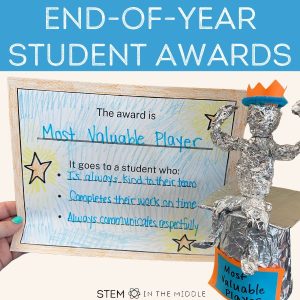
Creative and Unique End-of-Year Student Awards for Middle School
By Trilby Hillenbrand The weather’s getting warmer, and everyone’s counting down the days until summer! End-of-year awards are a great
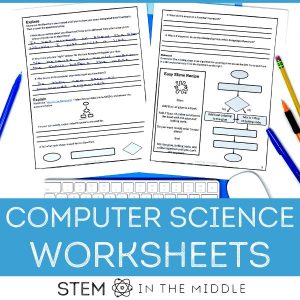
Create Coding Wizards with Our Middle School Computer Science Worksheets
By Trilby Hillenbrand Hello, Middle School STEM Teachers! Unlock the world of computer programming for your students with our computer

Hi, I'm Trilby!
I help middle school educators like you facilitate high quality STEM lessons that engage and challenge students while saving time and energy.
Grab your free STEM lesson!
Shop the store.

Copyright 2024 | STEM in the Middle, LLC. | All Rights Reserved

10 Awesome STEM Projects Perfect for Middle School
Stem learning is so important.
Students need real-world applications with experimenting, prototyping, inventing, and creating; using their imaginations to spark creative solutions! They need to be challenged to use their engineering skills to brainstorm, plan, draw, and test their creations using the engineering design process . STEM Activities encourage kids to think outside the box , with skills like problem-solving, critical thinking, communication and the ability to deal with complex problems to succeed in the real-world, beyond the classroom. Teamwork and collaboration are also part of successful STEM activities. Working in groups is not always easy, but it builds skills that kids will need for the rest of their lives.
Introducing kids in middle school to STEM subjects doesn’t have to be complicated!
Using simple and inexpensive supplies, you can provide fun and relevant activities where students take charge and stay interested and engaged. Here are some inexpensive, hand-on Middle School STEM Activities for kids in 6h grade, 7th grade, and 8th grade. These are STEM projects that will really bring out kids’ creativity. These STEM labs challenge your students to design, construct, and revise their projects as they collaborate in groups with other students. Teamwork is an important real-world skill that will benefit students far beyond the classroom. Being low-prep, these STEM Challenges are super-easy to set up.
Teacher Video Demonstration.
A video demonstration is included with each activity and clearly explains step-by-step how to run the STEM lab, along with the materials you will need. It also explains the concepts you are teaching, giving an added level of confidence while you are giving instructions and guiding your students through the project.
These are great resources for using in middle school STEM and Science Classrooms along with Summer Camps and after-School STEM Clubs. It’s especially great for Homeschool Groups, for co-op STEM classes, and also parents who love hands-on learning at home!
Each Activity includes: • Teacher Instructions • Video Demo for the Teacher • Materials List • Student instructions (worksheet) • Real-World Research Question, Video, or Activity • Advanced Level Extension (Middle School Level) • Grading Rubric • Aligned NGSS standards

Middle School STEM Activity Challenge Pop Can Races
Students will work in groups to explore electrostatic forces between a balloon that they charge and a pop/soda can on the floor. After experimenting with different balloons and different methods, teams will race their pop can a distance of ten meters. Students will not be able to touch, push or blow on their pop can. It must be pulled with the static electricity they create.
>>> Click here to find out more!

Middle School STEM Activity Challenge – Aluminum Foil Boat
In this activity, students will work in groups to design and build a small boat from aluminum foil. They will then see how many pennies it can hold before it sinks. The goal is for each student to work with their group to build and modify their boat to hold as many pennies as possible.

STEM Activity Challenge Levitating ping pong ball 6th – 8th grade
Students will work in groups to discover the phenomenon that occurs when a ping pong ball is placed above a straw and air is blown through the straw. Most people would expect the ping-pong ball to fly up and off to the side—but it doesn’t. Due to Bernoulli’s Principle, the ball will hover in the air above the straw. This project can end with a demonstration using a shop-vac or hairdryer with a ping-pong ball that will produce the same interesting results.

Middle School STEM Activity Challenge Marshmallow Catapult (6th, 7th, 8th grade)
In this activity, students will work in groups to create a catapult from popsicle sticks. They will modify their catapult in order to produce the best launch possible. Kids will have a great time launching mini marshmallows across the room while learning about potential and kinetic energy.
>>> Click here to find out more
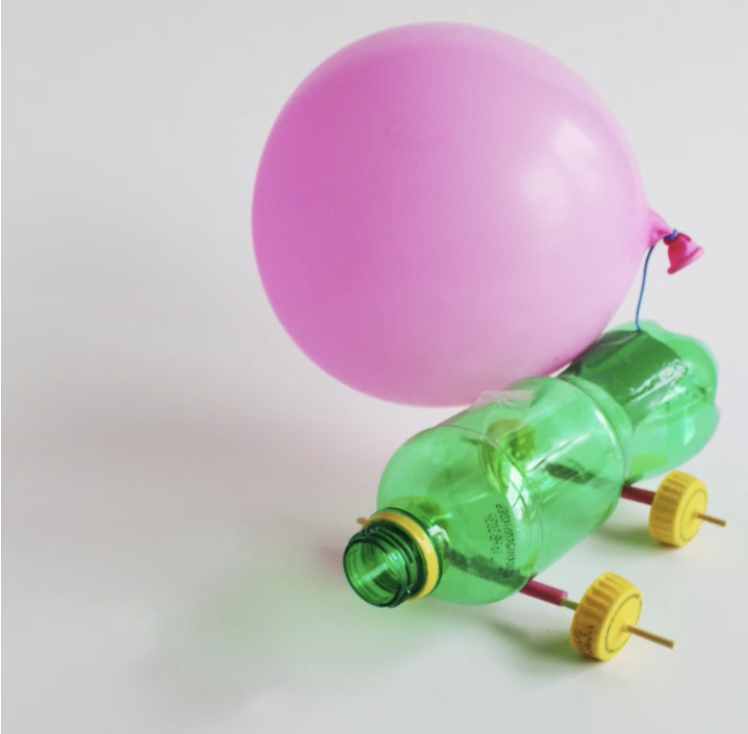
Middle School STEM Activity Challenge Balloon Powered Car
In this activity, students will work in groups to harness the power of a balloon to power their car (pop bottle with wheels). Students will modify the design of their vehicle to produce the best travel distance possible.
>>> Click here to find out more.

Middle School STEM Activity Challenge Marble (Noodle) Roller Coaster 6th 7th 8th
In this activity, students will work in groups to create a rollercoaster from foam pool noodles. They will include twists, turns, hills, and loops. The goal is to create an exciting “ride” (for the marble) while getting it safely to the ground.

Middle School STEM Activity Challenge – Marble Run (6th, 7th, 8th grade)
Working in groups students will design and build towers, ramps, and loops. They will then start marbles on the top and watch them roll, spin and drop to the bottom. Their goal will be to create a track that (safely) transports the ball to the bottom—in the most creative and unique way possible.
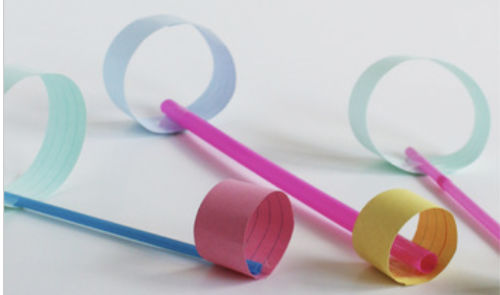
Middle School STEM Activity Challenge Hoop Glider Competition 6th, 7th, 8th
This activity challenges students to build a glider that will glide as far as possible. Working in groups, students will cut and tape various hoops to their straw. They will experiment with hoops of different sizes, positioning, and throwing styles.
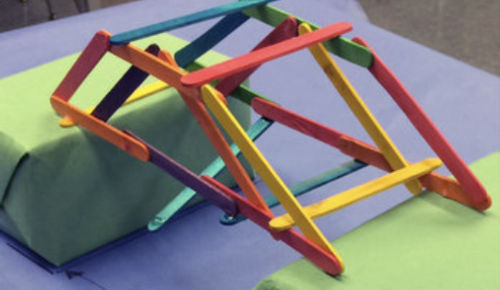
Middle School STEM Engineering Project: Popsicle Bridge (6th, 7th, 8th grade)
In this S.T.E.M. lab, students will work in groups to create a bridge from popsicle sticks (craft sticks) that will hold as much weight as possible. The student’s favorite part is when their very own bridge gets to be tested to see how much it can hold.
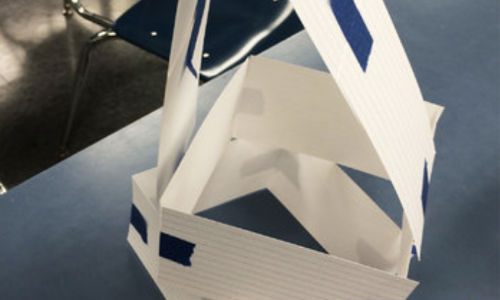
Middle School STEM Engineering Project: Index Card Tower
In this S.T.E.M. lab, students will work in groups to create a tower from index cards and masking tape. Through teamwork and problem solving, groups will raise their tower to exciting heights!
Want more activities? Click here to visit my teachers pay teachers store!
A .gov website belongs to an official government organization in the United States.
A lock ( ) or https:// means you've safely connected to the .gov website. Share sensitive information only on official, secure websites.
- Public Health in STEM Education
- CDC's Impact
- Public Health Strategy
- Teacher Resources K-12
Student Resources K–12
- College and Professional Resources
- Examples of STEM Partnerships
What to know
CDC's Comics, camps, and apps can help you explore public health. Help solve outbreaks like a disease detective. See how what you are learning in school can help create a healthier world.
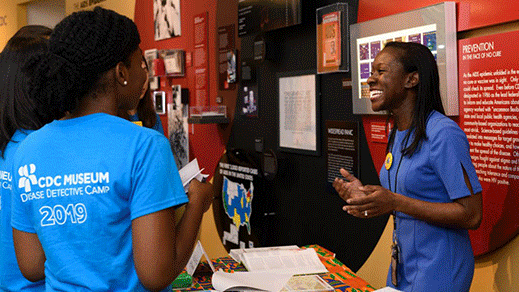
Elementary School
- Ask a Scientist Comic Series
- CDC Museum The Story of CDC Enrichment Modules
- BAM! Dining Decisions App
- See all resources
Middle and High School
Cdc museum disease detective camp.
- NCHS Data Detectives Camp
- Public Health Academy Teen Newsletter
- Junior Disease Detectives: Operation Outbreak Graphic Novel
Learn more about the CDC Museum Disease Detective Camp
Fun fact: Attend CDC Museum Disease Detective Camp as a high school student. Then, apply to become a camp counselor the next year. After becoming a counselor, apply to become the camp intern the following year!
Impact: Since 2005, over 1,950 rising high school juniors and seniors have attended camp. Students come from across the world to be immersed in this one-week CDC experience. 900 more students participated in the CDC Museum Public Health Academy Online Summer Course .
CDC Disease Detective Camp gives high school juniors and seniors exposure to key aspects of CDC.
CDC Museum Camp featured on CNN

A group of teens learn how to become disease detectives at the CDC. Learn more about CDC's Camp . Source: CNN.
Science, Technology, Engineering, and Math (STEM)
Public Health in STEM Education is a program that aims to integrate public health concepts and practices into STEM (Science, Technology, Engineering, and Math) education.
For Everyone
Public health.
- Open access
- Published: 24 December 2022
What do integrated STEM projects look like in middle school and high school classrooms? A systematic literature review of empirical studies of iSTEM projects
- Felicity I. McLure ORCID: orcid.org/0000-0003-3664-9146 1 ,
- Kok-Sing Tang 2 &
- P. John Williams 2
International Journal of STEM Education volume 9 , Article number: 73 ( 2022 ) Cite this article
6353 Accesses
7 Citations
13 Altmetric
Metrics details
The past 20 years has seen a growing focus on the integration of Science, Technology, Engineering and Mathematics (iSTEM) disciplines in schools to provide students with authentic experiences in solving real-world problems. A frequently stated aim for iSTEM projects has been increasing engagement and interest in pursuing STEM subjects in senior high school and tertiary studies. In order to better understand the iSTEM projects’ landscape in school classes, this systematic literature review analysed empirical studies of integrated STEM projects carried out in secondary schools to answer the following questions: What are the characteristics of the projects described and to what extent do these projects reflect characteristics of effective STEM projects; and to what extent does research into iSTEM projects in classrooms investigate specific methods of integration of STEM domains? Thirty-five peer-reviewed publications were identified from database searches that met the following inclusion criteria: (a) integrating two or more of the STEM areas, (b) middle/high school education and (c) explicitly describing the research intervention. The review revealed a diversity of iSTEM approaches in the literature, with Engineering and Science, particularly Physics, the most commonly integrated fields. Concerns are raised about the degree to which projects are relevant to students and their context and address the diversity found within student cohorts. A gap was found in the literature in detailing how teachers and students enact integration of STEM skills in these projects.
Introduction
Integration of STEM (Science, Technology, Engineering and Mathematics) fields in projects from K-12 has been proposed as a means of improving engagement with these fields and increasing the selection of related courses at senior high school and university level (Honey et al., 2014 ). However, despite these efforts, enrolments in STEM fields such as Physics, Engineering, Computing and Mathematics at tertiary level continue to be of concern (Office of the Chief Scientist, 2020 ).
However, despite the focus over the past 20 years on engaging student interest in STEM fields through providing students opportunities to use skills and knowledge from different STEM domains to solve problems, little is known about the types of projects that are being characterised as integrated STEM projects in the classroom and the ways in which the domains are integrated. When teachers or researchers talk about projects that integrate STEM, are certain STEM domains, such as engineering and science, more likely to be addressed than others? In addition, to what extent and in what ways are data being collected and analysed to explain how STEM domains are being integrated by teachers and students while carrying out projects characterised as integrated STEM projects? As a snapshot of the types of projects that integrate STEM, this systematic literature review aims to investigate these questions by analysing empirical studies of projects that claimed to integrate STEM domains, within classroom settings, from 2000 until the end of 2021.
Definitions of integrated STEM
There has been much debate about what constitutes integrated STEM education and hence there has also been disagreement about the most effective ways to approach instruction when integrating STEM domains (Moore et al., 2020 ; Nadelson & Seifert, 2017 ; Sgro et al., 2020 ). STEM integration is frequently defined as the attempt to support students in making connections between two or more of the STEM disciplines within an authentic context (Kelley & Knowles, 2016 ; Moore et al., 2014 ). This models real-world experiences where teams of professionals from differing disciplines work together to solve real-world problems. For the purposes of this systematic literature review, we examined STEM projects that involved interdisciplinary or transdisciplinary integration of at least two domains (Honey et al., 2014 ; Kelley & Knowles, 2016 ; Li, 2018 ). Interdisciplinary integration involves relating closely linked concepts and skills from two or more disciplines with the aim of deepening knowledge and skills (Vasquez et al., 2013 ). Transdisciplinary integration applies knowledge and skills from two or more disciplines to real-world problems and projects to shape the learning experience (Vasquez et al., 2013 ).
There are differences in the interpretation of the T and the E in STEM at the school level. Some curricula interpret Technology as digital technology, while in other countries, Technology is design and technology. For the purposes of this research, we adopt the Australian conception in which Technology represents both digital technology and design and technology (ACARA, 2022 ). Few jurisdictions include Engineering as a school subject (apart from the USA), so in the STEM context, this element of the acronym is increasingly considered as a reference to the Engineering design process, as promoted by the Next Generation Science Standards (NGSS, 2022 ).
Prior reviews of integrated STEM literature
Even though the acronym “STEM” was only coined in 2001, there has been a large amount of literature published on the topic. Trends in STEM literature over the preceding period were analysed by Li et al. ( 2020 ) who found that research in STEM education has increased in importance over the two decades since the term was first used, but that there was a lack of consensus about what constitutes STEM and particularly, integrated STEM. The diversity of opinions and definitions of STEM has contributed to difficulties in carrying out general literature reviews to describe the field (Li et al., 2020 ). As a consequence, many of the literature reviews available focus on narrow areas of integrated STEM education.
For instance, a review of commonly used teaching strategies in integrated STEM education (Mustafa et al., 2016 ) indicated that project-based learning approaches were most prominent. Likewise, a systematic literature review by Thibaut et al. ( 2018 ) investigating the instructional practices employed when implementing integrated STEM projects found that integration of STEM content, problem-centred or problem-based learning, inquiry-based learning, design-based learning and cooperative learning were the most common frameworks used. However, neither of these reviews analysed the ways in which STEM domains were explicitly or implicitly integrated within each of these instructional approaches.
A systematic review looking at the major challenges in implementing integrated STEM projects identified limited teacher confidence, lack of guidance to teachers in planning projects, and knowing how to effectively integrate STEM areas, as the major reasons why teachers avoided carrying out such projects (Arshad et al., 2021 ). Teachers themselves confirmed that, while they think that carrying out integrated STEM projects is beneficial to students, they frequently encounter challenges in fitting STEM projects into a busy curriculum, have not been provided with pedagogical tools for implementing such projects, lack support through professional development and collaboration opportunities, and hold concerns about whether students will learn the required curriculum content (Margot & Kettler, 2019 ). However, the characteristics of projects being presented to students as integrating STEM, have not been analysed. Considering the lack of clarity and consensus surrounding definitions of integrated STEM projects amongst researchers, it is not surprising that teachers are unclear and are lacking in confidence about how to proceed.
Consequently, without a clearly defined theoretical framework for integrated STEM education, there has been a lot of debate about what constitutes best practice in the integration of STEM fields. Based on a detailed analysis of literature published about integrated STEM, Roehrig et al. ( 2021 ) developed a comprehensive framework to conceptualise good practice when developing integrated STEM projects. They identified seven characteristics of effective STEM projects:
Making an engineering design process central to the project, during which students participate in at least one cycle of designing, evaluating and re-designing;
Choice of authentic problems which are relevant to the students’ contexts, which take into account the diversity of students, and address social, political or ethical aspects of the problem or socio-scientific issues (SSI);
The context of the problem needs to allow for explicit connections with developmentally appropriate subject content, skills and learning goals;
In addition, explicit connections should be made between the content in targeted disciplines which could involve multidisciplinary, interdisciplinary or transdisciplinary approaches;
Development of STEM practices are necessary in order to produce solutions, such as active social construction of understanding, collection, analysis, manipulation and visualisation of data, argumentation supported by evidence-based reasoning and consideration of multiple aspects of the problem (e.g., social benefits or costs);
Employment of twenty-first century skills such as creativity and collaboration;
Explicit links are made with possible future STEM careers.
In particular, in order to cater for diversity within the classroom, rather than taking a deficit view of what is keeping certain students from engaging with STEM, researchers and teachers are encouraged to think about what can be changed about STEM projects in order to address the interests, skills and experience of all students (Zeidler, 2016 ). Brotman and Moore ( 2008 ) identified important ways in which curricula can become more inclusive, including more gender-inclusive, by: including students’ interests and experiences; using real-world problems; engaging with societal problems that are burning issues for students; and encouraging active participation, agency, collaboration and communication. Zeidler ( 2016 ) highlights the importance of addressing socio-scientific issues as a sociocultural response to designing inclusive STEM projects. In this review, we adopt Roehrig et al.’s ( 2021 ) view of what constitutes effective integrated STEM projects.
Although reviews clarify some of the methodologies and teaching approaches used or recommended for integrating STEM in schools, what is less clear is what types of projects are being put forward as integrated STEM projects, the STEM domains that are most commonly integrated, and an understanding of how integration is achieved. While some jurisdictions provide guidelines for integrating STEM domains (e.g., NGSS Lead States, 2013 ) the focus of this paper is the enacted curriculum, that is, how guidelines and recommendations for integrated STEM are translated in practice within classrooms (Cal & Thompson, 2014 ). This systematic literature review seeks to understand these aspects by focusing on empirical studies that describe the integrated STEM projects (the enacted curriculum) being implemented with enough detail to answer the following research questions.
Research questions
Considering middle/high school projects that are identified by the authors as integrated STEM projects:
What are the characteristics of the projects described?
What disciplines are explicitly (or implicitly) integrated in these projects?
To what extent do these projects reflect characteristics of effective STEM projects identified by Roehrig et al. ( 2021 )?
What are the foci of research in empirical studies of integrated STEM projects? To what extent does research into iSTEM projects in classrooms investigate specific methods of integration of STEM domains?
In order to systematically review the literature to answer the research questions the following Preferred Items for Systematic Reviews and Meta-Analysis (PRISMA) (Moher et al., 2009 ) steps were addressed: establishing relevant inclusion/exclusion criteria; determining a search strategy; searching and screening potential studies; evaluating included studies; analysis and synthesis of themes. The inclusion and exclusion criteria utilised were:
Inclusion criteria
Empirical studies reporting the implementation of an iSTEM project.
The authors identify two or more disciplines of STE or M addressed. The project may also include STEAM (with the Arts) or STEMM (with Medicine) dimensions.
The iSTEM project is explicitly described; summarised in the methodology and/or illustrated with excerpts/examples in the results.
The projects involved middle school (Grades 5–8) or high school students (Grades 9–12) or appropriate equivalents.
Data may be qualitative and/or quantitative.
The intervention can take place outside of the school setting—informal settings.
Exclusion criteria
Study is published earlier than 2000.
Study describes STEM projects with elementary and university age students.
Limited description of the project/s being implemented.
Theoretical papers.
Review papers.
Papers not written in English.
Search strategy
Title, abstract and keywords were searched in ProQuest, ERIC, Scopus, Sage Journals and Web of Science databases using a search for terms agreed between the authors, these being: “integrated STEM” OR “integrated STEAM” OR “integrated STEMM” OR “interdisciplinary STEM (STEAM/STEMM)” OR “Science, Technology, Engineering and Mathematics” AND “project*” AND “secondary school” OR “high school” OR “middle school”. It was decided to limit the scope of the study to publications from January 2000 onwards, since the term STEM was coined in 2001.
Data screening and extraction
The data screening process is described in Fig. 1 . The search results ( N = 221) were imported into an Excel spreadsheet and duplicates and conference proceedings were removed ( n = 106). Each author then independently checked the titles and abstracts of the remaining articles ( n = 115), excluding those studies that did not meet the inclusion criteria ( n = 71). Where conflicts arose, the authors consulted and discussed whether to include or exclude the study.
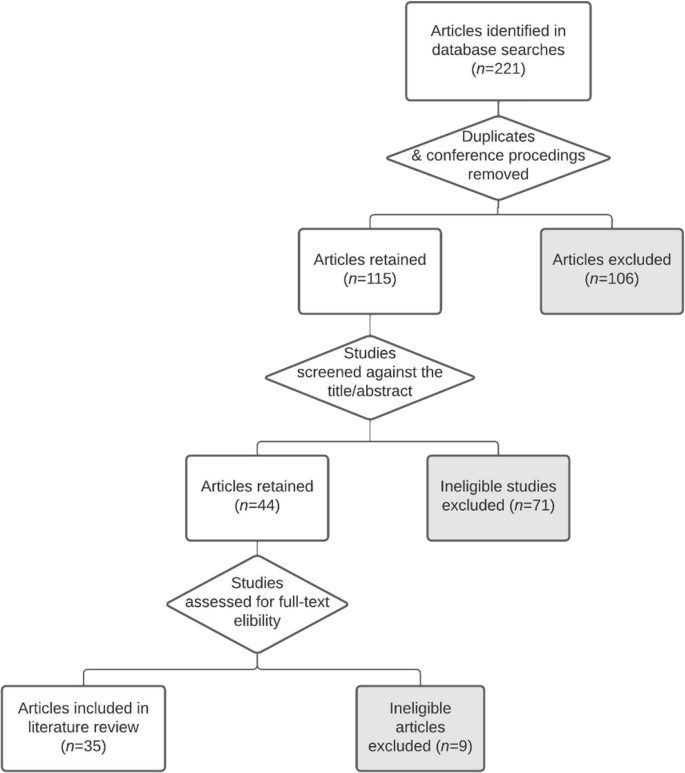
PRISMA flowchart
In the second phase of screening, the authors individually examined the full text of studies ( n = 44) and made decisions to include or exclude the studies based on the inclusion criteria. Where conflicts relating to decisions about exclusion/inclusion occurred, the authors met to resolve them.
Finally, authors extracted data from the remaining 35 studies, including publication date, country of the author and setting of the study, study design, data type collected, type of class (unidisciplinary or multidisciplinary) data was collected in, STEM fields integrated, whether integration is elaborated, a description of the scope of the project(s), instructional approach, cohort and research focus. One other author then checked the extracted data for accuracy. The extracted data were then summarised, and further thematic analysis was carried out where appropriate.
Data analysis
For most of the data extracted, analysis involved aggregating numbers of papers within each category. However, in the areas of domains of STEM integrated, instructional approaches, whether student context/interests are addressed, student autonomy and research foci, themes were identified within each area. For instance, within the research foci, the theme ‘development of students’ content knowledge’ arose as an important focus of research within these articles. In order to determine which domains were integrated within the project, the authors first searched for statements by the authors of the study that specifically identified domains such as Physics or Engineering. In some cases, when domains were not explicitly identified, the authors identified domains from the description of the project and the activities carried out which implied that certain domains were addressed. Data from each paper were placed under each of these themes as appropriate. When new themes arose during this initial analysis, these were added. Once saturation of themes was achieved and no more major themes arose (Bryman, 2012 ), the authors cross checked each other’s analysis of themes.
Research question 1: characteristics of studies
The 35 articles which met the inclusion criteria were published in 25 different journals (see Additional file 1 for a complete list). The majority of these journals had either a Science focus (e.g., Journal of Research in Science Teaching ) or at least two STEM areas (e.g ., Journal of Science Education & Technology ) (Fig. 2 ). No articles were found in journals which focused solely on Mathematics.

Subject area focus of publishing journals
There were no articles found before 2010, although the number of articles for each year has increased steadily since then (Fig. 3 ). The research described in the included articles was carried out in 8 different countries, 60% in the USA (Fig. 4 ). The majority of studies had a case study design or were quasi-experimental using pre/post tests (Fig. 5 ). In one article, the methodology was unclear. Thirteen studies focused on qualitative data, seven on quantitative data, while 14 collected both qualitative and quantitative data. Data types collected from the studies are described in Table 1 (as many studies utilised multiple data sources, the total number in Table 1 exceeds the sample size of 35). The cohorts who participated in iSTEM projects and who were the focus of the papers ranged from Grade 5 to Grade 12 students and included mixed age groups (Fig. 6 ). Some of the articles described participation in a range of different STEM projects for several grade levels.
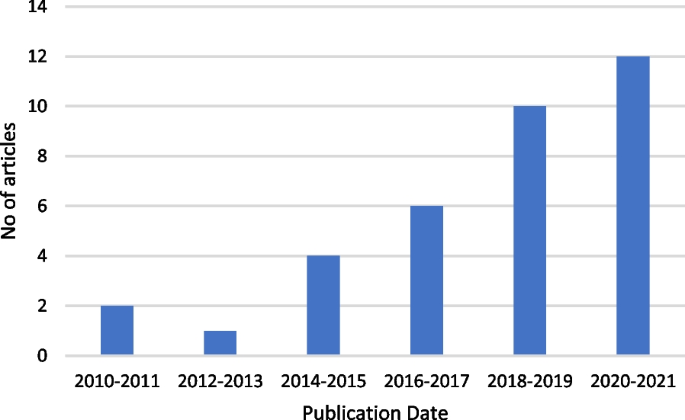
Publication date of included articles
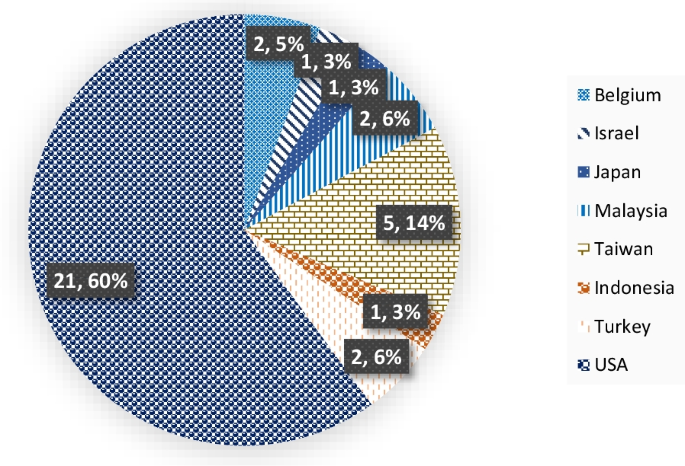
Countries where research was carried out
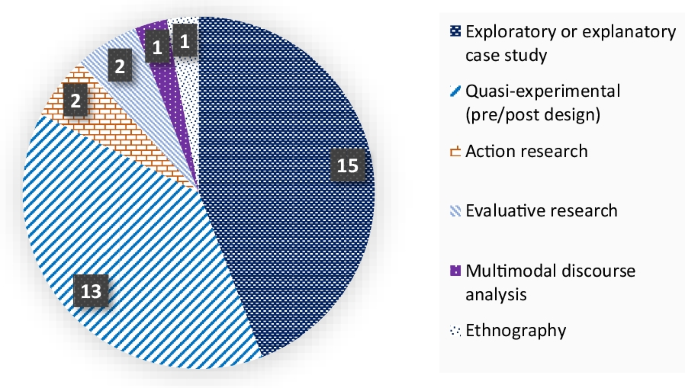
Reviewed articles study design
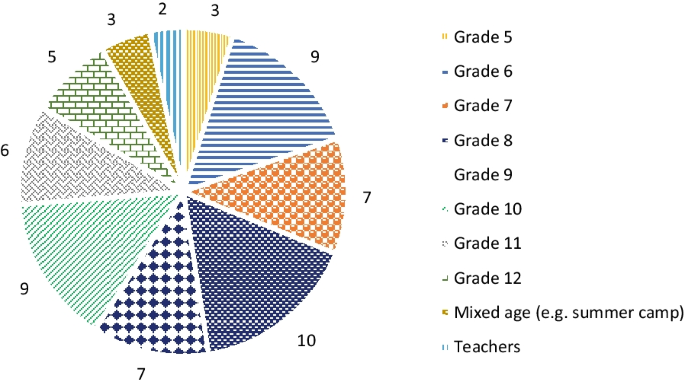
Cohort described in the reviewed studies
We also examined the types of classes in which the iSTEM projects were carried out. About half of the projects were implemented in unidisciplinary classes (i.e. classes that normally focus on one of the STEM subject areas). Of these, 14 were projects implemented as part of Science classes, two as part of Engineering classes and one as part of a Technology class. Eighteen of the studies implemented iSTEM projects in a multidisciplinary class where the focus was specifically on integrating several STEM areas.
In response to research question 1a, we firstly examined the STEM areas that were integrated within the project. Twenty-four of the studies elaborated which areas were integrated, while five gave limited descriptions of integration, and integration was not the focus for six studies. Areas of integration are listed in Table 2 . Science skills and content knowledge featured in all but two of the studies, while 31 studies included an Engineering focus. Twenty studies explicitly discussed integration of technology (e.g., through robotics, electronics, 3D printing, computer programming). Likewise, 20 of the studies indicated that mathematics was integrated into the project. Although all the studies claimed to be integrating a number of STEM areas, two studies only focused on one area (Table 2 ).
Within the Science domain, content knowledge from Physics, Chemistry, Biology and/or Earth Science (including Astronomy) was identified as a focus of the project (Table 3 ). Physics topics were the most commonly included Science topics in STEM projects. Note that some projects included more than one Science learning area.
To what extent do these projects reflect characteristics of effective STEM projects identified by Roehrig et al. ( 2021 ) ?
Firstly, we examined whether the engineering design process was central to projects. A wide variety of projects were described. These could be organised under four broad themes described in Table 4 : (i) design challenges which involved constructing prototypes (23 studies); (ii) hands-on learning activities (11 studies), such as making DNA models to understand genetically modified organisms (Wanoho et al., 2021 ); (iii) student-designed inquiry projects (3 studies), such as experiments aimed at explaining metal purification methods (Daman Huri & Karpudewan, 2019 ); and (iv) abstract problem solving (2 studies), such as brainstorming to solve problems related to space travel (Moreno et al., 2016 ). There were several articles that described more than one project, such as a study which looked at the integration of mathematics into a number of different STEM projects, including designing and making ballistic devices and understanding the properties of circles and theorems (Nathan et al., 2017 ). The 23 design challenges met the criteria for an engineering design process as they included at least one cycle of designing, evaluation and re-designing. However, the hands-on learning activities, where the teachers guided students through activities, gave limited opportunities for them to engage with an engineering design process.
In addition to examining the types of projects described, the instructional approaches identified by the authors in each paper could be categorised according to five key principles identified by Thibaut et al. ( 2018 ): integration of STEM content, problem-centred learning, inquiry-based learning, engineering design-based learning and cooperative learning. Instructional approaches are summarised in Table 5 . Some articles identified more than one instructional approach. The most common approach was an engineering design approach followed by problem-based/oriented learning. Both of these approaches were often combined with inquiry approaches and included cooperative learning. Engineering design was also incorporated into some of the problem-based learning approaches. However, two of the studies focused on presenting learning through a series of guided tasks, such as a NASA unit, “Thinking Like an Astronaut” (Moreno et al., 2016 ) rather than utilising an engineering design process. Additionally, the focus of one study was on preparing students for assessment. Five studies also specifically referenced a focus on Social Scientific Issues (SSI) (e.g., Wanoho et al., 2021 ). All of the studies claimed to integrate STEM content. However, six of the articles examined did not identify the instructional approach that they used.
Secondly, we examined each of the articles to understand whether the authors explicitly took into account the students’ context or interests in order to produce authentic problems. Of the design challenges, 12 consisted of a design brief which considered the students’ context, although student context or authenticity of the projects was not the main focus of these papers, and was often only mentioned in passing. The example which most clearly addressed the students’ context was one in which they designed an amphitheatre, within a budget, to meet the needs of the local community (Newman et al., 2015 ). The other design briefs focused on designing “things” without any explicit relationship to the students’ context (c.f., Gunckel & Tolbert, 2018 ) (e.g., a CO 2 powered model drag racer (Chien, 2017 ) or designing and building a balsa wood house to survive in a wind tunnel (Barrett et al., 2014 )).
Of the projects that focused on teaching a concept or concepts through hands-on activities, none of these considered the context of the students explicitly, although two projects addressed SSIs. Of the projects which focused on inquiry learning, two were context specific. However, students were given agency in designing experiments. Neither of the abstract problem-solving projects specifically engaged with student context.
One way of ensuring that projects are relevant to students is allowing for student design or choice of project topic. Fifteen of the 35 studies implemented projects that were externally designed, either by the researchers or by other experts such as NASA or Curriculum developers (e.g., Petrosino et al., 2016 ; Wilhelm et al., 2013 ). A further seven studies described teacher/researcher collaborative efforts to design the STEM project/s (e.g., De Meester et al., 2020 ). Teachers were instrumental in designing 11 of the projects (e.g., Wieselmann et al., 2021 ). Only two of the 35 studies gave students agency in choosing the problem to be studied (Kapon et al., 2021 ; Newman et al., 2015 ).
Of the 35 studies examined, only three mentioned that they made explicit links for students with possible future STEM careers as part of the project design. For instance, in the project described by Burrows et al. ( 2014 ), career connections were explicitly discussed in class and included in assessment questions. However, 18 studies did mention that one of the goals for introducing integrated STEM projects to students is that participation in these may increase engagement with future STEM careers and two of these studies examined whether students had changed their perspective about STEM careers as a result of doing these projects. However, neither of these papers mentioned whether this was an aspect that was explicitly addressed in lessons. In one study, including a “STEM Career Connections” component was considered, but the project designers chose not to because they did not think this was critical to the success of the project (Gale et al., 2020 ). The rest of the articles did not mention STEM careers at all.
Research question 2: foci of research
In response to research question 2 (What are the foci of research in empirical studies of integrated STEM projects? To what extent does research into iSTEM projects in classrooms investigate specific methods of integration of STEM domains?), the research questions for each study and the outcomes reported were examined. The research themes that were identified are displayed in Table 6 . It should be noted that some studies had multiple research foci.
It can be seen from the research foci presented in Table 6 that there is a very limited focus in the literature on describing the ways in which the STEM domains are practically integrated as iSTEM projects are enacted. The largest group of studies focused on the degree to which students had developed STEM-related content knowledge or skills as a result of participating in an iSTEM project. Many of these utilised a pre/post-test design, and in some cases compared results with a control/comparison group (e.g., Chen & Chang, 2018 ). Of the 12 studies which focused on the degree of content knowledge acquisition, 10 indicated that students had improved content knowledge, while two studies showed no significant learning had taken place. Four studies observed students actively applying STEM knowledge and skills to solve problems. Likewise, most studies noted that STEM skills, including twenty-first century skills, such as creativity and collaboration, improved as a result of participation in these projects. However, one study showed no noticeable improvement in skills.
Students’ experience of the lessons in terms of their motivation, self-efficacy and engagement was also a prominent theme, mostly evaluated through questionnaires, interviews, journals and video recordings (e.g., Chu et al., 2020 ). Seven studies observed high levels of engagement and motivation amongst students as they carried out STEM projects. Likewise, students’ attitudes towards STEM subjects and intentions to continue in the STEM pipeline were determined through questionnaires (e.g., Lou et al., 2011 ). Most of the studies examining changes in attitudes towards STEM indicated an improvement as a result of the STEM projects, although one study indicated no improvement had taken place.
The degree and types of participation of students while completing iSTEM projects, including gender differences, were analysed through classroom observations, videos and journal entries (e.g., Gardner & Tillotson, 2020 ; Wieselmann et al., 2020 ). For instance, Wieselmann et al. ( 2020 ) showed that boys and girls participate differently in STEM activities within small groups—the boys tending to be controlling and competitive and ignoring the girls’ contributions.
Teachers’ perceptions of the efficacy of the iSTEM intervention based on questionnaire and interview responses was the focus of five studies (e.g., Gardner & Tillotson, 2019 ). A number of challenges for implementing STEM projects were described by teachers, such as scheduling difficulties, difficulties using technology, and in making links to the curriculum (Stohlmann et al., 2011 ). Fidelity of implementation of specific iSTEM approaches by teachers was also analysed in two studies (e.g., Petrosino et al., 2016 ), and three studies considered the challenges that arise when integrating STEM domains (e.g., Stohlmann et al., 2011 ).
Surprisingly, the research questions in only five studies specifically targeted the enactment of STEM integration within an iSTEM project. For the most part, these studies carried out detailed analyses of audio/video recordings (e.g., multimodal discourse analysis (Nathan et al., 2017 )) of groups participating in STEM projects to understand teacher and student choices/actions/discussions. Mathis et al. ( 2018 ) presented a case narrative using quantitative content analysis to describe how students chose to use science and mathematics content through different engineering design phases while solving an engineering problem. Burrows et al. ( 2018 ) focused on engineering skills and identified numerous ways in which science, and to a lesser extent mathematics, was integrated while enacting these skills in an informal, community-based project. On the other hand, Dare et al. ( 2018 ) focused on iSTEM projects within the Science classroom. Teachers identified the time spent addressing the domains of STEM in each lesson. Teachers were then categorised as having low, moderate or high levels of STEM integration within their classes. They found that teachers are not always aware of how to meaningfully make explicit connections between domains, struggling to integrate mathematics and engineering into science instruction. In particular, engineering appeared to be an add-on, especially for those who had low levels of integration. Wieselmann et al. ( 2020 ), on the other hand, found that girls and boys, working in small groups, engaged with science or engineering focused lessons in different ways and may need practice and support in moving between these two discipline areas. In order to promote STEM integration, Nathan et al. ( 2017 ) found that cohesion between fields is best achieved when students themselves find their own ways to integrate fields as they apply ideas to more abstract principles.
This systematic literature review focuses on two areas that have not previously been investigated: what are the characteristics of projects being classified by researchers/teachers as integrated STEM projects; and to what extent are the specific ways in which integration of STEM domains investigated in the classrooms where they are enacted? In order to take a snapshot of the integrated STEM project landscape, we limited the review to empirical studies of iSTEM projects carried out with middle/high school students.
The authors of the 35 articles which met the inclusion criteria for this literature review identified a wide variety of projects that they considered exemplified integrated STEM. Making the engineering design process central to effective iSTEM projects is one of the recommendations made by Roehrig et al. ( 2021 ). Although engineering design was prominent amongst the instructional approaches identified by authors, other instructional approaches were also prominent, such as project based/oriented learning (Table 5 ). This is consistent with the findings of Mustafa et al. ( 2016 ) and Thibaut et al. ( 2018 ). However, several projects made no mention of engineering design, focusing on inquiry approaches or hands-on learning. In particular, the projects which presented hands-on learning activities left little or no room for design/re-design by students.
In terms of the types of projects students were engaging with, the authors identified four types (Table 4 ). Consistent with the engineering design approach used in many of the projects, 23 of the 35 studies gave students a design brief which allowed students to design some kind of physical model or prototype in order to solve a specific problem. These clearly fit the recommendations of Roehrig et al. ( 2021 ). However, although 23 of the projects identified by the authors as iSTEM did have an engineering design focus, surprisingly, 16 of the projects described did not specifically use the engineering design cycle. For instance, there were 11 projects which focused on teacher directed, hands-on activities to communicate content knowledge and skills to support students’ learning (Table 4 ) rather than employing the engineering design cycle to address a specific problem. Although these projects allowed students to construct models, for instance 2D and 3D models to explain lunar periodicity and phases (Wilhelm et al., 2013 ) or DNA models to understand genetically modified organisms (Wanoho et al., 2021 ), the engineering design process was not followed as students were given limited agency in the design process. This raises the question of whether these fit into the category of integrated STEM projects, especially if the characteristics of effective STEM projects identified by Roehrig et al. ( 2021 ) are considered. These findings indicate that researchers (and teachers) may not be operating under coherent definitions of what constitutes an integrated STEM project. We would argue, together with Roehrig et al. ( 2021 ), that projects that do not allow students to design their own solutions to problems, evaluate those designs and then re-design do not meet criteria for best practice in integrating STEM domains.
Another feature of effective iSTEM projects is that they enable students to engage with authentic problems which are relevant to their context. On the whole, the engineering design challenges (Table 4 ) gave students agency in the design/re-design process and the inquiry tasks also allowed students to design experiments. However, considering the recommendations of Roehrig et al. ( 2021 ) that effective iSTEM projects should be relevant to the students’ context, relate to their interests, and take into account diversity amongst students, it is concerning that only 11 of the studies specifically mentioned that problems relevant to the students’ contexts or interests were considered when designing the iSTEM project. For instance, one of the projects, that included a service-learning component, asked students to design an amphitheatre for a local park that the community and school could share (Newman et al., 2015 ). In addition, five projects explicitly consider socio-scientific issues, such as producing genetically modified organisms, in the project design (Wanoho et al., 2021 ). These projects may meet the criteria for projects that are authentic and relevant to students of Roehrig et al. ( 2021 ). However, it was unclear whether the SSIs addressed were of particular importance to the students carrying out the tasks. This begs the question about the extent to which students’ interests and concerns are being considered as iSTEM projects are designed.
In addition, 19 of the projects asked students to design and build artefacts that did not explicitly consider the student context, although these studies stressed the importance of providing real-world problems, that professionals may engage with, to increase student engagement. For instance, a competition to build a robotic arm was thought to be motivating for students, but no mention was made about how this device was relevant to students’ lives (Chu et al., 2020 ). It may not be sufficient to simply provide design problems that represent the types of problem-solving experiences that occur in industry but, as indicated by Brotman and Moore ( 2008 ), projects should address issues and concerns that are important to students in order to engage their interest.
This problem is compounded by the fact that, in almost all the studies, students were not given choice about the project that they would investigate. This limits the ability for the iSTEM experience to address diversity of interests and life experiences within the student cohort.
The two exceptions, where students were given choice, were a study in which the students developed the problem that they would investigate: understanding the difference in efficiency between a stationary and tracking solar panel (Kapon et al., 2021 ); and a service project where students identified problems within their communities to be solved (Newman et al., 2015 ).
In addition to our concerns over some of the instructional designs of projects being put forward as integrated STEM projects, the degree of integration within projects was not always evident. All of the studies claimed that STEM fields were being integrated within these projects (c.f., Thibaut et al., 2018 ). However, for some of these studies, integration of STEM was either not the focus or the ways in which these fields were integrated was not evident. When considering the degree of integration of Science, Technology, Engineering and Mathematics within each of the iSTEM projects in this study, it was evident that the Science and Engineering fields dominate within these projects (Table 2 ). This is consistent with Bybee’s ( 2010 ) description of the variety of definitions of STEM integration, ranging from Science and Engineering to all four domains. Thirteen of the 35 studies included at least all four domains. In addition, two studies included Social Science and English together with STEM. While 31 studies included the Engineering domain, the majority of these utilised an Engineering Design process rather than the development of engineering content knowledge. All but two of the studies included Science skills or knowledge, and technology was less likely to be identified as a domain that was integrated into the project (20 studies). This is consistent with studies which show that, even though digital technologies are frequently used in projects, the use of these technologies is often assumed rather than explicitly examined (Ellis et al., 2020 ). Mathematics was also not explicitly included in 15 of the 35 studies. It is possible that in other studies, even though connections with mathematics and technology are not explicitly addressed, they may be seen as tools of science or engineering (Baldinger et al., 2021 ).
The predominance of physics (21 studies) and astronomy (4 studies) as the Science content area addressed (Table 3 ) may be related to the number of design briefs that asked students to build prototypes. When limited connections are made between STEM projects and the students’ context and interests, and the value to students and the communities that they live in are not made explicit, and when many of these projects have a physics and engineering focus, stereotypes of these subjects may be further consolidated in students’ perceptions. Chemistry topics (8 studies), while less common, tended to be associated with inquiry tasks, such as designing experiments to understand the processes involved in mineral purification (Daman Huri & Karpudewan, 2019 ) or problem solving, for instance to stop corrosion on a metal bridge (Yüceler et al., 2020 ).
The inclusion of biology topics (11 studies) was also less common than for physics and were sometimes associated with teaching activities to understand biological concepts, such as body systems (Ntemngwa & Oliver, 2018 ) or design challenges based on biological examples (Gale et al., 2020 ). However, several of the projects that included biology identified SSIs in the local community, for which students designed solutions through an engineering design process (e.g., Newman et al., 2015 ). These projects met many of the characteristics of effective STEM projects identified by Roehrig et al. ( 2021 ). It may be that incorporating a biology topic into an engineering design cycle appropriate for middle and high school is more challenging to designers than inclusion of physics concepts.
Considering that one of the rationales for introducing iSTEM projects in middle/high school has been to increase students’ understanding of what careers in STEM entail, and hence increase students’ willingness to consider STEM careers in the future (Honey et al., 2014 ) our finding that almost no studies explicitly made connections between the iSTEM projects and possible careers, as suggested by Roehrig et al. ( 2021 ), is surprising. This may have been due to the research focus of the paper being unrelated to career choice. However, even in the cases where one of the research questions was to understand the influence of participation in iSTEM projects on students’ future choice of careers, no mention was made of how students’ were informed about connections between their learning in the project and possible careers.
Finally, in response to research question two, the main focus of research involving integrated STEM projects has been on learning outcomes, the degree to which students are learning specific STEM skills and content knowledge as a result of these projects (Table 6 ). In addition, affective aspects including change in attitudes to STEM, motivation and engagement throughout the STEM project were major foci of research. On the other hand, there were only five studies of exactly how students and teachers enact the integration of STEM domains throughout the project. The focus on learning outcomes related to iSTEM projects may be in an attempt to address the concerns raised by teachers about whether participation in STEM projects is in fact resulting in students learning the required curriculum content (Margot & Kettler, 2019 ). Likewise, iSTEM projects have been promoted as a way forward for increasing students engagement with and interest in pursuing STEM subjects later in school and at university (Honey et al., 2014 ), which may explain the number of studies which focus on increasing these affective aspects of learning.
The small number of studies which analyse the enactment of integrated STEM projects, however, is more surprising, particularly when teachers have indicated that they need more direction and support on how to effectively integrate learning areas (Arshad et al., 2021 ; Margot & Kettler, 2019 ). In addition, Roehrig et al. ( 2021 ) identify that making explicit connections between the content of the targeted disciplines is one of the essential factors for effective iSTEM projects. Of the five studies that investigated the enactment of integration, Burrows et al. ( 2018 ), Mathis et al. ( 2018 ) and Nathan et al. ( 2017 ) were the only studies which specifically addressed the ways in which domains were integrated. Burrows et al. ( 2018 ) briefly described how science content was integrated within engineering skills. Nathan et al. ( 2017 ), on the other hand, did not focus on integration of all domains but analysed the ways in which the teacher guided engagement with mathematics as students completed mechanical and electrical engineering design projects. Mathis et al. ( 2018 ) took the approach of focusing on each of the engineering design phases within an iSTEM project and analysing how students chose to use science and mathematics in each phase while solving the engineering challenge.
On the other hand, Dare et al. ( 2018 ) developed an innovative method for measuring the degree of integration within a series of lessons within a Science classroom by using a digital teaching log to identify the length of time spent addressing each domain in each lesson. This allowed the authors to identify teachers who had low, medium and high levels of integration. However, the study did not analyse how individual domains were integrated. Likewise, the study of Wieselmann et al. ( 2020 ) looked at frequency of certain performances, such as reasoning, encouraging and suggesting, within lessons that they identified as focusing on either Science or Engineering, rather than on how Science and Engineering were integrated. What is clear is that it is challenging to find ways in which to measure the degree of integration of domains and describe ways in which they are integrated. This finding suggests that there is much scope for classroom-based studies to probe effective strategies for integrating STEM domains.
Limitations and recommendations
It is possible that by including some of the search terms, such as projects, into the search engine criteria some integrated STEM studies may have been missed. The search also only included studies in English, which, perforce, limits the number of studies.
However, we offer the following recommendations for further research based on the scope of the studies that have been included. Firstly, further research is needed into the types of projects that would engage a greater diversity of students. For instance, a focus on designing “things” (Gunckel & Tolbert, 2018 ), untethered to students’ interests or concerns, may be one of the reasons why girls, in particular, are less motivated than boys to participate in integrated STEM projects (Brotman & Moore, 2008 ; Koul et al., 2021 ). Students’ beliefs that STEM careers do not address their diverse interests and concerns, including gendered interests, has been identified as one of the reasons that females are not choosing to continue to study subjects such as engineering, physics and computer science (Su et al., 2009 ). The higher enrolment of females in biology and, to a lesser extent, chemistry in preparation for caring careers, such as in the health sector, is indicative of gendered interests that are, on the whole, not being addressed within the context of iSTEM projects (Eccles & Wang, 2016 ). This is highlighted by the preponderance of physics-based projects presented in these studies (Table 3 ). Projects which only set one type of problem, such as building a ballistic device (Nathan et al., 2017 ) or CO2-powered model drag racers (Chien, 2017 ) may be of interest to some students, but do not take into account the diversity of students (Roehrig et al., 2021 ), and may, in fact, perpetuate stereotypical perceptions of engineering as the preserve of males (Master et al., 2016 ). We would suggest that, in order to address diverse interests within the student cohort, further research is needed into whether targeting biology within the Science domain of iSTEM projects increases the engagement and interest of girls in STEM.
Secondly, further research is needed regarding the effects of giving students more agency in choosing the problem that will be addressed through the STEM project.
Thirdly, the effects on attitudes towards STEM careers of making explicit links with possible careers as students carry out STEM projects is another area of research suggested by the results of this literature review.
Finally, the limited number of studies which investigate specific ways in which STEM domains are integrated suggests that further research is needed into methodologies for measuring the degree of integration and understanding best practice to effectively integrate STEM domains.
This systematic literature review addresses two main research questions: What are the characteristics of the projects described and to what extent do these projects reflect characteristics of effective STEM projects identified by Roehrig et al. ( 2021 ); and to what extent does research into iSTEM projects in classrooms investigate specific methods of integration of STEM domains?
It was evident that there were a wide variety of ways in which researchers and teachers understand STEM integration. While a majority of studies claimed to integrate, at least, Engineering and/or Science, only half of the studies presented students with an engineering design challenge which asked students to apply the engineering design cycle, as recommended by Roehrig et al. ( 2021 ). Mathematics and technology were less likely to be explicitly addressed within these projects. The specific ways in which integration of STEM domains occurred was only discussed in a small number of papers. The majority of studies focused on the effects of iSTEM projects on content and skill acquisition or on attitudes towards STEM. Only five studies examined the enactment of STEM integration within the classroom, and of these, only three explicitly examined processes for integrating domains, leaving much scope for further investigations in this area. This suggests that there is an extensive gap in our understanding of the practical ways in which STEM integration occurs and is made explicit to students (Roehrig et al., 2021 ). Another recommendation of Roehrig et al. ( 2021 ) was that projects should be relevant to students interests and context. Only 11 studies explicitly took into account the context of the students or their interests, and of these, some made assumptions about what the students may be interested in. Additionally, only two studies gave students choice in determining the engineering design question. This lack of student agency and relevance may provide a further barrier for engaging with iSTEM for some students. Further research is required to understand the importance of student agency in designing iSTEM projects and in finding ways to more authentically address student context and interest. In addition, a major rationale for introducing iSTEM projects into schools has been to raise student awareness of careers in STEM. The limited number of studies that explicitly made connections between the projects described and possible STEM careers, suggests that this is another area for further study.
Availability of data and materials
All data generated or analysed during this study are included in this published article and its supplementary information files.
Abbreviations
Integrated Science, Technology, Engineering and Mathematics
Project based learning
Project centred learning
Problem oriented project based learning
Socio-scientific issues
Science, Technology, Engineering, Mathematics and Medicine
Science, Technology Engineering, the Arts and Mathematics
ACARA. (2022) Technologies . Retrieved September 2, 2022, from https://www.australiancurriculum.edu.au/f-10-curriculum/technologies/
Arshad, A. Y. M., Halim, L., & Nasri, N. M. (2021). A systematic review: Issues in implementation of integrated STEM education. Turkish Journal of Computer and Mathematics Education, 12 (9), 1124–1133. https://doi.org/10.17762/turcomat.v12i9.3418
Article Google Scholar
Baldinger, E. D., Staats, S., Covington-Clarkson, L. M., Gullickson, E., Norman, F., & Akoto, B. (2021). In returning voice to the silent M: A review of conceptions of mathematics in integrated STEM education. In J. Anderson & Y. Li (Eds.), Integrated approaches to STEM education: An international perspective (pp. 67–90). Springer.
Google Scholar
Barrett, B. S., Moran, A. L., & Woods, J. E. (2014). Meteorology meets engineering: an interdisciplinary STEM module for middle and early secondary school students. International Journal of STEM Education, 1 (1), Article 6. https://doi.org/10.1186/2196-7822-1-6
Brotman, J. S., & Moore, F. M. (2008). Girls and science: A review of four themes in the science education literature. Journal of Research in Science Teaching, 45 (9), 971–1002. https://doi.org/10.1002/tea.20241
Bryman, A. (2012). Social research methods (4th ed.). Oxford University Press.
Burrows, A., Lockwood, M., Borowczak, M., Janak, E., & Barber, B. (2018). Integrated STEM: Focus on informal education and community collaboration through engineering. Education Sciences, 8 (1), Article 4. https://doi.org/10.3390/educsci8010004
Burrows, A. C., Breiner, J. M., Keiner, J., & Behm, C. (2014). Biodiesel and integrated STEM: Vertical alignment of high school biology/biochemistry and chemistry. Journal of Chemical Education, 91 (9), 1379–1389. https://doi.org/10.1021/ed500029t
Bybee, R. W. (2010). Advancing STEM education: A 2020 vision. Technology and Engineering Teacher, 70 (1), 30–35.
Cal, G., & Thompson, D. R. (2014). The enacted curriculum as a focus of research. In D. R. Thompson & Z. Usiskin (Eds.), Enacted mathematics curriculum: A conceptual framework and research needs (pp. 1–19). Information Age Publishing.
Chen, Y., & Chang, C. C. (2018). The impact of an integrated robotics STEM course with a sailboat topic on high school students’ perceptions of integrative STEM, interest, and career orientation. Eurasia Journal of Mathematics, Science and Technology Education, 14 (12), Article em1614. https://doi.org/10.29333/ejmste/94314
Chien, Y. H. (2017). Developing a pre-engineering curriculum for 3D printing skills for high school technology education. Eurasia Journal of Mathematics, Science and Technology Education, 13 (7), 2941–2958. https://doi.org/10.12973/eurasia.2017.00729a
Chu, L., Ting, Y. L., & Tai, Y. (2020). Building STEM capability in a robotic arm educational competition. In P. Zaphiris & A. Ioannou (Eds.), Learning and collaboration technologies. Human and technology ecosystems. HCII 2020. Lecture notes in computer science, Vol 12206 (Vol. 12206 LNCS, pp. 408–421). Springer. https://doi.org/10.1007/978-3-030-50506-6_28
Daman Huri, N. H., & Karpudewan, M. (2019). Evaluating the effectiveness of integrated STEM-lab activities in improving secondary school students’ understanding of electrolysis. Chemistry Education Research and Practice, 20 (3), 495–508. https://doi.org/10.1039/c9rp00021f
Dare, E. A., Ellis, J. A., & Roehrig, G. H. (2018). Understanding science teachers’ implementations of integrated STEM curricular units through a phenomenological multiple case study. International Journal of STEM Education, 5 (1), Article 4. https://doi.org/10.1186/s40594-018-0101-z
De Meester, J., Boeve-De Pauw, J., Buyse, M. P., Ceuppens, S., De Cock, M., De Loof, H., Goovaerts, L., Hellinckx, L., Knipprath, H., Struyf, A., Thibaut, L., Van De Velde, D., Van Petegem, P., & Dehaene, W. (2020). Bridging the gap between secondary and higher STEM education—The case of STEM@school. European Review, 28 (S1), S135–S157. https://doi.org/10.1017/S1062798720000964
Eccles, J. S., & Wang, M. T. (2016). What motivates females and males to pursue careers in mathematics and science? International Journal of Behavioral Development, 40 (2), 100–106. https://doi.org/10.1177/0165025415616201
Ellis, J., Wieselmann, J., Sivaraj, R., Roehrig, G., Dare, E., & Ring-Whalen, E. (2020). Toward a productive definition of technology in science and STEM education. Contemporary Issues in Technology and Teacher Education., 20 (3), 472–496.
Gale, J., Alemdar, M., Lingle, J., & Newton, S. (2020). Exploring critical components of an integrated STEM curriculum: an application of the innovation implementation framework. International Journal of STEM Education, 7 (1), Article 5. https://doi.org/10.1186/s40594-020-0204-1
Gardner, M., & Tillotson, J. W. (2019). Interpreting integrated STEM: Sustaining pedagogical innovation within a public middle school context. International Journal of Science and Mathematics Education, 17 (7), 1283–1300. https://doi.org/10.1007/s10763-018-9927-6
Gardner, M. A., & Tillotson, J. W. (2020). Explorations of an integrated STEM middle school classroom: Understanding spatial and temporal possibilities for collective teaching. International Journal of Science Education, 42 (11), 1895–1914. https://doi.org/10.1080/09500693.2020.1794078
Gunckel, K. L., & Tolbert, S. (2018). The imperative to move toward a dimension of care in engineering education. Journal of Research in Science Teaching, 55 (7), 938–961. https://doi.org/10.1002/tea.21458
Honey, M., Pearson, G., & Schweingruber, H. (Eds.). (2014). STEM integration in K-12 education: Status, prospects, and an agenda for research . The National Academies Press. Retrieved February 7, 2022, from http://www.nap.edu .
Kapon, S., Schvartzer, M., & Peer, T. (2021). Forms of participation in an engineering maker-based inquiry in physics. Journal of Research in Science Teaching, 58 (2), 249–281. https://doi.org/10.1002/tea.21654
Kelley, T. R., & Knowles, J. G. (2016). A conceptual framework for integrated STEM education. International Journal of STEM Education . https://doi.org/10.1186/s40594-016-0046-z
Koul, R. B., McLure, F. I., & Fraser, B. J. (2021). Gender differences in classroom emotional climate and attitudes among students undertaking integrated STEM projects: A Rasch analysis. Research in Science and Technological Education . https://doi.org/10.1080/02635143.2021.1981852
Li, Y. (2018). Promoting the development of interdisciplinary research in STEM education. Journal for STEM Education Research, 1 (1–2), 1–6. https://doi.org/10.1007/s41979-018-0009-z
Li, Y., Wang, K., Xiao, Y., & Froyd, J. E. (2020). Research and trends in STEM education: a systematic review of journal publications. International Journal of STEM Education . https://doi.org/10.1186/s40594-020-00207-6
Lou, S.-J., Shih, R.-C., Diez, C. R., & Tseng, K.-H. (2011). The impact of problem-based learning strategies on STEM knowledge integration and attitudes: An exploratory study among female Taiwanese senior high school students. International Journal of Technology and Design Education, 21 (2), 195–215. https://doi.org/10.1007/s10798-010-9114-8
Margot, K. C., & Kettler, T. (2019). Teachers’ perception of STEM integration and education: a systematic literature review. International Journal of STEM Education . https://doi.org/10.1186/s40594-018-0151-2
Master, A., Cheryan, S., & Meltzoff, A. N. (2016). Computing whether she belongs: Stereotypes undermine girls’ interest and sense of belonging in computer science. Journal of Educational Psychology, 108 (3), 424–437. https://doi.org/10.1037/edu0000061
Mathis, C. A., Siverling, E. A., Moore, T. J., Douglas, K. A., & Guzey, S. S. (2018). Supporting engineering design ideas with science and mathematics: A case study of middle school life science students. International Journal of Education in Mathematics, Science and Technology, 6 (4), 424–442. https://doi.org/10.18404/ijemst.440343
Moher, D., Liberati, A., Tetzlaff, J., Altman, D. G., The Prisma Group. (2009). Preferred reporting items for systematic reviews and meta-analyses: The PRISMA statement. PLOS Medicine, 6 (7), e1000097. https://doi.org/10.1371/journal.pmed.1000097
Moore, T. J., Johnston, A. C., & Glancy, A. W. (2020). STEM integration: A synthesis of conceptual frameworks and definitions. In C. C. Johnson, M. J. Morhr-Schroeder, T. J. Moore, & L. D. English (Eds.), Handbook of research on STEM education (pp. 3–16). Routledge. https://doi.org/10.4324/9780429021381-2
Moore, T. J., Stohlmann, M. S., Want, H.-H., Tank, K. M., Glancy, A. W., & Roehrig, G. H. (2014). Implementation and integration of engineering in K-12 STEM education. In S. Purzer, J. Strobel, & M. Cardella (Eds.), Engineering in precollege settings: Research into practice (pp. 35–60). Purdue Press.
Chapter Google Scholar
Moreno, N. P., Tharp, B. Z., Vogt, G., Newell, A. D., & Burnett, C. A. (2016). Preparing students for middle school through after-school STEM activities. Journal of Science Education and Technology, 25 (6), 889–897. https://doi.org/10.1007/s10956-016-9643-3
Mustafa, N., Ismail, Z., Tasir, Z., & Mohamad Said, M. N. H. (2016). A meta-analysis on effective strategies for integrated STEM education. Advanced Science Letters, 22 (12), 4225–4288. https://doi.org/10.1166/asl.2016.8111
Nadelson, L. S., & Seifert, A. L. (2017). Integrated STEM defined: Contexts, challenges, and the future. Journal of Educational Research, 110 (3), 221–223. https://doi.org/10.1080/00220671.2017.1289775
Nathan, M. J., Wolfgram, M., Srisurichan, R., Walkington, C., & Alibali, M. W. (2017). Threading mathematics through symbols, sketches, software, silicon, and wood: Teachers produce and maintain cohesion to support STEM integration. Journal of Educational Research, 110 (3), 272–293. https://doi.org/10.1080/00220671.2017.1287046
Newman, J. L., Dantzler, J., & Coleman, A. N. (2015). Science in action: How middle school students are changing their world through STEM service-learning projects. Theory into Practice, 54 (1), 47–54. https://doi.org/10.1080/00405841.2015.977661
NGSS. (2022). Engineering Design . Retrieved September 2, 2022, from https://www.nextgenscience.org/topic-arrangement/msengineering-design
NGSS Lead States. (2013). Next generation science standards: For states, by states . The National Academies Press.
Ntemngwa, C., & Oliver, J. S. (2018). The implementation of integrated science technology, engineering and mathematics (STEM) instruction using robotics in the middle school science classroom. International Journal of Education in Mathematics, Science and Technology, 6 (1), 12–40. https://doi.org/10.18404/ijemst.380617
Office of the Chief Scientist. (2020). Australia's STEM workforce . Canberra: Australian Government Retrieved March 15, 2022, from https://www.chiefscientist.gov.au/2016/03/report-australias-stem-workforce
Petrosino, A. J., Gustafson, K. A., & Shekhar, P. (2016). STEM integration: A study examining the enactment of prescribed research based engineering curriculum. International Journal of Engineering Education, 32 (1), 219–229.
Roehrig, G. H., Dare, E. A., Ellis, J. A., & Ring-Whalen, E. (2021). Beyond the basics: a detailed conceptual framework of integrated STEM. Disciplinary and Interdisciplinary Science Education Research . https://doi.org/10.1186/s43031-021-00041-y
Sgro, C. M., Bobowski, T., & Oliveira, A. W. (2020). Current praxis and conceptualization of STEM education: A call for greater clarity in integrated curriculum development. In V. Akerson & G. Buck (Eds.), Contemporary trends and issues in science education: Critical questions in STEM education (pp. 185–210). Springer. https://doi.org/10.1007/978-3-030-57646-2
Stohlmann, M., Moore, T. J., McClelland, J., & Roehrig, G. H. (2011). Impressions of a middle grades STEM integration program. Middle School Journal (J3), 43 (1), 32–40.
Su, R., Rounds, J., & Armstrong, P. I. (2009). Men and things, women and people: A meta-analysis of sex differences in interests. Psychological Bulletin, 135 (6), 859–884. https://doi.org/10.1037/a0017364
Thibaut, L., Ceuppens, S., De Loof, H., De Meester, J., Goovaerts, L., Struyf, A., Boeve-de Pauw, J., Dehaene, W., Deprez, J., & De Cock, M. (2018). Integrated STEM education: A systematic review of instructional practices in secondary education. European Journal of STEM Education, 3 (1), 2.
Vasquez, J., Sneider, C., & Comer, M. (2013). STEM lesson essentials, grades 3–8: Integrating science, technology, engineering and mathematics . Heinemann.
Wanoho, B., Chang, C. Y., & Khuyen, N. T. T. (2021). Teaching socio-scientific issues through integrated STEM education: An effective practical averment from Indonesian science lessons. International Journal of Science Education, 43 (6), 2663–2683. https://doi.org/10.1080/09500693.2021.1983226
Wieselmann, J. R., Dare, E. A., Ring-Whalen, E. A., & Roehrig, G. H. (2020). “I just do what the boys tell me": Exploring small group student interactions in an integrated STEM unit. Journal of Research in Science Teaching, 57 (1), 112–144. https://doi.org/10.1002/tea.21587
Wieselmann, J. R., Dare, E. A., Roehrig, G. H., & Ring-Whalen, E. A. (2021). “There are other ways to help besides using the stuff”: Using activity theory to understand dynamic student participation in small group science, technology, engineering, and mathematics activities. Journal of Research in Science Teaching, 58 (9), 1281–1319. https://doi.org/10.1002/tea.21710
Wilhelm, J., Jackson, C., Sullivan, A., & Wilhelm, R. (2013). Examining differences between preteen groups spatial-scientific understandings: A quasi-experimental study. Journal of Educational Research, 106 (5), 337–351. https://doi.org/10.1080/00220671.2012.753858
Yüceler, R., Aydın-Günbatar, S., & Demirdöğen, B. (2020). Stop bridge collapse: a STEM activity about preventing corrosion of metals. Science Activities, 57 (4), 154–164. https://doi.org/10.1080/00368121.2020.1850408
Zeidler, D. L. (2016). STEM education: A deficit framework for the twenty first century? A sociocultural socioscientific response. Cultural Studies of Science Education, 11 (1), 11–26. https://doi.org/10.1007/s11422-014-9578-z
Download references
Acknowledgements
Not applicable.
Author information
Authors and affiliations.
Charles Darwin University, Alice Springs, NT, Australia
Felicity I. McLure
Curtin University, Perth, WA, Australia
Kok-Sing Tang & P. John Williams
You can also search for this author in PubMed Google Scholar
Contributions
FM carried out the initial literature searches, completed the title/abstract and full-text screening, analysed the extracted data for themes and wrote initial drafts of the paper. KT also carried out title/abstract and full-text screening, analysis for themes and provided content and editorial advice on the final paper. PW also performed title/abstract and full-text screening, analysis for themes and provided content and editorial advice. All authors read and approved the final manuscript.
Corresponding author
Correspondence to Felicity I. McLure .
Ethics declarations
Competing interests.
The authors declare that they have no competing interests.
Additional information
Publisher's note.
Springer Nature remains neutral with regard to jurisdictional claims in published maps and institutional affiliations.
Supplementary Information
Additional file 1..
Complete list of included articles.
Rights and permissions
Open Access This article is licensed under a Creative Commons Attribution 4.0 International License, which permits use, sharing, adaptation, distribution and reproduction in any medium or format, as long as you give appropriate credit to the original author(s) and the source, provide a link to the Creative Commons licence, and indicate if changes were made. The images or other third party material in this article are included in the article's Creative Commons licence, unless indicated otherwise in a credit line to the material. If material is not included in the article's Creative Commons licence and your intended use is not permitted by statutory regulation or exceeds the permitted use, you will need to obtain permission directly from the copyright holder. To view a copy of this licence, visit http://creativecommons.org/licenses/by/4.0/ .
Reprints and permissions
About this article
Cite this article.
McLure, F.I., Tang, KS. & Williams, P.J. What do integrated STEM projects look like in middle school and high school classrooms? A systematic literature review of empirical studies of iSTEM projects. IJ STEM Ed 9 , 73 (2022). https://doi.org/10.1186/s40594-022-00390-8
Download citation
Received : 12 July 2022
Accepted : 16 December 2022
Published : 24 December 2022
DOI : https://doi.org/10.1186/s40594-022-00390-8
Share this article
Anyone you share the following link with will be able to read this content:
Sorry, a shareable link is not currently available for this article.
Provided by the Springer Nature SharedIt content-sharing initiative
- Integrated STEM projects
- High school
- Middle school
- Systematic literature review
- Write my thesis
- Thesis writers
- Buy thesis papers
- Bachelor thesis
- Master's thesis
- Thesis editing services
- Thesis proofreading services
- Buy a thesis online
- Write my dissertation
- Dissertation proposal help
- Pay for dissertation
- Custom dissertation
- Dissertation help online
- Buy dissertation online
- Cheap dissertation
- Dissertation editing services
- Write my research paper
- Buy research paper online
- Pay for research paper
- Research paper help
- Order research paper
- Custom research paper
- Cheap research paper
- Research papers for sale
- Thesis subjects
- How It Works
55 Brilliant Research Topics For STEM Students
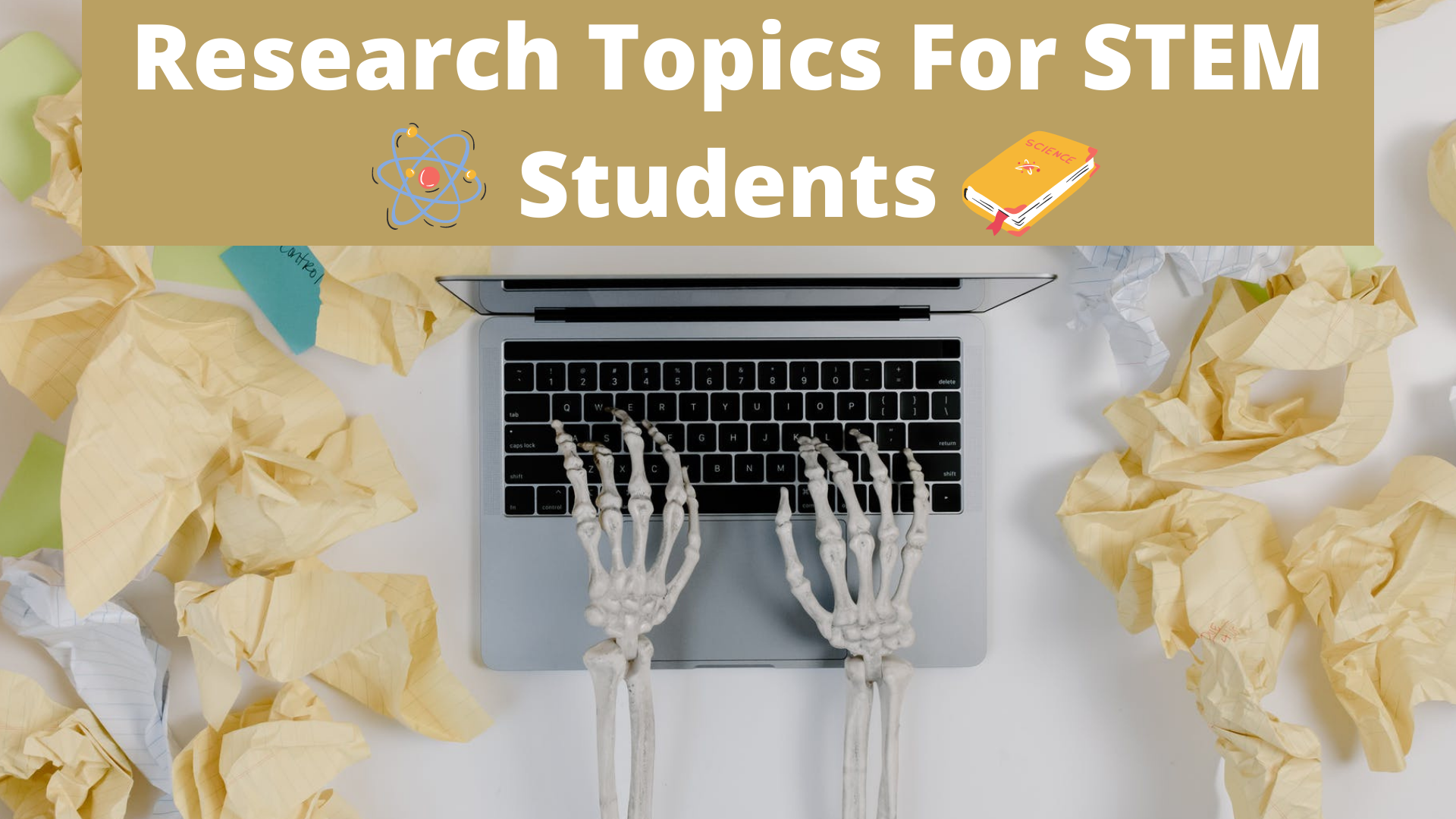
Primarily, STEM is an acronym for Science, Technology, Engineering, and Mathematics. It’s a study program that weaves all four disciplines for cross-disciplinary knowledge to solve scientific problems. STEM touches across a broad array of subjects as STEM students are required to gain mastery of four disciplines.
As a project-based discipline, STEM has different stages of learning. The program operates like other disciplines, and as such, STEM students embrace knowledge depending on their level. Since it’s a discipline centered around innovation, students undertake projects regularly. As a STEM student, your project could either be to build or write on a subject. Your first plan of action is choosing a topic if it’s written. After selecting a topic, you’ll need to determine how long a thesis statement should be .
Given that topic is essential to writing any project, this article focuses on research topics for STEM students. So, if you’re writing a STEM research paper or write my research paper , below are some of the best research topics for STEM students.
List of Research Topics For STEM Students
Quantitative research topics for stem students, qualitative research topics for stem students, what are the best experimental research topics for stem students, non-experimental research topics for stem students, capstone research topics for stem students, correlational research topics for stem students, scientific research topics for stem students, simple research topics for stem students, top 10 research topics for stem students, experimental research topics for stem students about plants, research topics for grade 11 stem students, research topics for grade 12 stem students, quantitative research topics for stem high school students, survey research topics for stem students, interesting and informative research topics for senior high school stem students.
Several research topics can be formulated in this field. They cut across STEM science, engineering, technology, and math. Here is a list of good research topics for STEM students.
- The effectiveness of online learning over physical learning
- The rise of metabolic diseases and their relationship to increased consumption
- How immunotherapy can improve prognosis in Covid-19 progression
For your quantitative research in STEM, you’ll need to learn how to cite a thesis MLA for the topic you’re choosing. Below are some of the best quantitative research topics for STEM students.
- A study of the effect of digital technology on millennials
- A futuristic study of a world ruled by robotics
- A critical evaluation of the future demand in artificial intelligence
There are several practical research topics for STEM students. However, if you’re looking for qualitative research topics for STEM students, here are topics to explore.
- An exploration into how microbial factories result in the cause shortage in raw metals
- An experimental study on the possibility of older-aged men passing genetic abnormalities to children
- A critical evaluation of how genetics could be used to help humans live healthier and longer.
Experimental research in STEM is a scientific research methodology that uses two sets of variables. They are dependent and independent variables that are studied under experimental research. Experimental research topics in STEM look into areas of science that use data to derive results.
Below are easy experimental research topics for STEM students.
- A study of nuclear fusion and fission
- An evaluation of the major drawbacks of Biotechnology in the pharmaceutical industry
- A study of single-cell organisms and how they’re capable of becoming an intermediary host for diseases causing bacteria
Unlike experimental research, non-experimental research lacks the interference of an independent variable. Non-experimental research instead measures variables as they naturally occur. Below are some non-experimental quantitative research topics for STEM students.
- Impacts of alcohol addiction on the psychological life of humans
- The popularity of depression and schizophrenia amongst the pediatric population
- The impact of breastfeeding on the child’s health and development
STEM learning and knowledge grow in stages. The older students get, the more stringent requirements are for their STEM research topic. There are several capstone topics for research for STEM students .
Below are some simple quantitative research topics for stem students.
- How population impacts energy-saving strategies
- The application of an Excel table processor capabilities for cost calculation
- A study of the essence of science as a sphere of human activity
Correlations research is research where the researcher measures two continuous variables. This is done with little or no attempt to control extraneous variables but to assess the relationship. Here are some sample research topics for STEM students to look into bearing in mind how to cite a thesis APA style for your project.
- Can pancreatic gland transplantation cure diabetes?
- A study of improved living conditions and obesity
- An evaluation of the digital currency as a valid form of payment and its impact on banking and economy
There are several science research topics for STEM students. Below are some possible quantitative research topics for STEM students.
- A study of protease inhibitor and how it operates
- A study of how men’s exercise impacts DNA traits passed to children
- A study of the future of commercial space flight
If you’re looking for a simple research topic, below are easy research topics for STEM students.
- How can the problem of Space junk be solved?
- Can meteorites change our view of the universe?
- Can private space flight companies change the future of space exploration?
For your top 10 research topics for STEM students, here are interesting topics for STEM students to consider.
- A comparative study of social media addiction and adverse depression
- The human effect of the illegal use of formalin in milk and food preservation
- An evaluation of the human impact on the biosphere and its results
- A study of how fungus affects plant growth
- A comparative study of antiviral drugs and vaccine
- A study of the ways technology has improved medicine and life science
- The effectiveness of Vitamin D among older adults for disease prevention
- What is the possibility of life on other planets?
- Effects of Hubble Space Telescope on the universe
- A study of important trends in medicinal chemistry research
Below are possible research topics for STEM students about plants:
- How do magnetic fields impact plant growth?
- Do the different colors of light impact the rate of photosynthesis?
- How can fertilizer extend plant life during a drought?
Below are some examples of quantitative research topics for STEM students in grade 11.
- A study of how plants conduct electricity
- How does water salinity affect plant growth?
- A study of soil pH levels on plants
Here are some of the best qualitative research topics for STEM students in grade 12.
- An evaluation of artificial gravity and how it impacts seed germination
- An exploration of the steps taken to develop the Covid-19 vaccine
- Personalized medicine and the wave of the future
Here are topics to consider for your STEM-related research topics for high school students.
- A study of stem cell treatment
- How can molecular biological research of rare genetic disorders help understand cancer?
- How Covid-19 affects people with digestive problems
Below are some survey topics for qualitative research for stem students.
- How does Covid-19 impact immune-compromised people?
- Soil temperature and how it affects root growth
- Burned soil and how it affects seed germination
Here are some descriptive research topics for STEM students in senior high.
- The scientific information concept and its role in conducting scientific research
- The role of mathematical statistics in scientific research
- A study of the natural resources contained in oceans
Final Words About Research Topics For STEM Students
STEM topics cover areas in various scientific fields, mathematics, engineering, and technology. While it can be tasking, reducing the task starts with choosing a favorable topic. If you require external assistance in writing your STEM research, you can seek professional help from our experts.
Leave a Reply Cancel reply
- News & Insights
- All News & Insights
Student Engagement, Exploration and Development college interns celebrated for their STEM mentorship impacts
This past academic year, 42 SEEDS college interns mentored 450 Leslie and William McMorrow Neighborhood Academic Initiative middle school students.
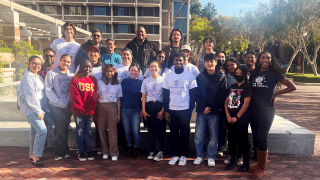
USC Rossier Center for Education, Identity and Social Justice completed the academic year celebrating their Student Engagement, Exploration and Development (SEEDS) college interns, some of whom are graduating from two-year colleges and transferring to four-year institutions, and some are graduating from their four-year colleges.
The SEEDS program is part of an innovative research project that examines the impact of Science Technology Engineering and Technology (STEM) mentorship and STEM video games on minoritized college and middle school students. This past semester, the SEEDS program had a record-setting 42 college students who served as mentors to 450 Leslie and William McMorrow Neighborhood Academic Initiative (NAI) middle school scholars. USC Rossier Professors Darnell Cole and Shafiqa Ahmadi are co-PIs on the research project.
“Congratulations to our STEM interns on their graduation,” said Professor Darnell Cole, co-director of the Center for Education, Identity and Social Justice. “Your hard work and dedication have paid off, and we are so proud of all that you have accomplished. We can’t wait to see the amazing things you will continue to achieve in the future.”
In an interview with USC Rossier Magazine , Cole explained that middle school students get to “see people who look like them, who might have experienced things that they’ve experienced, engage in science concepts.” Mentored middle schoolers have the opportunity to explore STEM in a learning environment free of stereotypes, Cole said.
“While I know that middle school students learn a lot from us, college mentors, I also learn a lot from them. Moreover, my peer mentors have strengthened my sense of community in the STEM field because this field could be isolating for underrepresented, marginalized groups,” said Srilekha Davuluri, a SEEDS college intern.
“The skills and knowledge the SEEDS interns gained during their time as STEM mentors will serve as a strong foundation for their future success as well as the future success of their mentees,” said Professor Shafiqa Ahmadi, also co-director of the Center for Education, Identity and Social Justice. “Each and every one of them will make a significant impact in the STEM field.”
Supported by the John Randolph and Dora Haynes Foundation, SEEDS is a partnership with the City of Los Angeles, four community organizations — Archdiocesan Youth Employment Services , Boyle Heights Technology YouthSource Center , Brotherhood Crusade Youth Source Center and Para Los Ninos — and NAI at USC.
SEEDS interns provided mentees with the guidance, support and encouragement needed to develop interest in STEM while overcoming barriers and reaching their full potential. Postdoctoral researcher Ting-Han Chang, SEEDS supervisor/manager, added, “By providing culturally responsive mentorship and connecting middle school students with college mentors who can share their knowledge and experiences, we can help advance educational equity and inspire the next generation of diverse STEM leaders and professionals."

Darnell Cole
- Professor of Education
- Co-director of the Center for Education, Identity and Social Justice

Shafiqa Ahmadi
- Professor of Clinical Education
Center for Education, Identity and Social Justice
Article Type
Article topics.
- Diversity, equity and inclusion
Related News & Insights
May 16, 2024
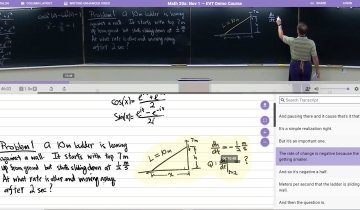
EdTech Accelerator alums lead the way in integrating AI into educational tools
Program participants are incorporating artificial intelligence into tools for a range of educational purposes, from tackling inequities in access to improving the classroom experience for students with learning disabilities.
Featured Faculty
- Mark DeGennaro
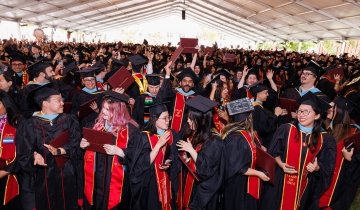
USC Rossier’s Class of 2024 encouraged to keep fighting on
Family, faculty and staff gather to celebrate USC Rossier’s newest graduates.
- Pedro Noguera
- Shaun Harper
May 6, 2024

‘You don’t have to fit in the box that society puts you in’
USC Rossier alum Mariah Lora MAT '24 shares her academic journey from the basketball court and pageant stage to the classroom and commencement podium.

Cultural Relativity and Acceptance of Embryonic Stem Cell Research
Article sidebar.

Main Article Content
There is a debate about the ethical implications of using human embryos in stem cell research, which can be influenced by cultural, moral, and social values. This paper argues for an adaptable framework to accommodate diverse cultural and religious perspectives. By using an adaptive ethics model, research protections can reflect various populations and foster growth in stem cell research possibilities.
INTRODUCTION
Stem cell research combines biology, medicine, and technology, promising to alter health care and the understanding of human development. Yet, ethical contention exists because of individuals’ perceptions of using human embryos based on their various cultural, moral, and social values. While these disagreements concerning policy, use, and general acceptance have prompted the development of an international ethics policy, such a uniform approach can overlook the nuanced ethical landscapes between cultures. With diverse viewpoints in public health, a single global policy, especially one reflecting Western ethics or the ethics prevalent in high-income countries, is impractical. This paper argues for a culturally sensitive, adaptable framework for the use of embryonic stem cells. Stem cell policy should accommodate varying ethical viewpoints and promote an effective global dialogue. With an extension of an ethics model that can adapt to various cultures, we recommend localized guidelines that reflect the moral views of the people those guidelines serve.
Stem cells, characterized by their unique ability to differentiate into various cell types, enable the repair or replacement of damaged tissues. Two primary types of stem cells are somatic stem cells (adult stem cells) and embryonic stem cells. Adult stem cells exist in developed tissues and maintain the body’s repair processes. [1] Embryonic stem cells (ESC) are remarkably pluripotent or versatile, making them valuable in research. [2] However, the use of ESCs has sparked ethics debates. Considering the potential of embryonic stem cells, research guidelines are essential. The International Society for Stem Cell Research (ISSCR) provides international stem cell research guidelines. They call for “public conversations touching on the scientific significance as well as the societal and ethical issues raised by ESC research.” [3] The ISSCR also publishes updates about culturing human embryos 14 days post fertilization, suggesting local policies and regulations should continue to evolve as ESC research develops. [4] Like the ISSCR, which calls for local law and policy to adapt to developing stem cell research given cultural acceptance, this paper highlights the importance of local social factors such as religion and culture.
I. Global Cultural Perspective of Embryonic Stem Cells
Views on ESCs vary throughout the world. Some countries readily embrace stem cell research and therapies, while others have stricter regulations due to ethical concerns surrounding embryonic stem cells and when an embryo becomes entitled to moral consideration. The philosophical issue of when the “someone” begins to be a human after fertilization, in the morally relevant sense, [5] impacts when an embryo becomes not just worthy of protection but morally entitled to it. The process of creating embryonic stem cell lines involves the destruction of the embryos for research. [6] Consequently, global engagement in ESC research depends on social-cultural acceptability.
a. US and Rights-Based Cultures
In the United States, attitudes toward stem cell therapies are diverse. The ethics and social approaches, which value individualism, [7] trigger debates regarding the destruction of human embryos, creating a complex regulatory environment. For example, the 1996 Dickey-Wicker Amendment prohibited federal funding for the creation of embryos for research and the destruction of embryos for “more than allowed for research on fetuses in utero.” [8] Following suit, in 2001, the Bush Administration heavily restricted stem cell lines for research. However, the Stem Cell Research Enhancement Act of 2005 was proposed to help develop ESC research but was ultimately vetoed. [9] Under the Obama administration, in 2009, an executive order lifted restrictions allowing for more development in this field. [10] The flux of research capacity and funding parallels the different cultural perceptions of human dignity of the embryo and how it is socially presented within the country’s research culture. [11]
b. Ubuntu and Collective Cultures
African bioethics differs from Western individualism because of the different traditions and values. African traditions, as described by individuals from South Africa and supported by some studies in other African countries, including Ghana and Kenya, follow the African moral philosophies of Ubuntu or Botho and Ukama , which “advocates for a form of wholeness that comes through one’s relationship and connectedness with other people in the society,” [12] making autonomy a socially collective concept. In this context, for the community to act autonomously, individuals would come together to decide what is best for the collective. Thus, stem cell research would require examining the value of the research to society as a whole and the use of the embryos as a collective societal resource. If society views the source as part of the collective whole, and opposes using stem cells, compromising the cultural values to pursue research may cause social detachment and stunt research growth. [13] Based on local culture and moral philosophy, the permissibility of stem cell research depends on how embryo, stem cell, and cell line therapies relate to the community as a whole . Ubuntu is the expression of humanness, with the person’s identity drawn from the “’I am because we are’” value. [14] The decision in a collectivistic culture becomes one born of cultural context, and individual decisions give deference to others in the society.
Consent differs in cultures where thought and moral philosophy are based on a collective paradigm. So, applying Western bioethical concepts is unrealistic. For one, Africa is a diverse continent with many countries with different belief systems, access to health care, and reliance on traditional or Western medicines. Where traditional medicine is the primary treatment, the “’restrictive focus on biomedically-related bioethics’” [is] problematic in African contexts because it neglects bioethical issues raised by traditional systems.” [15] No single approach applies in all areas or contexts. Rather than evaluating the permissibility of ESC research according to Western concepts such as the four principles approach, different ethics approaches should prevail.
Another consideration is the socio-economic standing of countries. In parts of South Africa, researchers have not focused heavily on contributing to the stem cell discourse, either because it is not considered health care or a health science priority or because resources are unavailable. [16] Each country’s priorities differ given different social, political, and economic factors. In South Africa, for instance, areas such as maternal mortality, non-communicable diseases, telemedicine, and the strength of health systems need improvement and require more focus. [17] Stem cell research could benefit the population, but it also could divert resources from basic medical care. Researchers in South Africa adhere to the National Health Act and Medicines Control Act in South Africa and international guidelines; however, the Act is not strictly enforced, and there is no clear legislation for research conduct or ethical guidelines. [18]
Some parts of Africa condemn stem cell research. For example, 98.2 percent of the Tunisian population is Muslim. [19] Tunisia does not permit stem cell research because of moral conflict with a Fatwa. Religion heavily saturates the regulation and direction of research. [20] Stem cell use became permissible for reproductive purposes only recently, with tight restrictions preventing cells from being used in any research other than procedures concerning ART/IVF. Their use is conditioned on consent, and available only to married couples. [21] The community's receptiveness to stem cell research depends on including communitarian African ethics.
c. Asia
Some Asian countries also have a collective model of ethics and decision making. [22] In China, the ethics model promotes a sincere respect for life or human dignity, [23] based on protective medicine. This model, influenced by Traditional Chinese Medicine (TCM), [24] recognizes Qi as the vital energy delivered via the meridians of the body; it connects illness to body systems, the body’s entire constitution, and the universe for a holistic bond of nature, health, and quality of life. [25] Following a protective ethics model, and traditional customs of wholeness, investment in stem cell research is heavily desired for its applications in regenerative therapies, disease modeling, and protective medicines. In a survey of medical students and healthcare practitioners, 30.8 percent considered stem cell research morally unacceptable while 63.5 percent accepted medical research using human embryonic stem cells. Of these individuals, 89.9 percent supported increased funding for stem cell research. [26] The scientific community might not reflect the overall population. From 1997 to 2019, China spent a total of $576 million (USD) on stem cell research at 8,050 stem cell programs, increased published presence from 0.6 percent to 14.01 percent of total global stem cell publications as of 2014, and made significant strides in cell-based therapies for various medical conditions. [27] However, while China has made substantial investments in stem cell research and achieved notable progress in clinical applications, concerns linger regarding ethical oversight and transparency. [28] For example, the China Biosecurity Law, promoted by the National Health Commission and China Hospital Association, attempted to mitigate risks by introducing an institutional review board (IRB) in the regulatory bodies. 5800 IRBs registered with the Chinese Clinical Trial Registry since 2021. [29] However, issues still need to be addressed in implementing effective IRB review and approval procedures.
The substantial government funding and focus on scientific advancement have sometimes overshadowed considerations of regional cultures, ethnic minorities, and individual perspectives, particularly evident during the one-child policy era. As government policy adapts to promote public stability, such as the change from the one-child to the two-child policy, [30] research ethics should also adapt to ensure respect for the values of its represented peoples.
Japan is also relatively supportive of stem cell research and therapies. Japan has a more transparent regulatory framework, allowing for faster approval of regenerative medicine products, which has led to several advanced clinical trials and therapies. [31] South Korea is also actively engaged in stem cell research and has a history of breakthroughs in cloning and embryonic stem cells. [32] However, the field is controversial, and there are issues of scientific integrity. For example, the Korean FDA fast-tracked products for approval, [33] and in another instance, the oocyte source was unclear and possibly violated ethical standards. [34] Trust is important in research, as it builds collaborative foundations between colleagues, trial participant comfort, open-mindedness for complicated and sensitive discussions, and supports regulatory procedures for stakeholders. There is a need to respect the culture’s interest, engagement, and for research and clinical trials to be transparent and have ethical oversight to promote global research discourse and trust.
d. Middle East
Countries in the Middle East have varying degrees of acceptance of or restrictions to policies related to using embryonic stem cells due to cultural and religious influences. Saudi Arabia has made significant contributions to stem cell research, and conducts research based on international guidelines for ethical conduct and under strict adherence to guidelines in accordance with Islamic principles. Specifically, the Saudi government and people require ESC research to adhere to Sharia law. In addition to umbilical and placental stem cells, [35] Saudi Arabia permits the use of embryonic stem cells as long as they come from miscarriages, therapeutic abortions permissible by Sharia law, or are left over from in vitro fertilization and donated to research. [36] Laws and ethical guidelines for stem cell research allow the development of research institutions such as the King Abdullah International Medical Research Center, which has a cord blood bank and a stem cell registry with nearly 10,000 donors. [37] Such volume and acceptance are due to the ethical ‘permissibility’ of the donor sources, which do not conflict with religious pillars. However, some researchers err on the side of caution, choosing not to use embryos or fetal tissue as they feel it is unethical to do so. [38]
Jordan has a positive research ethics culture. [39] However, there is a significant issue of lack of trust in researchers, with 45.23 percent (38.66 percent agreeing and 6.57 percent strongly agreeing) of Jordanians holding a low level of trust in researchers, compared to 81.34 percent of Jordanians agreeing that they feel safe to participate in a research trial. [40] Safety testifies to the feeling of confidence that adequate measures are in place to protect participants from harm, whereas trust in researchers could represent the confidence in researchers to act in the participants’ best interests, adhere to ethical guidelines, provide accurate information, and respect participants’ rights and dignity. One method to improve trust would be to address communication issues relevant to ESC. Legislation surrounding stem cell research has adopted specific language, especially concerning clarification “between ‘stem cells’ and ‘embryonic stem cells’” in translation. [41] Furthermore, legislation “mandates the creation of a national committee… laying out specific regulations for stem-cell banking in accordance with international standards.” [42] This broad regulation opens the door for future global engagement and maintains transparency. However, these regulations may also constrain the influence of research direction, pace, and accessibility of research outcomes.
e. Europe
In the European Union (EU), ethics is also principle-based, but the principles of autonomy, dignity, integrity, and vulnerability are interconnected. [43] As such, the opportunity for cohesion and concessions between individuals’ thoughts and ideals allows for a more adaptable ethics model due to the flexible principles that relate to the human experience The EU has put forth a framework in its Convention for the Protection of Human Rights and Dignity of the Human Being allowing member states to take different approaches. Each European state applies these principles to its specific conventions, leading to or reflecting different acceptance levels of stem cell research. [44]
For example, in Germany, Lebenzusammenhang , or the coherence of life, references integrity in the unity of human culture. Namely, the personal sphere “should not be subject to external intervention.” [45] Stem cell interventions could affect this concept of bodily completeness, leading to heavy restrictions. Under the Grundgesetz, human dignity and the right to life with physical integrity are paramount. [46] The Embryo Protection Act of 1991 made producing cell lines illegal. Cell lines can be imported if approved by the Central Ethics Commission for Stem Cell Research only if they were derived before May 2007. [47] Stem cell research respects the integrity of life for the embryo with heavy specifications and intense oversight. This is vastly different in Finland, where the regulatory bodies find research more permissible in IVF excess, but only up to 14 days after fertilization. [48] Spain’s approach differs still, with a comprehensive regulatory framework. [49] Thus, research regulation can be culture-specific due to variations in applied principles. Diverse cultures call for various approaches to ethical permissibility. [50] Only an adaptive-deliberative model can address the cultural constructions of self and achieve positive, culturally sensitive stem cell research practices. [51]
II. Religious Perspectives on ESC
Embryonic stem cell sources are the main consideration within religious contexts. While individuals may not regard their own religious texts as authoritative or factual, religion can shape their foundations or perspectives.
The Qur'an states:
“And indeed We created man from a quintessence of clay. Then We placed within him a small quantity of nutfa (sperm to fertilize) in a safe place. Then We have fashioned the nutfa into an ‘alaqa (clinging clot or cell cluster), then We developed the ‘alaqa into mudgha (a lump of flesh), and We made mudgha into bones, and clothed the bones with flesh, then We brought it into being as a new creation. So Blessed is Allah, the Best of Creators.” [52]
Many scholars of Islam estimate the time of soul installment, marked by the angel breathing in the soul to bring the individual into creation, as 120 days from conception. [53] Personhood begins at this point, and the value of life would prohibit research or experimentation that could harm the individual. If the fetus is more than 120 days old, the time ensoulment is interpreted to occur according to Islamic law, abortion is no longer permissible. [54] There are a few opposing opinions about early embryos in Islamic traditions. According to some Islamic theologians, there is no ensoulment of the early embryo, which is the source of stem cells for ESC research. [55]
In Buddhism, the stance on stem cell research is not settled. The main tenets, the prohibition against harming or destroying others (ahimsa) and the pursuit of knowledge (prajña) and compassion (karuna), leave Buddhist scholars and communities divided. [56] Some scholars argue stem cell research is in accordance with the Buddhist tenet of seeking knowledge and ending human suffering. Others feel it violates the principle of not harming others. Finding the balance between these two points relies on the karmic burden of Buddhist morality. In trying to prevent ahimsa towards the embryo, Buddhist scholars suggest that to comply with Buddhist tenets, research cannot be done as the embryo has personhood at the moment of conception and would reincarnate immediately, harming the individual's ability to build their karmic burden. [57] On the other hand, the Bodhisattvas, those considered to be on the path to enlightenment or Nirvana, have given organs and flesh to others to help alleviate grieving and to benefit all. [58] Acceptance varies on applied beliefs and interpretations.
Catholicism does not support embryonic stem cell research, as it entails creation or destruction of human embryos. This destruction conflicts with the belief in the sanctity of life. For example, in the Old Testament, Genesis describes humanity as being created in God’s image and multiplying on the Earth, referencing the sacred rights to human conception and the purpose of development and life. In the Ten Commandments, the tenet that one should not kill has numerous interpretations where killing could mean murder or shedding of the sanctity of life, demonstrating the high value of human personhood. In other books, the theological conception of when life begins is interpreted as in utero, [59] highlighting the inviolability of life and its formation in vivo to make a religious point for accepting such research as relatively limited, if at all. [60] The Vatican has released ethical directives to help apply a theological basis to modern-day conflicts. The Magisterium of the Church states that “unless there is a moral certainty of not causing harm,” experimentation on fetuses, fertilized cells, stem cells, or embryos constitutes a crime. [61] Such procedures would not respect the human person who exists at these stages, according to Catholicism. Damages to the embryo are considered gravely immoral and illicit. [62] Although the Catholic Church officially opposes abortion, surveys demonstrate that many Catholic people hold pro-choice views, whether due to the context of conception, stage of pregnancy, threat to the mother’s life, or for other reasons, demonstrating that practicing members can also accept some but not all tenets. [63]
Some major Jewish denominations, such as the Reform, Conservative, and Reconstructionist movements, are open to supporting ESC use or research as long as it is for saving a life. [64] Within Judaism, the Talmud, or study, gives personhood to the child at birth and emphasizes that life does not begin at conception: [65]
“If she is found pregnant, until the fortieth day it is mere fluid,” [66]
Whereas most religions prioritize the status of human embryos, the Halakah (Jewish religious law) states that to save one life, most other religious laws can be ignored because it is in pursuit of preservation. [67] Stem cell research is accepted due to application of these religious laws.
We recognize that all religions contain subsets and sects. The variety of environmental and cultural differences within religious groups requires further analysis to respect the flexibility of religious thoughts and practices. We make no presumptions that all cultures require notions of autonomy or morality as under the common morality theory , which asserts a set of universal moral norms that all individuals share provides moral reasoning and guides ethical decisions. [68] We only wish to show that the interaction with morality varies between cultures and countries.
III. A Flexible Ethical Approach
The plurality of different moral approaches described above demonstrates that there can be no universally acceptable uniform law for ESC on a global scale. Instead of developing one standard, flexible ethical applications must be continued. We recommend local guidelines that incorporate important cultural and ethical priorities.
While the Declaration of Helsinki is more relevant to people in clinical trials receiving ESC products, in keeping with the tradition of protections for research subjects, consent of the donor is an ethical requirement for ESC donation in many jurisdictions including the US, Canada, and Europe. [69] The Declaration of Helsinki provides a reference point for regulatory standards and could potentially be used as a universal baseline for obtaining consent prior to gamete or embryo donation.
For instance, in Columbia University’s egg donor program for stem cell research, donors followed standard screening protocols and “underwent counseling sessions that included information as to the purpose of oocyte donation for research, what the oocytes would be used for, the risks and benefits of donation, and process of oocyte stimulation” to ensure transparency for consent. [70] The program helped advance stem cell research and provided clear and safe research methods with paid participants. Though paid participation or covering costs of incidental expenses may not be socially acceptable in every culture or context, [71] and creating embryos for ESC research is illegal in many jurisdictions, Columbia’s program was effective because of the clear and honest communications with donors, IRBs, and related stakeholders. This example demonstrates that cultural acceptance of scientific research and of the idea that an egg or embryo does not have personhood is likely behind societal acceptance of donating eggs for ESC research. As noted, many countries do not permit the creation of embryos for research.
Proper communication and education regarding the process and purpose of stem cell research may bolster comprehension and garner more acceptance. “Given the sensitive subject material, a complete consent process can support voluntary participation through trust, understanding, and ethical norms from the cultures and morals participants value. This can be hard for researchers entering countries of different socioeconomic stability, with different languages and different societal values. [72]
An adequate moral foundation in medical ethics is derived from the cultural and religious basis that informs knowledge and actions. [73] Understanding local cultural and religious values and their impact on research could help researchers develop humility and promote inclusion.
IV. Concerns
Some may argue that if researchers all adhere to one ethics standard, protection will be satisfied across all borders, and the global public will trust researchers. However, defining what needs to be protected and how to define such research standards is very specific to the people to which standards are applied. We suggest that applying one uniform guide cannot accurately protect each individual because we all possess our own perceptions and interpretations of social values. [74] Therefore, the issue of not adjusting to the moral pluralism between peoples in applying one standard of ethics can be resolved by building out ethics models that can be adapted to different cultures and religions.
Other concerns include medical tourism, which may promote health inequities. [75] Some countries may develop and approve products derived from ESC research before others, compromising research ethics or drug approval processes. There are also concerns about the sale of unauthorized stem cell treatments, for example, those without FDA approval in the United States. Countries with robust research infrastructures may be tempted to attract medical tourists, and some customers will have false hopes based on aggressive publicity of unproven treatments. [76]
For example, in China, stem cell clinics can market to foreign clients who are not protected under the regulatory regimes. Companies employ a marketing strategy of “ethically friendly” therapies. Specifically, in the case of Beike, China’s leading stem cell tourism company and sprouting network, ethical oversight of administrators or health bureaus at one site has “the unintended consequence of shifting questionable activities to another node in Beike's diffuse network.” [77] In contrast, Jordan is aware of stem cell research’s potential abuse and its own status as a “health-care hub.” Jordan’s expanded regulations include preserving the interests of individuals in clinical trials and banning private companies from ESC research to preserve transparency and the integrity of research practices. [78]
The social priorities of the community are also a concern. The ISSCR explicitly states that guidelines “should be periodically revised to accommodate scientific advances, new challenges, and evolving social priorities.” [79] The adaptable ethics model extends this consideration further by addressing whether research is warranted given the varying degrees of socioeconomic conditions, political stability, and healthcare accessibilities and limitations. An ethical approach would require discussion about resource allocation and appropriate distribution of funds. [80]
While some religions emphasize the sanctity of life from conception, which may lead to public opposition to ESC research, others encourage ESC research due to its potential for healing and alleviating human pain. Many countries have special regulations that balance local views on embryonic personhood, the benefits of research as individual or societal goods, and the protection of human research subjects. To foster understanding and constructive dialogue, global policy frameworks should prioritize the protection of universal human rights, transparency, and informed consent. In addition to these foundational global policies, we recommend tailoring local guidelines to reflect the diverse cultural and religious perspectives of the populations they govern. Ethics models should be adapted to local populations to effectively establish research protections, growth, and possibilities of stem cell research.
For example, in countries with strong beliefs in the moral sanctity of embryos or heavy religious restrictions, an adaptive model can allow for discussion instead of immediate rejection. In countries with limited individual rights and voice in science policy, an adaptive model ensures cultural, moral, and religious views are taken into consideration, thereby building social inclusion. While this ethical consideration by the government may not give a complete voice to every individual, it will help balance policies and maintain the diverse perspectives of those it affects. Embracing an adaptive ethics model of ESC research promotes open-minded dialogue and respect for the importance of human belief and tradition. By actively engaging with cultural and religious values, researchers can better handle disagreements and promote ethical research practices that benefit each society.
This brief exploration of the religious and cultural differences that impact ESC research reveals the nuances of relative ethics and highlights a need for local policymakers to apply a more intense adaptive model.
[1] Poliwoda, S., Noor, N., Downs, E., Schaaf, A., Cantwell, A., Ganti, L., Kaye, A. D., Mosel, L. I., Carroll, C. B., Viswanath, O., & Urits, I. (2022). Stem cells: a comprehensive review of origins and emerging clinical roles in medical practice. Orthopedic reviews , 14 (3), 37498. https://doi.org/10.52965/001c.37498
[2] Poliwoda, S., Noor, N., Downs, E., Schaaf, A., Cantwell, A., Ganti, L., Kaye, A. D., Mosel, L. I., Carroll, C. B., Viswanath, O., & Urits, I. (2022). Stem cells: a comprehensive review of origins and emerging clinical roles in medical practice. Orthopedic reviews , 14 (3), 37498. https://doi.org/10.52965/001c.37498
[3] International Society for Stem Cell Research. (2023). Laboratory-based human embryonic stem cell research, embryo research, and related research activities . International Society for Stem Cell Research. https://www.isscr.org/guidelines/blog-post-title-one-ed2td-6fcdk ; Kimmelman, J., Hyun, I., Benvenisty, N. et al. Policy: Global standards for stem-cell research. Nature 533 , 311–313 (2016). https://doi.org/10.1038/533311a
[4] International Society for Stem Cell Research. (2023). Laboratory-based human embryonic stem cell research, embryo research, and related research activities . International Society for Stem Cell Research. https://www.isscr.org/guidelines/blog-post-title-one-ed2td-6fcdk
[5] Concerning the moral philosophies of stem cell research, our paper does not posit a personal moral stance nor delve into the “when” of human life begins. To read further about the philosophical debate, consider the following sources:
Sandel M. J. (2004). Embryo ethics--the moral logic of stem-cell research. The New England journal of medicine , 351 (3), 207–209. https://doi.org/10.1056/NEJMp048145 ; George, R. P., & Lee, P. (2020, September 26). Acorns and Embryos . The New Atlantis. https://www.thenewatlantis.com/publications/acorns-and-embryos ; Sagan, A., & Singer, P. (2007). The moral status of stem cells. Metaphilosophy , 38 (2/3), 264–284. http://www.jstor.org/stable/24439776 ; McHugh P. R. (2004). Zygote and "clonote"--the ethical use of embryonic stem cells. The New England journal of medicine , 351 (3), 209–211. https://doi.org/10.1056/NEJMp048147 ; Kurjak, A., & Tripalo, A. (2004). The facts and doubts about beginning of the human life and personality. Bosnian journal of basic medical sciences , 4 (1), 5–14. https://doi.org/10.17305/bjbms.2004.3453
[6] Vazin, T., & Freed, W. J. (2010). Human embryonic stem cells: derivation, culture, and differentiation: a review. Restorative neurology and neuroscience , 28 (4), 589–603. https://doi.org/10.3233/RNN-2010-0543
[7] Socially, at its core, the Western approach to ethics is widely principle-based, autonomy being one of the key factors to ensure a fundamental respect for persons within research. For information regarding autonomy in research, see: Department of Health, Education, and Welfare, & National Commission for the Protection of Human Subjects of Biomedical and Behavioral Research (1978). The Belmont Report. Ethical principles and guidelines for the protection of human subjects of research.; For a more in-depth review of autonomy within the US, see: Beauchamp, T. L., & Childress, J. F. (1994). Principles of Biomedical Ethics . Oxford University Press.
[8] Sherley v. Sebelius , 644 F.3d 388 (D.C. Cir. 2011), citing 45 C.F.R. 46.204(b) and [42 U.S.C. § 289g(b)]. https://www.cadc.uscourts.gov/internet/opinions.nsf/6c690438a9b43dd685257a64004ebf99/$file/11-5241-1391178.pdf
[9] Stem Cell Research Enhancement Act of 2005, H. R. 810, 109 th Cong. (2001). https://www.govtrack.us/congress/bills/109/hr810/text ; Bush, G. W. (2006, July 19). Message to the House of Representatives . National Archives and Records Administration. https://georgewbush-whitehouse.archives.gov/news/releases/2006/07/20060719-5.html
[10] National Archives and Records Administration. (2009, March 9). Executive order 13505 -- removing barriers to responsible scientific research involving human stem cells . National Archives and Records Administration. https://obamawhitehouse.archives.gov/the-press-office/removing-barriers-responsible-scientific-research-involving-human-stem-cells
[11] Hurlbut, W. B. (2006). Science, Religion, and the Politics of Stem Cells. Social Research , 73 (3), 819–834. http://www.jstor.org/stable/40971854
[12] Akpa-Inyang, Francis & Chima, Sylvester. (2021). South African traditional values and beliefs regarding informed consent and limitations of the principle of respect for autonomy in African communities: a cross-cultural qualitative study. BMC Medical Ethics . 22. 10.1186/s12910-021-00678-4.
[13] Source for further reading: Tangwa G. B. (2007). Moral status of embryonic stem cells: perspective of an African villager. Bioethics , 21(8), 449–457. https://doi.org/10.1111/j.1467-8519.2007.00582.x , see also Mnisi, F. M. (2020). An African analysis based on ethics of Ubuntu - are human embryonic stem cell patents morally justifiable? African Insight , 49 (4).
[14] Jecker, N. S., & Atuire, C. (2021). Bioethics in Africa: A contextually enlightened analysis of three cases. Developing World Bioethics , 22 (2), 112–122. https://doi.org/10.1111/dewb.12324
[15] Jecker, N. S., & Atuire, C. (2021). Bioethics in Africa: A contextually enlightened analysis of three cases. Developing World Bioethics, 22(2), 112–122. https://doi.org/10.1111/dewb.12324
[16] Jackson, C.S., Pepper, M.S. Opportunities and barriers to establishing a cell therapy programme in South Africa. Stem Cell Res Ther 4 , 54 (2013). https://doi.org/10.1186/scrt204 ; Pew Research Center. (2014, May 1). Public health a major priority in African nations . Pew Research Center’s Global Attitudes Project. https://www.pewresearch.org/global/2014/05/01/public-health-a-major-priority-in-african-nations/
[17] Department of Health Republic of South Africa. (2021). Health Research Priorities (revised) for South Africa 2021-2024 . National Health Research Strategy. https://www.health.gov.za/wp-content/uploads/2022/05/National-Health-Research-Priorities-2021-2024.pdf
[18] Oosthuizen, H. (2013). Legal and Ethical Issues in Stem Cell Research in South Africa. In: Beran, R. (eds) Legal and Forensic Medicine. Springer, Berlin, Heidelberg. https://doi.org/10.1007/978-3-642-32338-6_80 , see also: Gaobotse G (2018) Stem Cell Research in Africa: Legislation and Challenges. J Regen Med 7:1. doi: 10.4172/2325-9620.1000142
[19] United States Bureau of Citizenship and Immigration Services. (1998). Tunisia: Information on the status of Christian conversions in Tunisia . UNHCR Web Archive. https://webarchive.archive.unhcr.org/20230522142618/https://www.refworld.org/docid/3df0be9a2.html
[20] Gaobotse, G. (2018) Stem Cell Research in Africa: Legislation and Challenges. J Regen Med 7:1. doi: 10.4172/2325-9620.1000142
[21] Kooli, C. Review of assisted reproduction techniques, laws, and regulations in Muslim countries. Middle East Fertil Soc J 24 , 8 (2020). https://doi.org/10.1186/s43043-019-0011-0 ; Gaobotse, G. (2018) Stem Cell Research in Africa: Legislation and Challenges. J Regen Med 7:1. doi: 10.4172/2325-9620.1000142
[22] Pang M. C. (1999). Protective truthfulness: the Chinese way of safeguarding patients in informed treatment decisions. Journal of medical ethics , 25(3), 247–253. https://doi.org/10.1136/jme.25.3.247
[23] Wang, L., Wang, F., & Zhang, W. (2021). Bioethics in China’s biosecurity law: Forms, effects, and unsettled issues. Journal of law and the biosciences , 8(1). https://doi.org/10.1093/jlb/lsab019 https://academic.oup.com/jlb/article/8/1/lsab019/6299199
[24] Wang, Y., Xue, Y., & Guo, H. D. (2022). Intervention effects of traditional Chinese medicine on stem cell therapy of myocardial infarction. Frontiers in pharmacology , 13 , 1013740. https://doi.org/10.3389/fphar.2022.1013740
[25] Li, X.-T., & Zhao, J. (2012). Chapter 4: An Approach to the Nature of Qi in TCM- Qi and Bioenergy. In Recent Advances in Theories and Practice of Chinese Medicine (p. 79). InTech.
[26] Luo, D., Xu, Z., Wang, Z., & Ran, W. (2021). China's Stem Cell Research and Knowledge Levels of Medical Practitioners and Students. Stem cells international , 2021 , 6667743. https://doi.org/10.1155/2021/6667743
[27] Luo, D., Xu, Z., Wang, Z., & Ran, W. (2021). China's Stem Cell Research and Knowledge Levels of Medical Practitioners and Students. Stem cells international , 2021 , 6667743. https://doi.org/10.1155/2021/6667743
[28] Zhang, J. Y. (2017). Lost in translation? accountability and governance of Clinical Stem Cell Research in China. Regenerative Medicine , 12 (6), 647–656. https://doi.org/10.2217/rme-2017-0035
[29] Wang, L., Wang, F., & Zhang, W. (2021). Bioethics in China’s biosecurity law: Forms, effects, and unsettled issues. Journal of law and the biosciences , 8(1). https://doi.org/10.1093/jlb/lsab019 https://academic.oup.com/jlb/article/8/1/lsab019/6299199
[30] Chen, H., Wei, T., Wang, H. et al. Association of China’s two-child policy with changes in number of births and birth defects rate, 2008–2017. BMC Public Health 22 , 434 (2022). https://doi.org/10.1186/s12889-022-12839-0
[31] Azuma, K. Regulatory Landscape of Regenerative Medicine in Japan. Curr Stem Cell Rep 1 , 118–128 (2015). https://doi.org/10.1007/s40778-015-0012-6
[32] Harris, R. (2005, May 19). Researchers Report Advance in Stem Cell Production . NPR. https://www.npr.org/2005/05/19/4658967/researchers-report-advance-in-stem-cell-production
[33] Park, S. (2012). South Korea steps up stem-cell work. Nature . https://doi.org/10.1038/nature.2012.10565
[34] Resnik, D. B., Shamoo, A. E., & Krimsky, S. (2006). Fraudulent human embryonic stem cell research in South Korea: lessons learned. Accountability in research , 13 (1), 101–109. https://doi.org/10.1080/08989620600634193 .
[35] Alahmad, G., Aljohani, S., & Najjar, M. F. (2020). Ethical challenges regarding the use of stem cells: interviews with researchers from Saudi Arabia. BMC medical ethics, 21(1), 35. https://doi.org/10.1186/s12910-020-00482-6
[36] Association for the Advancement of Blood and Biotherapies. https://www.aabb.org/regulatory-and-advocacy/regulatory-affairs/regulatory-for-cellular-therapies/international-competent-authorities/saudi-arabia
[37] Alahmad, G., Aljohani, S., & Najjar, M. F. (2020). Ethical challenges regarding the use of stem cells: Interviews with researchers from Saudi Arabia. BMC medical ethics , 21 (1), 35. https://doi.org/10.1186/s12910-020-00482-6
[38] Alahmad, G., Aljohani, S., & Najjar, M. F. (2020). Ethical challenges regarding the use of stem cells: Interviews with researchers from Saudi Arabia. BMC medical ethics , 21(1), 35. https://doi.org/10.1186/s12910-020-00482-6
Culturally, autonomy practices follow a relational autonomy approach based on a paternalistic deontological health care model. The adherence to strict international research policies and religious pillars within the regulatory environment is a great foundation for research ethics. However, there is a need to develop locally targeted ethics approaches for research (as called for in Alahmad, G., Aljohani, S., & Najjar, M. F. (2020). Ethical challenges regarding the use of stem cells: interviews with researchers from Saudi Arabia. BMC medical ethics, 21(1), 35. https://doi.org/10.1186/s12910-020-00482-6), this decision-making approach may help advise a research decision model. For more on the clinical cultural autonomy approaches, see: Alabdullah, Y. Y., Alzaid, E., Alsaad, S., Alamri, T., Alolayan, S. W., Bah, S., & Aljoudi, A. S. (2022). Autonomy and paternalism in Shared decision‐making in a Saudi Arabian tertiary hospital: A cross‐sectional study. Developing World Bioethics , 23 (3), 260–268. https://doi.org/10.1111/dewb.12355 ; Bukhari, A. A. (2017). Universal Principles of Bioethics and Patient Rights in Saudi Arabia (Doctoral dissertation, Duquesne University). https://dsc.duq.edu/etd/124; Ladha, S., Nakshawani, S. A., Alzaidy, A., & Tarab, B. (2023, October 26). Islam and Bioethics: What We All Need to Know . Columbia University School of Professional Studies. https://sps.columbia.edu/events/islam-and-bioethics-what-we-all-need-know
[39] Ababneh, M. A., Al-Azzam, S. I., Alzoubi, K., Rababa’h, A., & Al Demour, S. (2021). Understanding and attitudes of the Jordanian public about clinical research ethics. Research Ethics , 17 (2), 228-241. https://doi.org/10.1177/1747016120966779
[40] Ababneh, M. A., Al-Azzam, S. I., Alzoubi, K., Rababa’h, A., & Al Demour, S. (2021). Understanding and attitudes of the Jordanian public about clinical research ethics. Research Ethics , 17 (2), 228-241. https://doi.org/10.1177/1747016120966779
[41] Dajani, R. (2014). Jordan’s stem-cell law can guide the Middle East. Nature 510, 189. https://doi.org/10.1038/510189a
[42] Dajani, R. (2014). Jordan’s stem-cell law can guide the Middle East. Nature 510, 189. https://doi.org/10.1038/510189a
[43] The EU’s definition of autonomy relates to the capacity for creating ideas, moral insight, decisions, and actions without constraint, personal responsibility, and informed consent. However, the EU views autonomy as not completely able to protect individuals and depends on other principles, such as dignity, which “expresses the intrinsic worth and fundamental equality of all human beings.” Rendtorff, J.D., Kemp, P. (2019). Four Ethical Principles in European Bioethics and Biolaw: Autonomy, Dignity, Integrity and Vulnerability. In: Valdés, E., Lecaros, J. (eds) Biolaw and Policy in the Twenty-First Century. International Library of Ethics, Law, and the New Medicine, vol 78. Springer, Cham. https://doi.org/10.1007/978-3-030-05903-3_3
[44] Council of Europe. Convention for the protection of Human Rights and Dignity of the Human Being with regard to the Application of Biology and Medicine: Convention on Human Rights and Biomedicine (ETS No. 164) https://www.coe.int/en/web/conventions/full-list?module=treaty-detail&treatynum=164 (forbidding the creation of embryos for research purposes only, and suggests embryos in vitro have protections.); Also see Drabiak-Syed B. K. (2013). New President, New Human Embryonic Stem Cell Research Policy: Comparative International Perspectives and Embryonic Stem Cell Research Laws in France. Biotechnology Law Report , 32 (6), 349–356. https://doi.org/10.1089/blr.2013.9865
[45] Rendtorff, J.D., Kemp, P. (2019). Four Ethical Principles in European Bioethics and Biolaw: Autonomy, Dignity, Integrity and Vulnerability. In: Valdés, E., Lecaros, J. (eds) Biolaw and Policy in the Twenty-First Century. International Library of Ethics, Law, and the New Medicine, vol 78. Springer, Cham. https://doi.org/10.1007/978-3-030-05903-3_3
[46] Tomuschat, C., Currie, D. P., Kommers, D. P., & Kerr, R. (Trans.). (1949, May 23). Basic law for the Federal Republic of Germany. https://www.btg-bestellservice.de/pdf/80201000.pdf
[47] Regulation of Stem Cell Research in Germany . Eurostemcell. (2017, April 26). https://www.eurostemcell.org/regulation-stem-cell-research-germany
[48] Regulation of Stem Cell Research in Finland . Eurostemcell. (2017, April 26). https://www.eurostemcell.org/regulation-stem-cell-research-finland
[49] Regulation of Stem Cell Research in Spain . Eurostemcell. (2017, April 26). https://www.eurostemcell.org/regulation-stem-cell-research-spain
[50] Some sources to consider regarding ethics models or regulatory oversights of other cultures not covered:
Kara MA. Applicability of the principle of respect for autonomy: the perspective of Turkey. J Med Ethics. 2007 Nov;33(11):627-30. doi: 10.1136/jme.2006.017400. PMID: 17971462; PMCID: PMC2598110.
Ugarte, O. N., & Acioly, M. A. (2014). The principle of autonomy in Brazil: one needs to discuss it ... Revista do Colegio Brasileiro de Cirurgioes , 41 (5), 374–377. https://doi.org/10.1590/0100-69912014005013
Bharadwaj, A., & Glasner, P. E. (2012). Local cells, global science: The rise of embryonic stem cell research in India . Routledge.
For further research on specific European countries regarding ethical and regulatory framework, we recommend this database: Regulation of Stem Cell Research in Europe . Eurostemcell. (2017, April 26). https://www.eurostemcell.org/regulation-stem-cell-research-europe
[51] Klitzman, R. (2006). Complications of culture in obtaining informed consent. The American Journal of Bioethics, 6(1), 20–21. https://doi.org/10.1080/15265160500394671 see also: Ekmekci, P. E., & Arda, B. (2017). Interculturalism and Informed Consent: Respecting Cultural Differences without Breaching Human Rights. Cultura (Iasi, Romania) , 14 (2), 159–172.; For why trust is important in research, see also: Gray, B., Hilder, J., Macdonald, L., Tester, R., Dowell, A., & Stubbe, M. (2017). Are research ethics guidelines culturally competent? Research Ethics , 13 (1), 23-41. https://doi.org/10.1177/1747016116650235
[52] The Qur'an (M. Khattab, Trans.). (1965). Al-Mu’minun, 23: 12-14. https://quran.com/23
[53] Lenfest, Y. (2017, December 8). Islam and the beginning of human life . Bill of Health. https://blog.petrieflom.law.harvard.edu/2017/12/08/islam-and-the-beginning-of-human-life/
[54] Aksoy, S. (2005). Making regulations and drawing up legislation in Islamic countries under conditions of uncertainty, with special reference to embryonic stem cell research. Journal of Medical Ethics , 31: 399-403.; see also: Mahmoud, Azza. "Islamic Bioethics: National Regulations and Guidelines of Human Stem Cell Research in the Muslim World." Master's thesis, Chapman University, 2022. https://doi.org/10.36837/ chapman.000386
[55] Rashid, R. (2022). When does Ensoulment occur in the Human Foetus. Journal of the British Islamic Medical Association , 12 (4). ISSN 2634 8071. https://www.jbima.com/wp-content/uploads/2023/01/2-Ethics-3_-Ensoulment_Rafaqat.pdf.
[56] Sivaraman, M. & Noor, S. (2017). Ethics of embryonic stem cell research according to Buddhist, Hindu, Catholic, and Islamic religions: perspective from Malaysia. Asian Biomedicine,8(1) 43-52. https://doi.org/10.5372/1905-7415.0801.260
[57] Jafari, M., Elahi, F., Ozyurt, S. & Wrigley, T. (2007). 4. Religious Perspectives on Embryonic Stem Cell Research. In K. Monroe, R. Miller & J. Tobis (Ed.), Fundamentals of the Stem Cell Debate: The Scientific, Religious, Ethical, and Political Issues (pp. 79-94). Berkeley: University of California Press. https://escholarship.org/content/qt9rj0k7s3/qt9rj0k7s3_noSplash_f9aca2e02c3777c7fb76ea768ba458f0.pdf https://doi.org/10.1525/9780520940994-005
[58] Lecso, P. A. (1991). The Bodhisattva Ideal and Organ Transplantation. Journal of Religion and Health , 30 (1), 35–41. http://www.jstor.org/stable/27510629 ; Bodhisattva, S. (n.d.). The Key of Becoming a Bodhisattva . A Guide to the Bodhisattva Way of Life. http://www.buddhism.org/Sutras/2/BodhisattvaWay.htm
[59] There is no explicit religious reference to when life begins or how to conduct research that interacts with the concept of life. However, these are relevant verses pertaining to how the fetus is viewed. (( King James Bible . (1999). Oxford University Press. (original work published 1769))
Jerimiah 1: 5 “Before I formed thee in the belly I knew thee; and before thou camest forth out of the womb I sanctified thee…”
In prophet Jerimiah’s insight, God set him apart as a person known before childbirth, a theme carried within the Psalm of David.
Psalm 139: 13-14 “…Thou hast covered me in my mother's womb. I will praise thee; for I am fearfully and wonderfully made…”
These verses demonstrate David’s respect for God as an entity that would know of all man’s thoughts and doings even before birth.
[60] It should be noted that abortion is not supported as well.
[61] The Vatican. (1987, February 22). Instruction on Respect for Human Life in Its Origin and on the Dignity of Procreation Replies to Certain Questions of the Day . Congregation For the Doctrine of the Faith. https://www.vatican.va/roman_curia/congregations/cfaith/documents/rc_con_cfaith_doc_19870222_respect-for-human-life_en.html
[62] The Vatican. (2000, August 25). Declaration On the Production and the Scientific and Therapeutic Use of Human Embryonic Stem Cells . Pontifical Academy for Life. https://www.vatican.va/roman_curia/pontifical_academies/acdlife/documents/rc_pa_acdlife_doc_20000824_cellule-staminali_en.html ; Ohara, N. (2003). Ethical Consideration of Experimentation Using Living Human Embryos: The Catholic Church’s Position on Human Embryonic Stem Cell Research and Human Cloning. Department of Obstetrics and Gynecology . Retrieved from https://article.imrpress.com/journal/CEOG/30/2-3/pii/2003018/77-81.pdf.
[63] Smith, G. A. (2022, May 23). Like Americans overall, Catholics vary in their abortion views, with regular mass attenders most opposed . Pew Research Center. https://www.pewresearch.org/short-reads/2022/05/23/like-americans-overall-catholics-vary-in-their-abortion-views-with-regular-mass-attenders-most-opposed/
[64] Rosner, F., & Reichman, E. (2002). Embryonic stem cell research in Jewish law. Journal of halacha and contemporary society , (43), 49–68.; Jafari, M., Elahi, F., Ozyurt, S. & Wrigley, T. (2007). 4. Religious Perspectives on Embryonic Stem Cell Research. In K. Monroe, R. Miller & J. Tobis (Ed.), Fundamentals of the Stem Cell Debate: The Scientific, Religious, Ethical, and Political Issues (pp. 79-94). Berkeley: University of California Press. https://escholarship.org/content/qt9rj0k7s3/qt9rj0k7s3_noSplash_f9aca2e02c3777c7fb76ea768ba458f0.pdf https://doi.org/10.1525/9780520940994-005
[65] Schenker J. G. (2008). The beginning of human life: status of embryo. Perspectives in Halakha (Jewish Religious Law). Journal of assisted reproduction and genetics , 25 (6), 271–276. https://doi.org/10.1007/s10815-008-9221-6
[66] Ruttenberg, D. (2020, May 5). The Torah of Abortion Justice (annotated source sheet) . Sefaria. https://www.sefaria.org/sheets/234926.7?lang=bi&with=all&lang2=en
[67] Jafari, M., Elahi, F., Ozyurt, S. & Wrigley, T. (2007). 4. Religious Perspectives on Embryonic Stem Cell Research. In K. Monroe, R. Miller & J. Tobis (Ed.), Fundamentals of the Stem Cell Debate: The Scientific, Religious, Ethical, and Political Issues (pp. 79-94). Berkeley: University of California Press. https://escholarship.org/content/qt9rj0k7s3/qt9rj0k7s3_noSplash_f9aca2e02c3777c7fb76ea768ba458f0.pdf https://doi.org/10.1525/9780520940994-005
[68] Gert, B. (2007). Common morality: Deciding what to do . Oxford Univ. Press.
[69] World Medical Association (2013). World Medical Association Declaration of Helsinki: ethical principles for medical research involving human subjects. JAMA , 310(20), 2191–2194. https://doi.org/10.1001/jama.2013.281053 Declaration of Helsinki – WMA – The World Medical Association .; see also: National Commission for the Protection of Human Subjects of Biomedical and Behavioral Research. (1979). The Belmont report: Ethical principles and guidelines for the protection of human subjects of research . U.S. Department of Health and Human Services. https://www.hhs.gov/ohrp/regulations-and-policy/belmont-report/read-the-belmont-report/index.html
[70] Zakarin Safier, L., Gumer, A., Kline, M., Egli, D., & Sauer, M. V. (2018). Compensating human subjects providing oocytes for stem cell research: 9-year experience and outcomes. Journal of assisted reproduction and genetics , 35 (7), 1219–1225. https://doi.org/10.1007/s10815-018-1171-z https://www.ncbi.nlm.nih.gov/pmc/articles/PMC6063839/ see also: Riordan, N. H., & Paz Rodríguez, J. (2021). Addressing concerns regarding associated costs, transparency, and integrity of research in recent stem cell trial. Stem Cells Translational Medicine , 10 (12), 1715–1716. https://doi.org/10.1002/sctm.21-0234
[71] Klitzman, R., & Sauer, M. V. (2009). Payment of egg donors in stem cell research in the USA. Reproductive biomedicine online , 18 (5), 603–608. https://doi.org/10.1016/s1472-6483(10)60002-8
[72] Krosin, M. T., Klitzman, R., Levin, B., Cheng, J., & Ranney, M. L. (2006). Problems in comprehension of informed consent in rural and peri-urban Mali, West Africa. Clinical trials (London, England) , 3 (3), 306–313. https://doi.org/10.1191/1740774506cn150oa
[73] Veatch, Robert M. Hippocratic, Religious, and Secular Medical Ethics: The Points of Conflict . Georgetown University Press, 2012.
[74] Msoroka, M. S., & Amundsen, D. (2018). One size fits not quite all: Universal research ethics with diversity. Research Ethics , 14 (3), 1-17. https://doi.org/10.1177/1747016117739939
[75] Pirzada, N. (2022). The Expansion of Turkey’s Medical Tourism Industry. Voices in Bioethics , 8 . https://doi.org/10.52214/vib.v8i.9894
[76] Stem Cell Tourism: False Hope for Real Money . Harvard Stem Cell Institute (HSCI). (2023). https://hsci.harvard.edu/stem-cell-tourism , See also: Bissassar, M. (2017). Transnational Stem Cell Tourism: An ethical analysis. Voices in Bioethics , 3 . https://doi.org/10.7916/vib.v3i.6027
[77] Song, P. (2011) The proliferation of stem cell therapies in post-Mao China: problematizing ethical regulation, New Genetics and Society , 30:2, 141-153, DOI: 10.1080/14636778.2011.574375
[78] Dajani, R. (2014). Jordan’s stem-cell law can guide the Middle East. Nature 510, 189. https://doi.org/10.1038/510189a
[79] International Society for Stem Cell Research. (2024). Standards in stem cell research . International Society for Stem Cell Research. https://www.isscr.org/guidelines/5-standards-in-stem-cell-research
[80] Benjamin, R. (2013). People’s science bodies and rights on the Stem Cell Frontier . Stanford University Press.
Mifrah Hayath
SM Candidate Harvard Medical School, MS Biotechnology Johns Hopkins University
Olivia Bowers
MS Bioethics Columbia University (Disclosure: affiliated with Voices in Bioethics)
Article Details

This work is licensed under a Creative Commons Attribution 4.0 International License .
Electric school buses may yield significant health and climate benefits, cost savings
Replacing diesel school buses with electric school buses may yield up to $247,600 in climate and health benefits per individual bus, according to a new study by researchers at Harvard T.H. Chan School of Public Health. The researchers found that these benefits -- including fewer greenhouse gas emissions and reduced rates of adult mortality and childhood asthma -- and their associated savings are strongest in large cities and among fleets of old (2005 and before) buses.
The study will be published in The Proceedings of the National Academy of Sciences on May 20, 2024.
While the health and climate benefits of switching from diesel vehicles to electric ones are well established, this is the first study to specifically quantify how electric school buses can improve human and planetary health.
"Research on air pollution and climate change should strive to quantify health benefits," said senior author Kari Nadeau, John Rock Professor of Climate and Population Studies and chair of the Department of Environmental Health. "Our findings can inform policymakers that greenhouse gas emissions and air pollution are reduced by implementing solutions like electric vehicle use. Our data offer strong evidence that accelerating the ongoing transition to electric school buses will benefit individual, public, and planetary health."
There are about half a million school buses in use in the U.S. and a substantial portion are older, highly polluting diesel buses. Switching to electric buses is a difficult decision for local, state, and federal officials as they are expensive and the health benefits are not well known.
To quantify how diesel and electric school buses impact the climate, the researchers compared the amounts of carbon dioxide emitted from diesel school bus tailpipes and from electric school buses' electricity generation and battery production. To assess the buses' health impacts, the researchers compared how their respective emissions contribute to fine particulate air pollution (PM2.5), which is linked to adult mortality and the onset of childhood asthma.
The study found that replacing an average diesel school bus in the U.S. fleet in 2017 with an electric one resulted in $84,200 in total benefits per individual bus. Each electric school bus emitted 181 fewer metric tons of carbon dioxide than its diesel counterpart, amounting to $40,400 worth of climate benefits. Meanwhile, each electric school bus was associated with $43,800 in health savings, from less air pollution and reduced rates of mortality and childhood asthma.
The study also found that electric school buses' health benefits vary depending on location and the age of the diesel bus being replaced. Large metropolitan areas -- defined as those with a population of more than one million -- derive the most significant health benefits from electrifying fleets of school buses, given the larger number of people whose air quality is improved. The researchers calculated that, in a large city, replacing a 2005 diesel school bus with an electric bus would achieve $207,200 in health benefits per bus.
"In a dense urban setting where old diesel buses still comprise most school bus fleets, the savings incurred from electrifying these buses outweigh the costs of replacement," Nadeau said. "Not to mention how the tangible benefits of electric school buses can improve lives -- especially for racial minorities and those living in low-income communities who are disproportionately impacted by the everyday health risks of air pollution."
Nadeau and her co-authors noted that the study did not tackle one important question: how electric school buses impact children's exposure to in-cabin air pollution while riding the bus. Additional research into this topic could further inform policy decisions.
Ernani Choma, research associate in the Department of Environmental Health, and Lisa Robinson, senior research scientist and deputy director of the Center for Health Decision Science, were co-authors.
- Health Policy
- Children's Health
- Public Health Education
- Air Pollution
- Environmental Issues
- Air Quality
- Educational Policy
- Environmental Policies
- STEM Education
- United Nations Framework Convention on Climate Change
- Climate engineering
- Climate change mitigation
- Greenhouse gas
- Ophthalmology
- Automobile emissions control
- Separation anxiety disorder
Story Source:
Materials provided by Harvard T.H. Chan School of Public Health . Note: Content may be edited for style and length.
Journal Reference :
- Ernani F. Choma, Lisa A. Robinson, Kari C. Nadeau. Adopting electric school buses in the United States: Health and climate benefits . Proceedings of the National Academy of Sciences , 2024; 121 (22) DOI: 10.1073/pnas.2320338121
Cite This Page :
Explore More
- Cosmic Rays Illuminate the Past
- Star Suddenly Vanish from the Night Sky
- Dinosaur Feather Evolution
- Warming Climate: Flash Droughts Worldwide
- Record Low Antarctic Sea Ice: Climate Change
- Brain 'Assembloids' Mimic Blood-Brain Barrier
- 'Doomsday' Glacier: Catastrophic Melting
- Blueprints of Self-Assembly
- Meerkat Chit-Chat
- First Glimpse of an Exoplanet's Interior
Trending Topics
Strange & offbeat.
Fellows have access to cutting edge clinical trials. Riley Hospital for Children is the only Children’s Oncology Group (COG) center in Indiana that is part of the Phase 1 and Pilot Consortium. Faculty are also members of the Pediatric Brain Tumor Consortium, National Experimental Therapeutics Consortium, the NEXT Consortium and the BMT Clinical Trials Network (BMT-CTN), allowing for early access to clinical trials and newly developed therapeutics. The division is affiliated with the Indiana University Melvin and Bren Simon Comprehensive Cancer Center, an NCI-designated cancer center which offers clinical trials to young adults through the National Clinical Trials Network.
Basic and translational research within the division is conducted in the Herman B Wells Center for Pediatric Research and the Health Information and Translational Sciences group. The research programs range from studies of fundamental biologic principles utilizing the most sophisticated molecular biologic techniques to evaluations of new therapeutic strategies, as well as community engagement.
Our fellows have the opportunity to spend time in their second and third year working on bench, translational or clinical research within our division, though many have completed scholarly projects in disciplines that intersect with pediatric hematology-oncology, like palliative care, bioethics, spirituality in medicine, bioinformatics and medical education.
See below for a snapshot of recent fellow-led research, invited presentations and other awards.
- Early Sepsis Recognition in Hospitalized Pediatric Patients with Immunocompromising Conditions
- Amber Brown, DO , PI
- Investigating the Feasibility and Safety of Osteopathic Medical Treatment in the Pediatric Oncology Inpatient Setting
- Investigating the Feasibility and Safety of Osteopathic Manipulative Treatment in the Pediatric Oncology Inpatient Setting
- Investigating the Feasibility, Safety, and Efficacy of Osteopathic Manipulative Treatment in Pediatric Patients with Sickle Cell Disease
- Gerard Hills, MD
- Gene Therapy for Hemophilia A
- Paige Patterson, DO, co-investigator
- Paige Patterson, DO
- Belsky J, Brown A . Investigating the Safety and Feasibility of Osteopathic Manipulative Medicine in Hospitalized Children and Adolescent Young Adults with Cancer. Journal of Osteopathic Medicine . 2024. https://doi.org/10.1515/jom-2024-0013 .
- Brown A , Batra S. Rare Hematologic Malignancies and Pre-Leukemic Entities in Children and Adolescents Young Adults. Cancers . 2024; 16(5):997. https://doi.org/10.3390/cancers16050997 .
- Kaczmarek R, Piñeros A, Patterson P , Bertolini T, Perrin G, Sherman A, Born J, Arisa S, Arvin M. Kamocka M, Martinez M, Dunn K, Quinn S, Morris J, Wilhelm A, Kaisho T, Munoz-Melero M, Biswas M, Kaplan M, Linnemann A, George L, Camire R, Herzog R. Factor VIII Trafficking to CD4+ T cells Shapes its Immunogenicity and Requires Several Types of Antigen Presenting Cells. Blood 2023 ; blood.2022018937. doi: https://doi.org/10.1182/blood.2022018937 .
- Williamson F, Sharp S, Hills, G , Dilly C, Nabhan Z, Leveraging Resident-As-Teacher Training for Health Equity Education: A Transformative Approach [published online ahead of print, 2022 Nov 21]. Teach Learn Med . 2022; 1-8. doi:10.1080/10401334.2022.2147529.
- LaMotte J, Hills, G , Henry K, Jacob, S. Understanding the Roots of Mistrust in Medicine: Learning from the Example of Sickle Cell Disease. J Hosp Med . 2022;17(6):495- 498. doi:10.1002/jhm.12800
- Hills G , Jacob S. Teen Pregnancy in Sickle Cell Disease Leads to Early Transition. American Society of Hematology. 2022. Retrieved from https://www.hematology.org/education/trainees/fellows/trainee-news/2022/teen- pregnancy-in-sickle-cell-disease-leads-to-early-transition
- Brown A , Hoffmann L, Eyassu E, Cooke P, Patel D, Schroeder M, Wooten S, Belsky J. Osteopathic Manipulative Treatment, A Novel Adjunct in Sickle Cell Disease Care: Preliminary Safety and Feasibility Analysis. Abstract submitted for presentation at the 2024 American Academy of Pediatrics National Conference .
- Brown A , Eyassu E, Hoffmann L, Cooke P, Patel D, Schroeder M, Wooten S, Belsky J. Osteopathic Treatment, A Novel Adjunct in Sickle Cell Care: Interim Safety and Feasibility Analysis. 2024 American Society of Pediatric Hematology/Oncology Conference. Seattle, WA. 2024. Published abstract : 2024 ASPHO Conference Papers and Posters. Pediatric Blood & Cancer . 2024;71(S2):e30977. https://doi.org/10.1002/pbc.30977 .
- Brown A , Eyassu E, Hoffmann L, Cooke P, Patel D, Schroeder M, Wooten S, Belsky J. Osteopathic Manipulative Treatment, A Novel Adjunct in Sickle Cell Disease Care: Interim Safety and Feasibility Analysis. 2024 American Academy of Osteopathy Convocation . Colorado Springs, CO. 2024. 1st place poster award
- Marlowe E , Ferguson MJ, Marshall MS, Runco DV. Examination of Growth Differentiation Factor 15 (GDF15) expression as a potential prognostic biomarker in pediatric brain tumors. International Symposium on Pediatric Neuro-Oncology , Philadelphia, PA. 2024.
- Staats-Ciotola H, Patterson P , Jin J, Overholt K. A Mysterious Case of Treatment-Resistant Autoimmune Lymphoproliferative Syndrome. American Society of Pediatric Hematology/Oncology Conference . Seattle, WA. 2024.
- Patterson P, Kaczmarek R, Herzog R. Liver sinusoidal endothelial cells but not hepatocytes express a fluorescent reporter under the endogenous F8 promoter in a new hemophilia A mouse model. American Society of Hematology . San Diego, CA. 2024.
- Riley, K, Toback, A , Coven, S, Knight, K, Wimer, T, Lion, A. Narrative Medicine Applied: A Study Elucidating How a Pediatric Neuro-Oncology Team Grapples with Distress. International Symposium of Pediatric Neuro-Oncology conference . Philadelphia, PA. 2024
- Brown A , Just M, Ferguson M, Marshal M, Bjornard K. Intraosseous rhabdomyosarcoma of the chest with FUS:TFCP2 fusion and germline variants in NF1 and SBDS: Novel location and molecular characteristics of a rare tumor. CTOS 2023 Annual Meeting . Dublin, Ireland. 2023.
- Brown A , Hoffmann L, Eyassu E, Cooke P, Patel D, Schroeder M, Wooten S, Belsky J. Safety and Efficacy of Osteopathic Manipulative Treatment (OMT) in the Pediatric Oncology Inpatient Setting. OMED 2023 Annual Meeting . Virtual. 2023. Published abstract : 2023 AOA Research Abstracts and Student Poster Competition. Journal of Osteopathic Medicine. 2023;123(12):A1-A147. https://doi.org/10.1515/jom-2023-2000 .
- Marlowe E , Rahrig AL, Harrison J, Green R, Dinora D, Skiles J, Rahim MQ. “Paying a-TEN-tion: Toxic Epidermal Necrolysis as a unique presentation of aGVHD in a pediatric patient.” Pediatric Transplantation and Cellular Therapy Consortium Conference , Fort Worth, TX. 2023.
- Riley, K, Toback, A , Coven, S, Knight, K, Wimer, T, Lion, A. Narrative Medicine and the Practice of Neuro- Oncology: Grappling with the Unthinkable. Society for Neuro-Oncology Pediatric Conference , Washington, DC. 2023.
2021
- Toback, A , Schulte, R, Overholt, K, Drayton-Jackson, M, Hege, K. (2021, October). Kaposiform Hemangioendothelioma: A Case Series and Literature Review. American Society for Pediatric Hematology & Oncology , Pittsburgh, PA. 2021.
- Hills G, Jacob, S, Bennet W. M.A.L.I. SCD: Medical Application for Learning Immunizations in Children with Sickle Cell Disease. Pediatric Blood and Cancer. 2020. Available from https://onlinelibrary.wiley.com/doi/full/10.1002/pbc.28321
- Hills, G , Bennett, W, Jacob, S, M.A.L.I. Project: Medical Application for Learning Immunization in Children with Sickle Cell Disease Feasibility Study. Riley Hospital for Children Scholar’s Day . Indianapolis, IN. 2019.
- Fisher-Heath, TC . Emergencies in Sickle Cell Disease. American Society of Hematology Series at the 2024 Osteopathic Medical Education National Conference . Virtual. 2024.
- Brown A . A Practical Approach to Anemia. American Society of Hematology Series at the 2024 Osteopathic Medical Education National Conference . Virtual. 2024.
- Brown A , Belsky J. Osteopathic Medical Treatment as a Novel Adjunct in Pediatric Hematology/Oncology Supportive Care. Lecture. Conference of Osteopathic Research and Knowledge . Old Westbury, NY. 2024.
- Brown A , Belsky J. Osteopathic Medical Treatment in the Pediatric Hematology/Oncology Inpatient Setting. Workshop. Conference of Osteopathic Research and Knowledge. Old Westbury, NY. 2024.
- Brown A , Belsky J. FOMO in Research: Funding Obstacles and Mentorship Opportunities for Osteopathic Pediatricians. Breakout Session. Conference of Osteopathic Research and Knowledge . Old Westbury, NY. 2024.
- Brown A , Bedre M, Ortiz, G, Licero, J. Women in Science Discussion and Q&A. Invited speaker. Western University College of Health Sciences Office of Diversity, Equity, Inclusion and Belonging Lecture . Pamona, CA. Virtual. 2024.
- Marlowe, E . Growth Differentiation Factor 15 (GDF15): Implications on Metabolism and Outcomes. Presented to the Division of Pediatric Hematology/Oncology, St Louis Children’s Hospital, St Louis, MO. 2024.
- Patterson P . Erythrocytosis in the Adolescent Patient. Riley Hospital for Children Adolescent Medicine Grand Rounds . Indianapolis, IN. 2024.
- Brown A . Mission Moment: Investigating the Feasibility and Safety of Osteopathic Manipulative Treatment in the Pediatric Oncology Inpatient Setting. Invited speaker. American Osteopathic Foundation Board of Directors Meeting . Virtual. 2023.
- Brown A , Belsky J. A Primer on Pediatric Leukemia and Lymphoma: When to Worry Based on Labs and Exam. Invited speaker. Iowa Osteopathic Association 2023 Virtual Spring Update . Indianapolis, IN. Virtual. 2023.
- Brown A . Critical Thinking and Communication Skills in the Health Professions, Lecture and Q&A. Invited speaker. Western University College of Health Sciences Graduate Student Course Lecture . Pamona, CA. Virtual. 2023.
- Patterson P . Sickle Cell Disease “All I Know is Pain, All I Feel is Rain”: An Anthem of Their Voices. APHON Conference . Indianapolis, IN. 2023.
- P atterson P . A novel hemophilia A mouse with factor VIII reporter. 2023 P01 Annual Scientific Meeting. 2023.
- Patterson P . Care of Adolescents with Bleeding Disorders. Riley Hospital for Children Adolescent Medicine Grand Rounds . Indianapolis, IN. 2023.
- Patterson P . A Mysterious Case of Cytopenias and Lymphoproliferation. North American Immuno-Hematology Clinical Education & Research Case Conference . 2023.
- Patterson P. Sickle Cell Disease Beyond the Pain Crisis. American Society of Hematology Series at the 2022 Osteopathic Medical Education National Conference . Virtual. 2022.
- Hills, G , Bennett, W, Jacob, S, M.A.L.I. Project: Medical Application for Learning Immunization in Children with Sickle Cell Disease. Annual Morris Green Scholars Program Research Retreat, Indianapolis, IN. 2018.
- Member of the national American Academy of Osteopathy Louisa Burns Osteopathic Research Committee and its Grant Review and Poster Review subcommittees
- Grant reviewer for the American Osteopathic Foundation and the American Academy of Osteopathy
- Abstract reviewer (ad hoc) for the American Academy of Pediatrics Section on Osteopathic Pediatricians and American Academy of Osteopathy Louisa Burns Osteopathic Research Committee
- Active member of the Riley Oncology-ICU Collaborative group
- SIM facilitator, created and facilitated pediatric oncology SIMs for the IU Pediatric Residency program
- Fellow Representative for the Riley Pediatric Oncology Bell Ringing Committee
- Pediatric Hematology/Oncology Fellow Representative for the Indiana University School of Medicine House Staff Forum
- Member of the National American Society of Hematology Red Cell Biology Scientific Committee, American Society of Pediatric Hematology/Oncology Informatics Innovation and Entrepreneurship Interest Group, and NIH TopMed Sickle Cell Team research group
- Member of the regional Indiana Sickle Cell Data Collection Program multidisciplinary team and Marion County Health Department Opioid 2 Dependence team
- Participated in the Hemostasis and Thrombosis Research Society 2022 and 2023 Pre-ASH Trainee Workshop
- Accepted for participation in the Hemophilia Training Academy
- Participated in the 2024 Leadership and Management Course for Post-Doctoral Trainees sponsored by the NDDK-funded Yale Cooperative Center of Excellence in Hematology
Past Fellows Accomplishments during Fellowship
- Warrick, K., Althouse, SK., Rahrig, A . Rupenthal, J., Batra, S. Factors associated with a prolonged hospital stay during induction chemotherapy in newly diagnosed high risk pediatric lymphoblastic leukemia. Leukemia Research 2018;71:36-42. doi: 10.1016/j.leukres.2018.06.013.
- Indiana Clinical and Translational Science Institute Indiana Pediatric Fellows Grant; “The Use of Project ECHO to Address Disparities Across the Cancer Continuum”; Amount $8,750 - Tyler Severence
- Rahrig A , Ragg S, Batra S, Ying H, Sheth A, Clapp D W, Nalepa G, Sierra Potchanant E. Novel Germline GOLPH3 Mutation Confers Hypersensitivity to Ionizing Radiation in Fibroblasts derived from Patient with High Risk Leukemia. Poster presented at International Society of Pediatric Oncology 2019. Lyon, France.
- Rahrig A , Ferguson M, Ivanovich J, Helvie A, Schmitt M, Marshall M, Renbarger J, Vik T. Wilms Tumor and Congenital Anomalies: Discovery of a PIK3CA Mutation and Diagnosing CLOVES Syndrome . Poster Presented at American Society of Pediatric Hematology/Oncology 2019. New Orleans, Louisiana.
- Lange C, Rahrig A, Althouse S, Batra S. Hypogammaglobulinemia during Intensive Chemotherapy for De-Novo Acute Lymphoblastic Leukemia in Adolescents and Young Adults . Oral Platform Presentation at Indiana University Medical Student Program for Research and Scholarship. 2019. Indianapolis, Indiana.
- Rahim MQ , Skiles J, Robertson KA, Goebel WS. Examining the Utility of Ammonia levels in Sinusoidal Obstruction Syndrome. Abstract accepted for poster presentation, American Society of Pediatric Hematology Oncology , New Orleans, 2019
- Severance TS, Rahim MQ, French J 2nd, et al. COVID-19 and hereditary spherocytosis: A recipe for hemolysis [published online ahead of print, 2020 Jul 25]. Pediatr Blood Cancer. 2020
- Lange, C. Rahrig, A. , Althouse, SK., Nelson, B., Batra, S. Hypogammaglobulinemia in Adolescents and Young Adults with Acute Lymphoblastic Leukemia. Journal of Adolescent and Young Adult Oncology . 2020. doi: http://doi.org/10.1089/jayao.2020.0060 .
- Lange C, Rahrig A , Althouse S, Batra S. Hypogammaglobulinemia during Intensive Chemotherapy for De-Novo Acute Lymphoblastic Leukemia in Adolescents and Young Adults . Abstract Poster presentation at American Society of Pediatric Hematology/Oncology 2020. Fort Worth, Texas.
- Gaugler M., Skiles J., Rahrig A ., Swinger N., Rowan C. Multi-Organ Dysfunction and Critical Care Utilization among Children with Acute Myeloid Leukemia . Poster presentation at Critical Care Conference 2020.
- Severance, TS , Kugo, M, Njuguna, F, Olbara, G, Lang’at, S, Vik, T. A Decade Long Needs Assessment Examining Regional Disparities Affecting the Diagnosis of Pediatric Leukemia in Kenya. Poster presentation given on October 14-17, 2020 at the virtual 52nd Congress of the International Society of Paediatric Oncology.
- Severance, TS , Duwve, J, Treff, M, Overholt, K, Coven, S, Kugo, M, Njuguna, F, Olbara, G, Vik, T. Novel Approach to Improve Cancer Care by Utilizing the Project ECHO Educational Model in Kenya and Indiana. Poster presentation given on March 6, 2020 at the Indiana University School of Medicine Education Day
- Underwood J, Rahim M , West C, Britton R, Skipworth E, Graves V, Sexton S, Harris H, Schwering D, Sinn A, Pollok KE, Robertson KA, Goebel WS, Hege KM. How old is too old? In vivo engraftment of human peripheral blood stem cells cryopreserved for up to 18 years - implications for clinical transplantation and stability programs . World J Stem Cells. 2020 May 26;12(5):359-367. doi: 10.4252/wjsc.v12.i5.359. PMID: 32547684; PMCID: PMC7280863.
- Rahim MQ , Griffin J, Hege K, Mueller E, Kauffman K, Corman S, Anderson K, Elliott K, Woodburn S, Drayton-Jackson M. Right on Schedule: Improving the Rate of Clinic Appointments Scheduled Prior to Discharge from the Hospital. Abstract accepted for poster presentation, American Society of Pediatric Hematology Oncology, 2020. *Due to COVID-19 Pandemic the conference was cancelled
- Arends, AM, Rahim MQ , Jacob SA. Assessing Maintenance of an Appropriate Immunogenic Response to Pneumococcal Vaccination in Patients with Sickle Cell Disease. Abstract accepted for poster presentation, Pediatric Pharmacy Association, 2020 . *Due to COVID-19 Pandemic the conference was virtual
- Indiana University Internal Pilot Funding Grant; “Implementing a Telehealth Education Platform to Enhance Knowledge of Sickl Cell Disease in Primary Care Providers”; Amount $48,890 – Tyler Severence
- Milgrom Z, Severance TS , et al. “A Qualitative Framework-Based Evaluation of Applying the Extension for Community Health Care Outcomes (ECHO) Model for Cancer Prevention and Survivorship Care: Key Factors to Participation in Implementation.” Cancer Research Day. Virtually held by Indiana University Melvin and Bren Simon Comprehensive Cancer Center. October 2021.*Awarded “Honorable Mention”.
- Milgrom Z, Severance TS , et al. “Building Cancer Control Capacity in Health Professionals Through Telementoring: A Survey Study of a Cancer Prevention and Survivorship Care ECHO Program.” MedInfo 2021 One World, One Health: Global Partnership for Digital Innovation Virtual Conference. October 2021.
- Severance TS , Olbara GK, Njuguna F, Treff M, Loehrer PJ, Vik TA. “Novel approach to improve the diagnosis of pediatric cancer in Kenya via telehealth education.” American Society of Clinical Oncology Annual Conference . Oral presentation at conference workshop: Moving Toward Equity. (June 4-8, 2021) *Recipient of Drs. Nicole M. Kuderer and Gary H. Lyman Endowed Merit Award
- Severance TS , Olbara G, Njuguna F, Kugo, M, Lang’at, S, Kipng’etich, M, Treff M, Vik TA. “Novel Approach to Improve the Diagnosis of Pediatric Cancer in Kenya via Telehealth Education.” Riley Scholar’s Day . Selected for Podium Presentation at Pediatric Grand Rounds; April 28, 2021.
- Severance TS , Olbara G, Njuguna F, Treff M, Vik TA. “Novel Approach to Improve the Diagnosis of Pediatric Cancer in Kenya via Telehealth Education.” IST Annual Education Conference 2021 . Podium Presentation; March 5, 2021.
- Milgrom Z, Severance TS , et al. “Applying the Extension for Community Health Care Outcomes (ECHO) Model for Cancer Prevention and Survivorship Care: Formative Evaluation of Program Design.” AMIA Informatics Summit Conference 2021 . Podium Presentation; March 23, 2021.
- Severance TS , Olbara G, Njuguna F, Treff M, Vik TA. “Novel Approach to Improve the Diagnosis of Pediatric Cancer in Kenya via Telehealth Education.” IU School of Medicine Annual Education Day . Podium Presentation; April 22, 2021.
- Gaylord, W ; Sims, J; Blazin, L; Belsky, J. A Pilot Study in the Use of Fentanyl to Decrease Brown Adipose Tissue Uptake of 18-FDG Tracer in Pediatric Lymphoma Patients. IU Simon Cancer Center Cancer Research Day Abstract Book. Indianapolis, IN. October, 2021
- Gaylord, W ; Sims, J; Blazin, L; Belsky, J. A Pilot Study in the Use of Fentanyl to Decrease Brown Adipose Tissue Uptake of 18-FDG Tracer in Pediatric Lymphoma Patients. IU Simon Cancer Center Cancer Research Day. Indianapolis, IN. October, 2021
- Rahim MQ , Colace S, Belsky JA. Crossing our Ts: An unusual presentation of infantile T-cell leukemia. Pediatric Blood Cancer. 2021 Dec;68(12):e29263. doi: 10.1002/pbc.29263. Epub 2021 Jul 26. PMID: 34310014.
- Rahim MQ , Miller M, Ott M, Jacob SA, Zimet G, Meagher CG, Lozano G, Coven SC. Identifying Barriers to HPV Vaccination for Patients with Sickle Cell Disease and Childhood Cancer Survivors. Simon Comprehensive Cancer Center Cancer Research Day, October 2021 ; *Awarded 2nd place
- Rahim MQ , Colace S, Belsky JA. Crossing Our T’s: An Unusual Presentation of Infantile T-Cell Leukemia. Abstract accepted for poster presentation, American Society of Pediatric Hematology Oncology, 2021
- Rahim MQ , McBrayer K, Ott M, Zimet G, Coven SC, Jacob SA. Low Rates of HPV Vaccination in Oncology Survivors and Patients with Sickle Cell Disease. Abstract accepted for poster presentation, American Society of Pediatric Hematology Oncology, 2021
- Rahim MQ , Delph J, Goebel WS, Soundar, EP. The Effect of a Blood Prime on Peripheral Blood Stem Cell Collection in Pediatric Patients. Abstract accepted for poster presentation, Transplant and Cellular Therapy, 2021.
- Severance, TS , Kugo, M, Langat, S, Klootwijk, L, Njuguna, F, Olbara, G, Skiles, J, Coven, S, Overholt, K, Kaspers, G, Vik, T. An Evaluation of the Regional Disparities Regarding Pediatric Cancer in Kenya. Pediatric Blood and Cancer. 2022
- Milgrom, ZZ, Severance, TS , Scanlon, CM, Carson, AT, Janota, AD, Burns, JL, Vik, TA, Duwve, JM, Dixon, BE, Mendonca, EA. Key Factors to Participation in Implementation of An Extension for Community Health Care Outcomes (ECHO) for Cancer Prevention and Survivorship Care. Journal of the American Medical Informatics Association. Accepted for publication January 2022.
- Rao, GS, Shea, L, Severance, TS , Ferguson, MF, Marshalleck, F, Molleston, J, Karmazyn, B. Management of Incidental Liver Lesions in Children. Journal of Pediatric Gastroenterology & Nutrition. Published January 2022
- Severance, TS , Milgrom, Z, Carson, A, Scanlon, CM, O’Brien, RC, Anderson, B, Robertson, M, Janota, A, Coven, SL, Mendonca, EA, Duwve, J, Vik, TA. Cancer Prevention, Screening, and Survivorship ECHO: A Pilot Experience with an Educational Telehealth Program. Cancer Medicine . January 11, 2022
- Gaylord, W ; Abu Ata, N; Trout, AT; Sharp, SE; Sims, J ; Frye,C; Blazin, L; Belsky, J. Multi-Institutional Experience Using Fentanyl for Brown Fat Mitigation in PET/CT in Pediatric Oncology. Leukemia Research Journal Volume 121, Supplement Page S48. October 2022
- Gaylord, W ; Abu Ata, N; Trout, AT; Sharp, SE; Sims, J ; Frye,C; Blazin, L; Belsky, J. Multi-Institutional Experience Using Fentanyl for Brown Fat Mitigation in PET/CT in Pediatric Oncology. Pediatric Blood and Cancer. 2022 Fall Meeting Abstract Book. May, 2022
- Gaylord, W ; Abu Ata, N; Trout, AT; Sharp, SE; Sims, J; Frye,C;Blazin, L; Belsky, J. Multi-Institutional Experience Using Fentanyl for Brown Fat Mitigation in PET/CT in Pediatric Oncology. ASPHO 2022 Annual Meeting. Pittsburg, PA. May, 2022
- Gaylord, W ; Willen, F; Abu Ata, N; Trout, AT; Audino, A; Sharp, SE; Sims, J; Frye,C; Blazin, L; Belsky, J. Multi-Institutional Experience Using Fentanyl for Brown Fat Mitigation in PET/CT in Pediatric Oncology. 7th Annual Symposium for Childhood, Adolescent, & Young Adult Non-Hodgkin Lymphoma. New York City, NY. October 2022
- Gaylord, W ; Gahagen, R; Drayton-Jackson, D; McCallister Mills, A; Lutfi, R; Belsky, J. Implementation of an Anterior Mediastinal Mass Pathway to Improve Time to Biopsy and Multidisciplinary Communication. Indiana University Department of Pediatric Quality Improvement Competition Day. Indianapolis, IN. October 2022.
- Gaylord, W ; Trout, A.T.; Audino, A; Belsky, J. An International Survey Investigating the Incidence, Management, and Interventions for Brown Fat on 18F-FDG PET/CT at Children’s Hospitals Children’s Oncology Group Fall Annual Meeting. New Orleans, LA. September 2022
- Levine, D, Brunton, L, Gaylord, W , Keates- Baleeiro, J, Spratt, H. Bacterial Contamination of Floor in a Hematology/Oncology Unit in a Children’s Hospital. Association of Professionals in Infection Control and Epidemiology Annual Meeting. Poster. June 12th 2022, Indianapolis, IN
- Rahim MQ , Lajiness JD, Saraf AJ, Shukla R, Rose RS. Leukocytosis in the Newborn. Pediatr Rev. 2022 Oct 1;43(10):582-585. doi: 10.1542/pir.2021-005020. PMID: 36180538.
- Miller ME, Rahim MQ , Coven SL, Jacob SA, Zimet GD, Meagher CG, Ott MA. Pediatric hematology/oncology physician and nurse practitioner attitudes towards the COVID-19 vaccines: A qualitative study. Hum Vaccin Immunother. 2022 Nov 30;18(5):2048560. doi: 10.1080/21645515.2022.2048560. Epub 2022 Mar 28. PMID: 35344683; PMCID: PMC9225389.
- Rahim MQ , Overholt K, Skiles J, Manora B, Saraf AJ. An Evaluation of the Evaluation System: How to Improve Timely and Meaningful Evaluations of Fellows. 3rd Annual Indiana University School of Medicine Education Day, April 2022 .
- Rahim MQ , Rahrig A, Overholt K, Conboy E, Czader M, Saraf AJ. A familial SAMD9 variant present in pediatric myelodysplastic syndrome. Cold Spring Harb Mol Case Stud.
- Jones SR, Patel RB, Rahim MQ , Althouse SK, Batra S. Venous Thromboembolic Events in Adolescent and Young Adult Patients with Acute Lymphoblastic Leukemia. J Adolesc Young Adult Oncol. 2022 Dec;11(6):600-604. doi: 10.1089/jayao.2021.0136. Epub 2022 Feb 2. PMID: 35108120.
- Rahim MQ , Arends AM, Jacob SA. Maintenance of an Immunogenic Response to Pneumococcal Vaccination in Children With Sickle Cell Disease. J Pediatr Hematol Oncol. 2022 Jan 1;44(1):e51-e55. doi: 10.1097/MPH.0000000000002187. PMID: 33974588; PMCID: PMC8728750.
- Rahim MQ , Griffin J, Hege K, Mueller EL, Kauffman K, Corman S, Anderson K, Woodburn S, Jackson MD. Right on Schedule: Improving the Rate of Clinic Appointments Scheduled Prior to Hospital Hospital Discharge. Pediatr Qual Saf. 2022 Jan 21;7(1):e507. doi: 10.1097/pq9.0000000000000507. PMID: 35071950; PMCID: PMC8782113.
- Rahim MQ , Jones SR, Patel RB, Rupenthal J, Althouse SK, Vik T, Batra S. Early Discharge of Adolescent and Young Adult Patients During Induction Chemotherapy for Newly Diagnosed Acute Lymphoblastic Leukemia: Is It Safe? J Adolesc Young Adult Oncol. 2023 Apr;12(2):271-274. doi: 10.1089/jayao.2022.0028. Epub 2022 Jul 18. PMID: 35852828.
- Kitagawa Y, Rahim M , Kim M, Czader M. Refractory Acute Myeloid Leukemia with NUP98-HOXD13 Rearrangement and Clonal Evolution. XV EBMWG International Bone Marrow Course and Workshop Luden Sweden, May 2022
- Trinh T, Rahim MQ , Skiles J, Saraf AJ. Differential Effects of Stem Cell Transplant Preparative Regimens on Anti-Mullerian Hormone Levels in Pediatric Cancer Patients as an Indication of Fertility Status. Pediatric Academic Society, April 2022
- Gaylord, W ; Trout, A.T.; Audino, A; Belsky, J. An International Survey Investigating the Incidence and Management for Brown Fat on 18F-FDG PET/CT at Children’s Hospitals. Journal of Nuclear Medicine Technology. Published ahead of print. 2023:jnmt.123.266536. doi: 10.2967/jnmt.123.266536.
- Gaylord, W ; Abu Ata, N; Trout, AT; Sharp, SE; Sims, J; Frye,C; Blazin, L; Belsky, J. Investigating the Safety and Efficacy of IV Fentanyl for Brown Fat Mitigation in 18FDG-PET/CT in Pediatric Oncology: A Multi-institutional Experience. 17th International Conference on Malignant Lymphoma Abstracts. Lugano, Switzerland. June 2023
- Gaylord, W ; Gahagen, R; Drayton-Jackson, D; McCallister Mills, A; Lutfi, R; Belsky, J. Implementation of an Anterior Mediastinal Mass Pathway to Improve Time to Biopsy and Multidisciplinary Communication. St. Jude Onco-Critical Care conference. Memphis, TN April 2023.

IMAGES
VIDEO
COMMENTS
Middle school is the perfect time to start exploring the fascinating world of research, especially if you're passionate about STEM and the humanities. Engaging in research projects now not only feeds your curiosity but also develops critical thinking, problem-solving skills, and a love for learning.
Veritas AI stands is an online AI program tailored for middle school students, founded and run by graduates from Harvard University. Over 12 weeks, middle school students collaborate one-on-one with a mentor from top universities like Harvard, MIT, Stanford, and Oxford to develop their own project or research paper.
Find our full collection of more than 250 STEM educator guides and student activities in Teach and Learn. For games, articles, and more activities from NASA for kids in upper-elementary grades, visit NASA Space Place and NASA Climate Kids. Explore more educational resources and opportunities for students and educators from NASA STEM Engagement.
Middle School Science Projects. (915 results) Science Buddies' middle school science projects are the perfect way for middle school students to have fun exploring science, technology, engineering, and math (STEM). Our middle school projects are written and tested by scientists and are specifically created for use by students in the middle ...
Here are a few engineering-related STEM projects for middle school kids that are both fun and educational. Popsicle Stick Bridges: Provide popsicle sticks and glue. Instruct students to design and build bridges using the sticks, aiming to make them sturdy enough to hold weight. Hydraulic Lifts: Provide syringes, plastic tubes, and water.
8. Mission to Mars. Following a storyline, task your students with completing various STEM challenges, including understanding chemical reactions through a Coke and Mentos experiment as part of a Mars emergency. Teamwork, engineering design, and the use of science topics in real life are all addressed. 9.
Middle School STEM Activities for Kids. (209 results) Science Buddies' middle school science projects are the perfect way for middle school students to have fun exploring science, technology, engineering, and math (STEM). Our middle school projects are written and tested by scientists and are specifically created for use by students in the ...
Vary topics and interests: Incorporate a wide range of subjects and themes in your STEM curriculum to encourage creativity and cater to the diverse interests of middle school students. Create real-life scenarios: Choose STEM projects that mimic real life so that middle school kids see the practical applications of their learning and understand ...
STEM in middle school gives students opportunities to dive deeper into STEM subjects and explore more challenging concepts. Students at the middle school level can be introduced to complex engineering, robotics, prototyping, intermediate mathematics, computer science, and more. Creating a middle school STEM program where students can thrive is ...
Our middle school projects are written and tested by scientists and are specifically created for use by students in the middle school grades. Students can choose to follow the science experiment as written or put their own spin on the project. For a personalized list of science projects, middle schoolers can use the Science Buddies Topic ...
There are 10 major STEM projects that I do in middle school and I have broken them down into three categories: physical science, life science and environmental science. All of the projects involve very little extra materials and I promote using recyclable objects. The only exception to this rule may be the electrical circuit games.
The central research ideas focused on schools include STEM integration in the disciplines (Guzey, Moore, Harwell, & Moreno, 2016), the different avenues in which STEM-based curricula is utilized with students includes after-school programs (Chittum, Jones, Akalin, & Schram, 2017), summer camps (Mohr‐Schroeder et al., 2014), and the nature of ...
STEM: Science, Technology, Engineering, and Math! This exciting topic puts your students at the center of learning by encouraging exploration and innovation to solve problems. By doing so, we are creating tomorrow's cutting-edge leaders, ready to make new discoveries and advances that we couldn't even dream up! Check out these awesome STEM projects that are …
To help you get started, we have curated a list of 10 research topics in STEM that are suitable for middle school students! 1. Renewable Energy & Clean Technologies Research Topics. Renewable energy is the need of the hour and reducing the global reliance on fossil fuels for power production is a key issue for nations across the world.
Here are some STEM research topics that middle school students can explore: Renewable energy sources and their impact on the environment. The effects of pollution on local ecosystems. Investigating the properties of different types of soils. Building and testing a simple machine or robot.
These experiences could lead them to consider these careers for their future. 3. Build background knowledge with STEM research projects. STEM research projects enable middle schoolers to learn more about important topics in science, technology, engineering, and mathematics. Through their research explorations, students gain valuable knowledge ...
Our Middle School STEM Projects Bundle is designed to do just that. With 20 thoughtfully crafted challenges, this comprehensive bundle seamlessly integrates engineering concepts and skills into your curriculum. Each project is intentionally structured to promote critical thinking, creativity, and teamwork - essential skills for future STEM ...
It's especially great for Homeschool Groups, for co-op STEM classes, and also parents who love hands-on learning at home! Each Activity includes: • Teacher Instructions. • Video Demo for the Teacher. • Materials List. • Student instructions (worksheet) • Real-World Research Question, Video, or Activity. • Advanced Level Extension ...
After becoming a counselor, apply to become the camp intern the following year! Impact: Since 2005, over 1,950 rising high school juniors and seniors have attended camp. Students come from across the world to be immersed in this one-week CDC experience. 900 more students participated in the CDC Museum Public Health Academy Online Summer Course.
The past 20 years has seen a growing focus on the integration of Science, Technology, Engineering and Mathematics (iSTEM) disciplines in schools to provide students with authentic experiences in solving real-world problems. A frequently stated aim for iSTEM projects has been increasing engagement and interest in pursuing STEM subjects in senior high school and tertiary studies. In order to ...
There are several science research topics for STEM students. Below are some possible quantitative research topics for STEM students. A study of protease inhibitor and how it operates. A study of how men's exercise impacts DNA traits passed to children. A study of the future of commercial space flight.
A OPS middle school teacher is one of nine educators selected from across the U.S. to participate in a national professional development program for science, technology, engineering and math training.
Research Student Engagement, Exploration and Development college interns celebrated for their STEM mentorship impacts . This past academic year, 42 SEEDS college interns mentored 450 Leslie and William McMorrow Neighborhood Academic Initiative middle school students.
Stem cells, characterized by their unique ability to differentiate into various cell types, enable the repair or replacement of damaged tissues. Two primary types of stem cells are somatic stem cells (adult stem cells) and embryonic stem cells. Adult stem cells exist in developed tissues and maintain the body's repair processes. [1]
Replacing diesel school buses with electric school buses may yield up to $247,600 in climate and health benefits per individual bus, according to a new study. The researchers found that these ...
Explore Our Science Videos. Make a Thermometer - STEM Activity. Flower Dissection - STEM Activity. Uncover the inner workings of reactions, mixtures, and chemical phenomena through exciting experiments. Discover the perfect middle school science experiment in this huge collection of age-appropriate science investigations.
In vivo engraftment of human peripheral blood stem cells cryopreserved for up to 18 years - implications for clinical transplantation and stability programs. World J Stem Cells. 2020 May 26;12(5):359-367. doi: 10.4252/wjsc.v12.i5.359. PMID: 32547684; PMCID: PMC7280863.
Our middle school projects are written and tested by scientists and are specifically created for use by students in the middle school grades. Students can choose to follow the science experiment as written or put their own spin on the project. For a personalized list of science projects, middle schoolers can use the Science Buddies Topic ...
CAR T-cell immunotherapy changes these collected T cells to produce chimeric antigen receptors (or CARs) that adhere to tumors to destroy them. A recent study published in the New England Journal of Medicine, suggests CAR T-cell therapy could become a highly effective treatment for SLE patients who do not respond to current lupus therapeutics ...